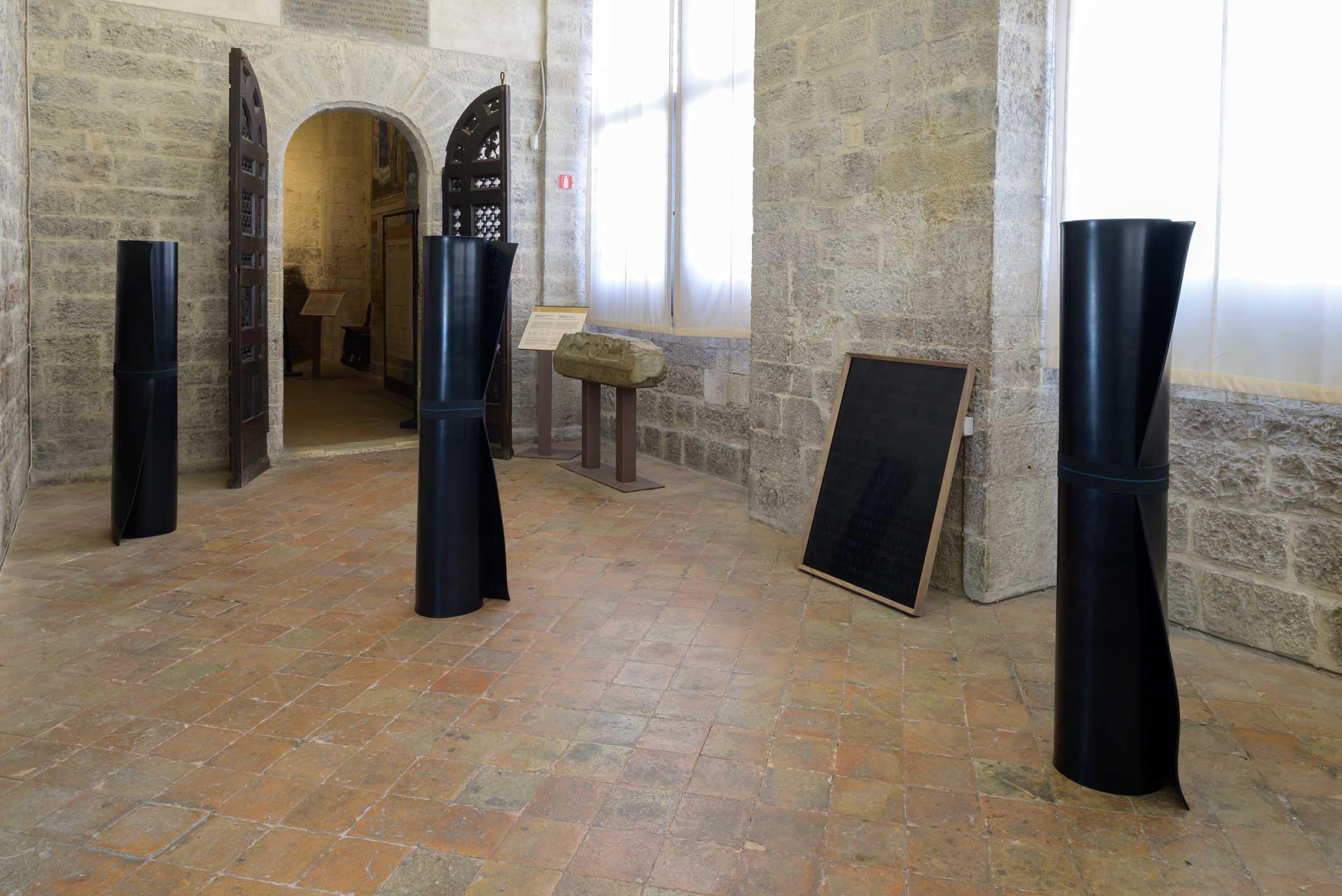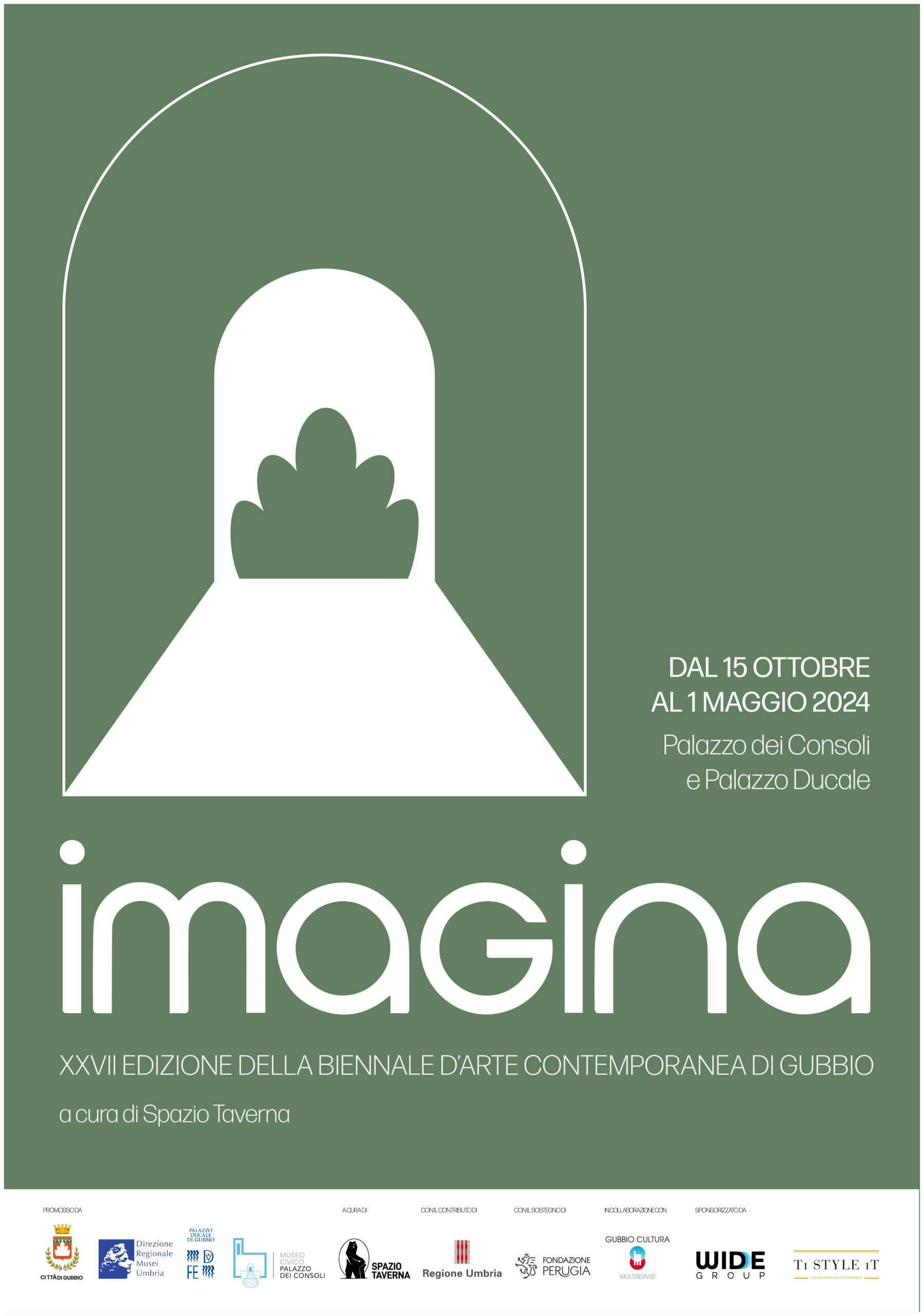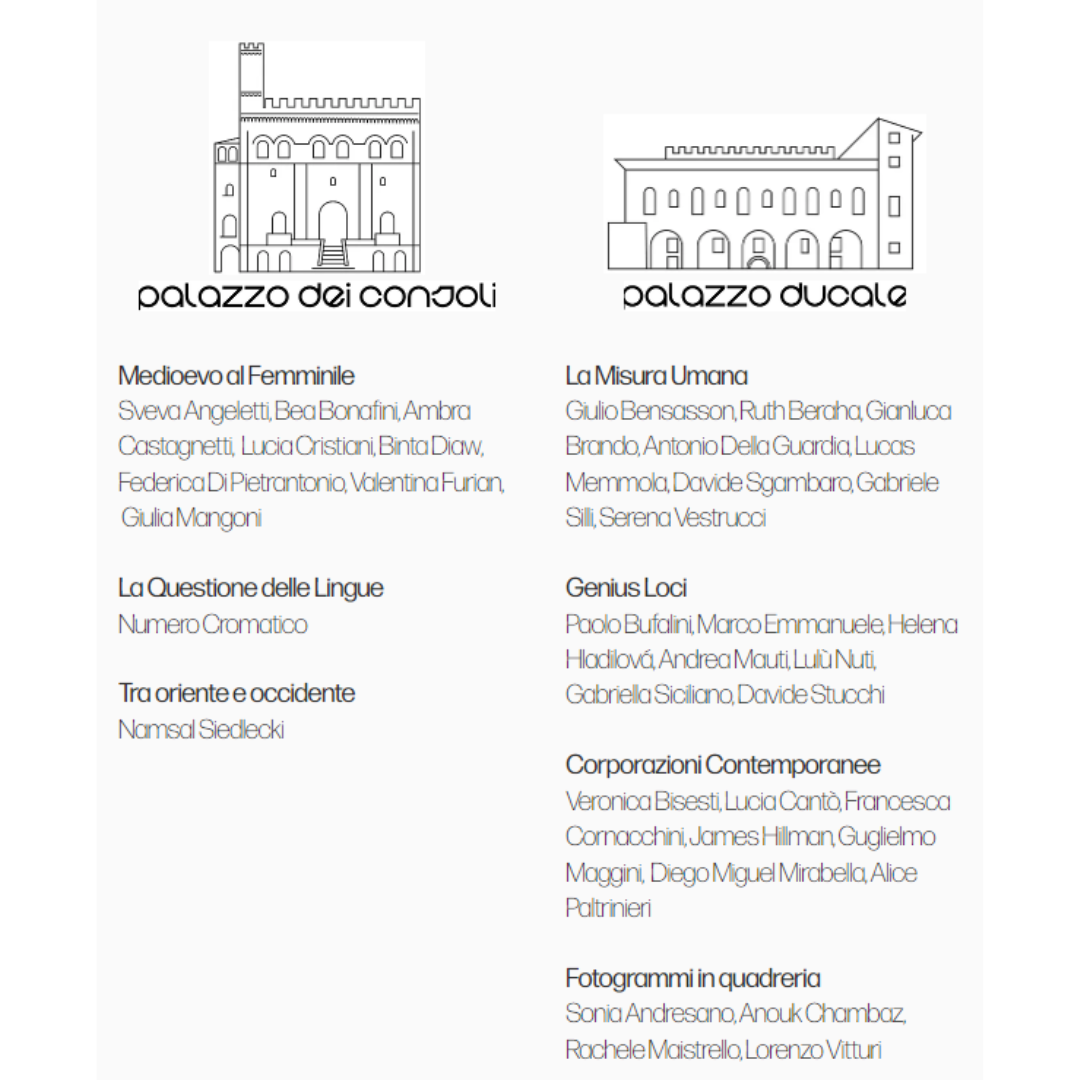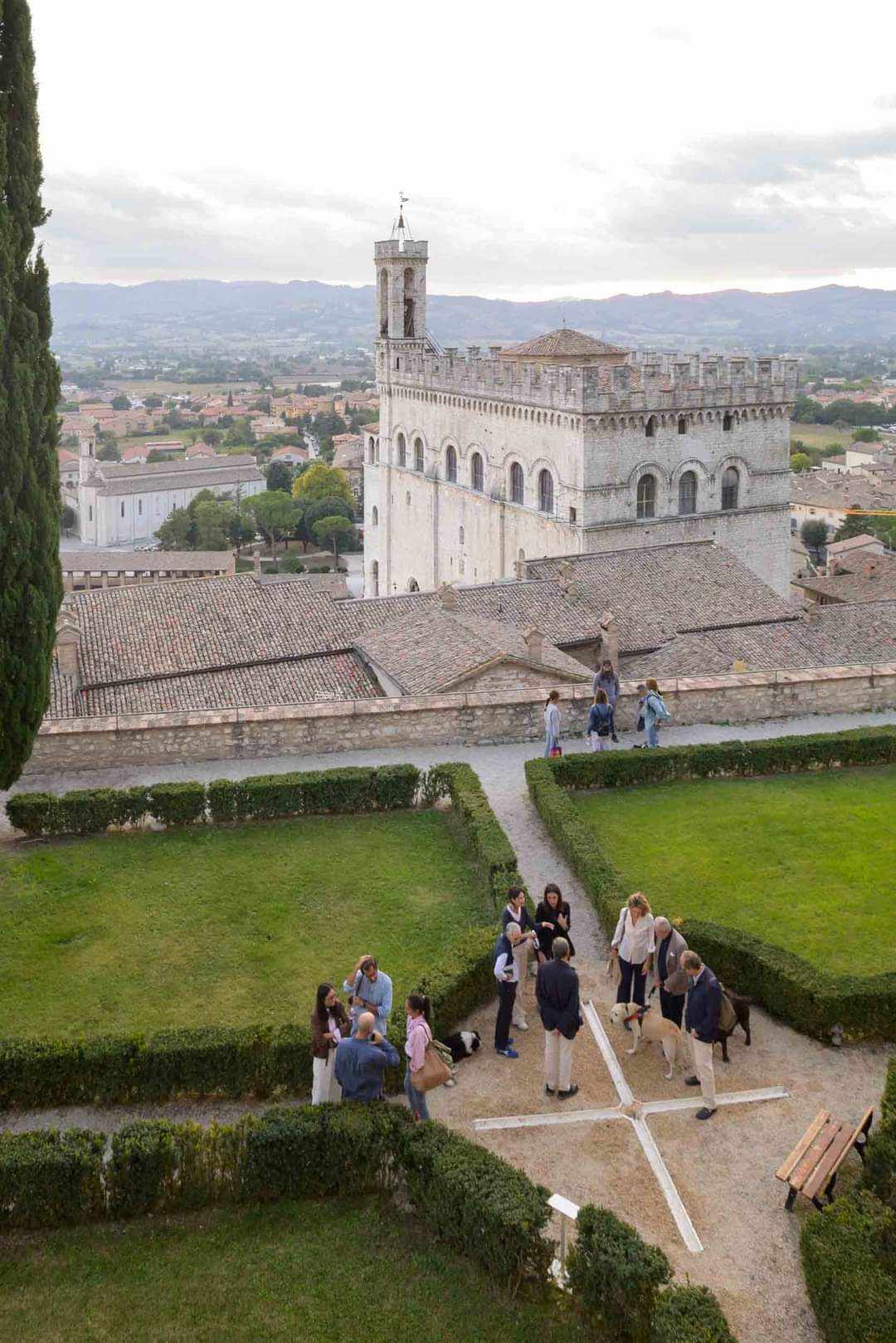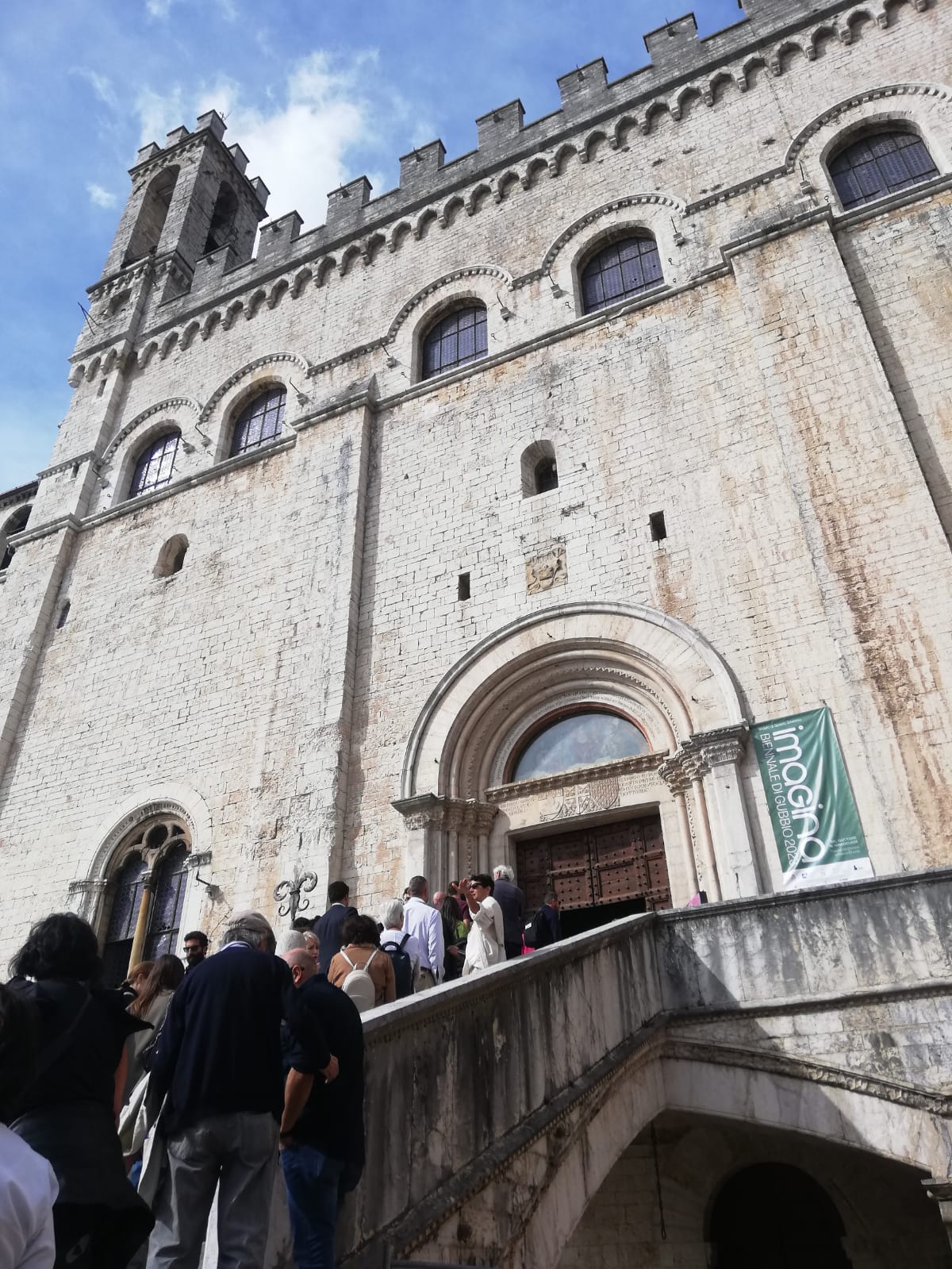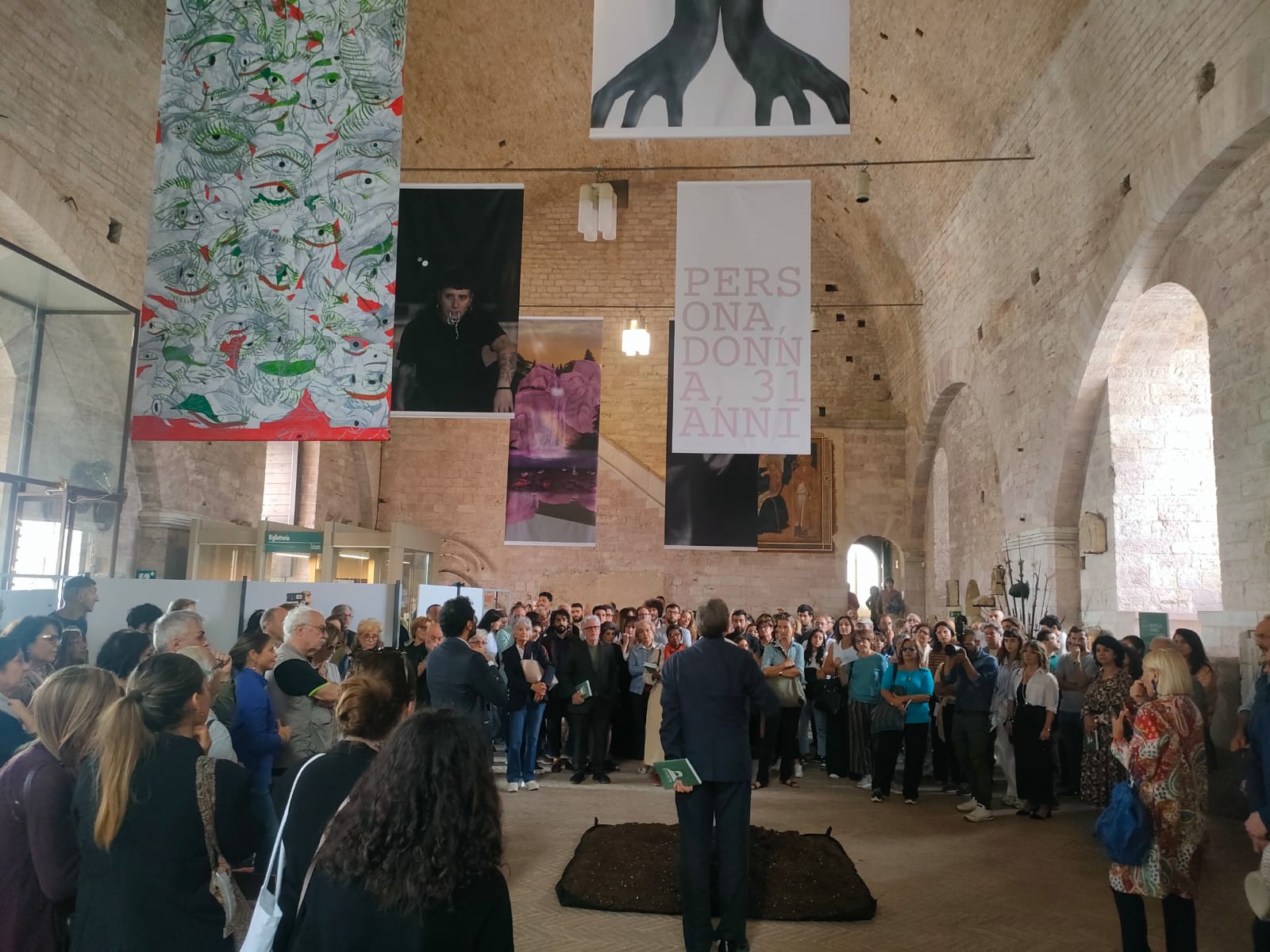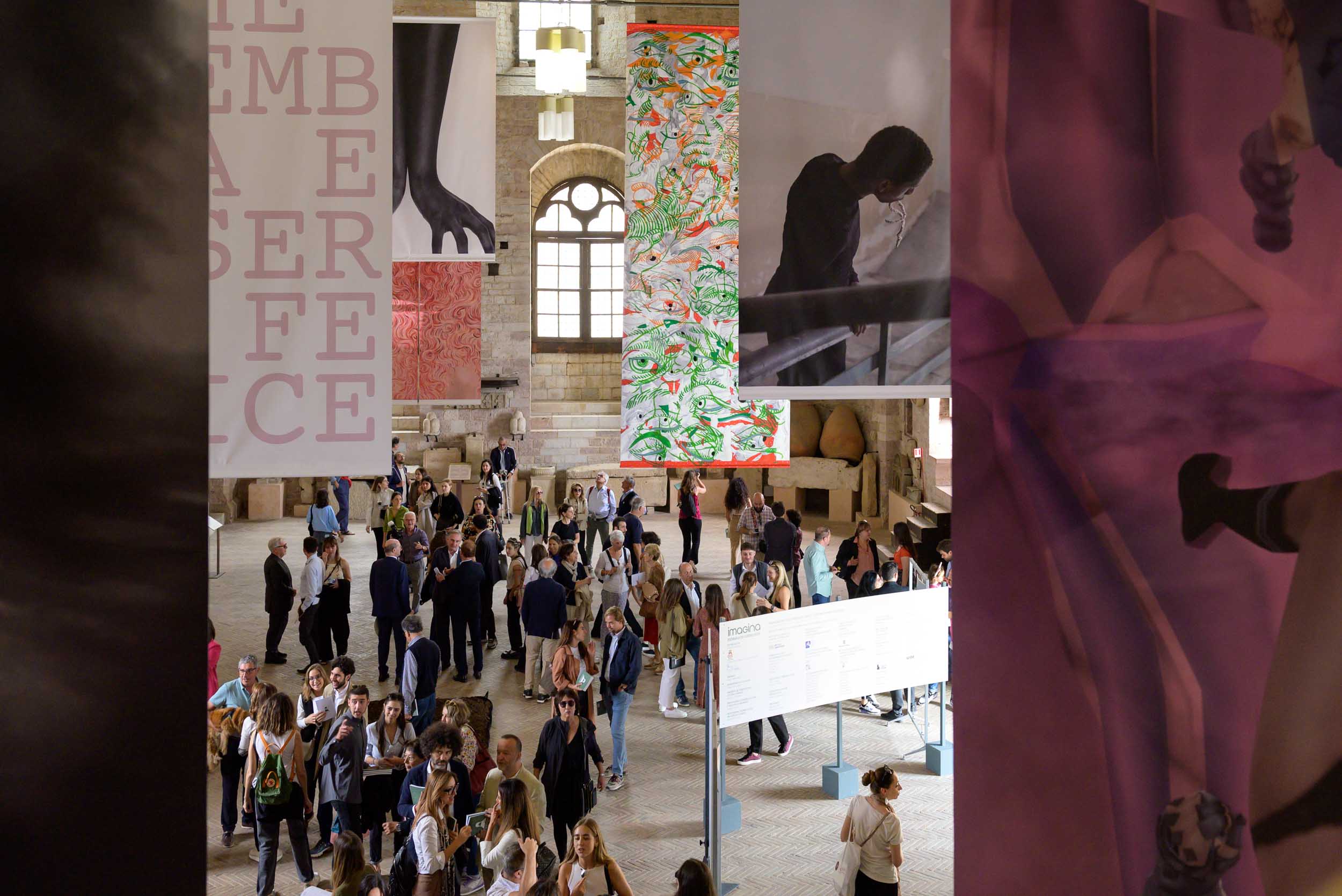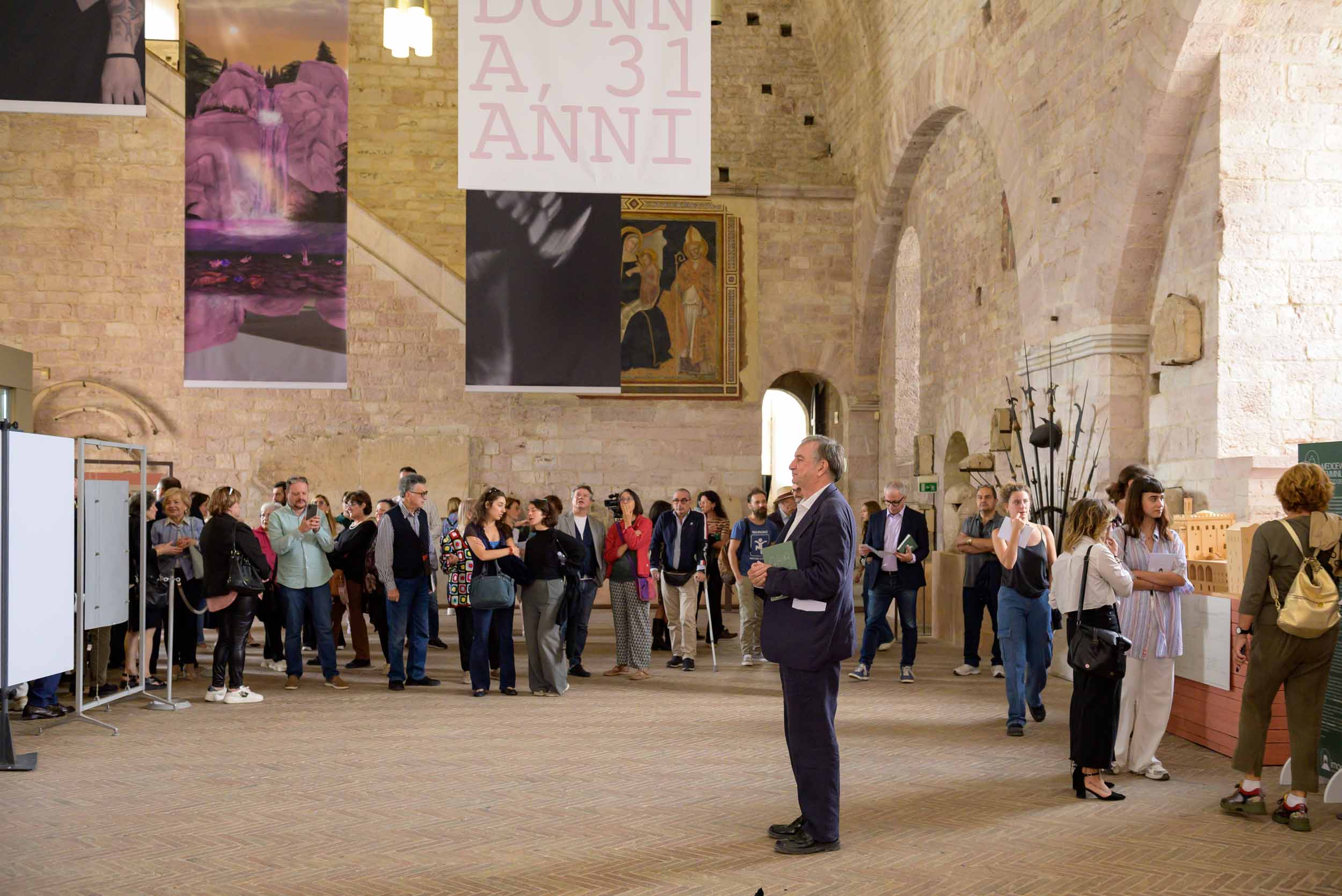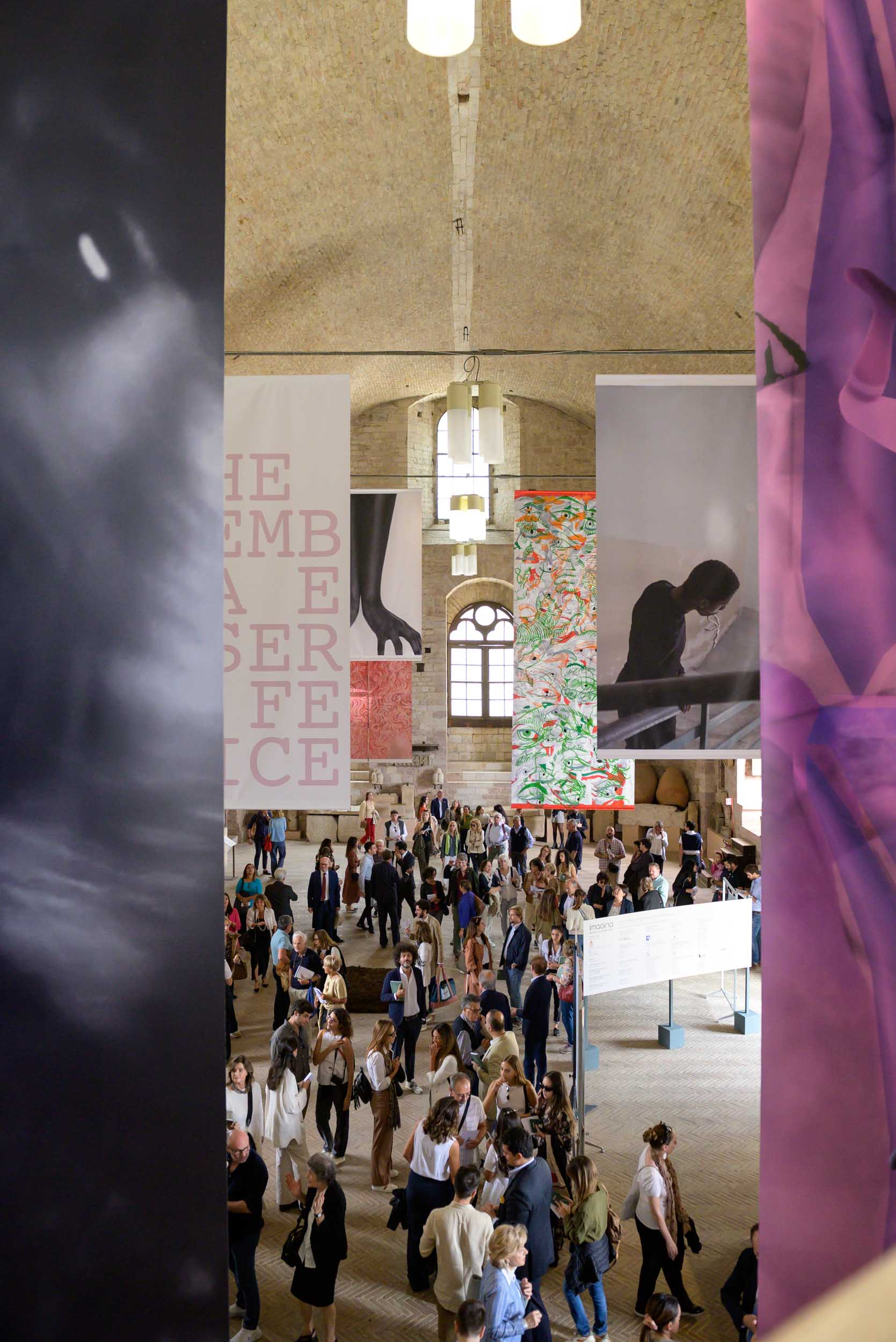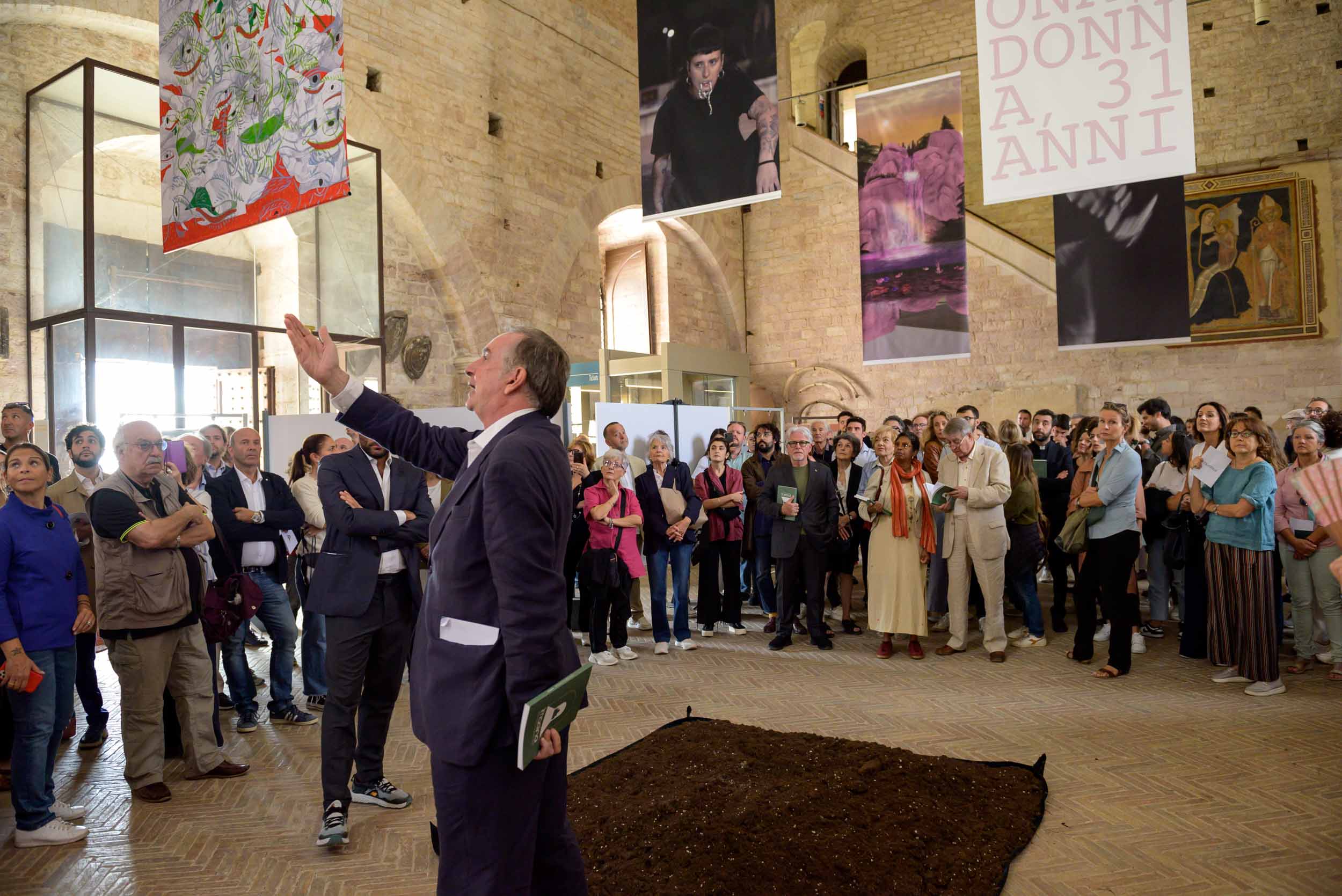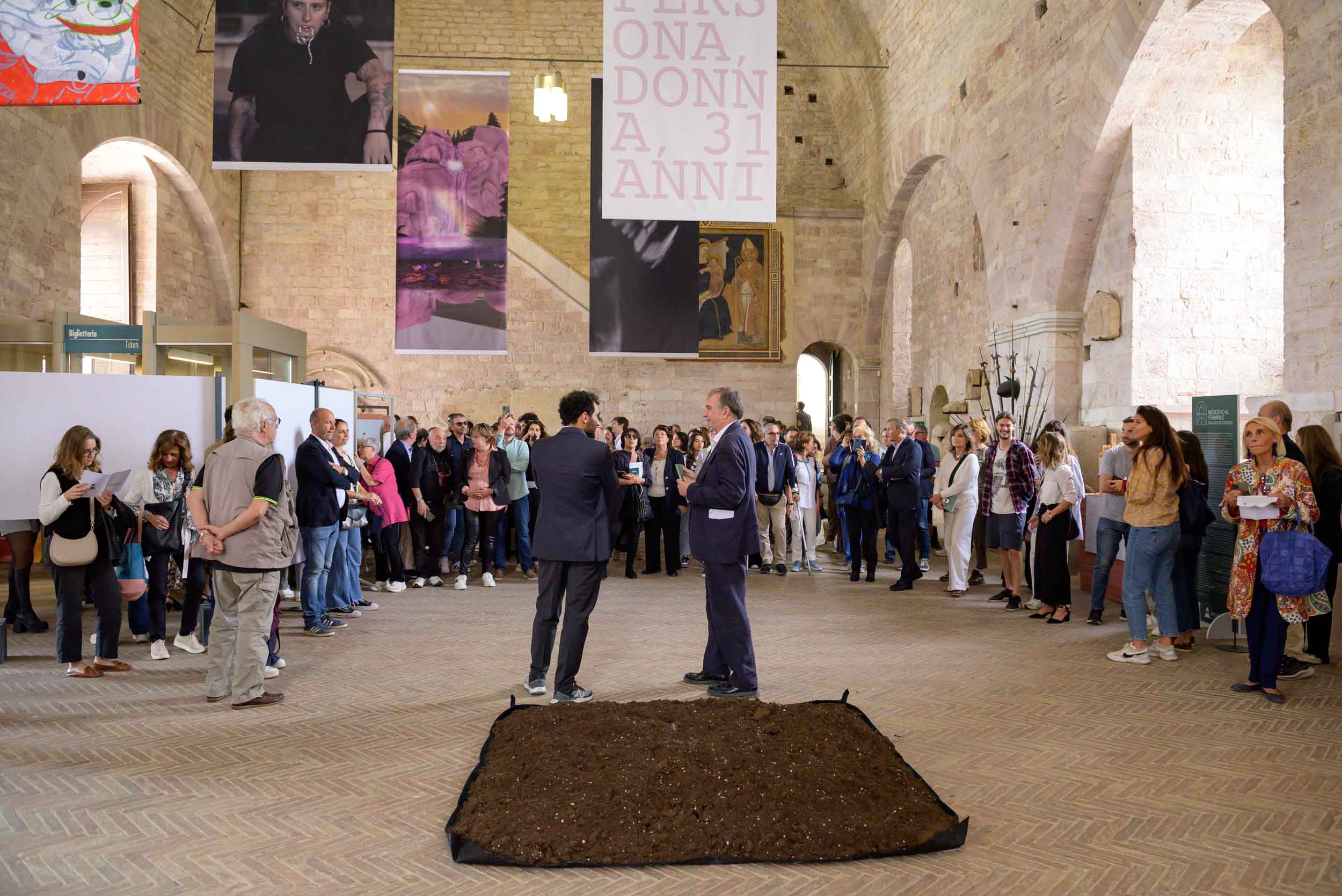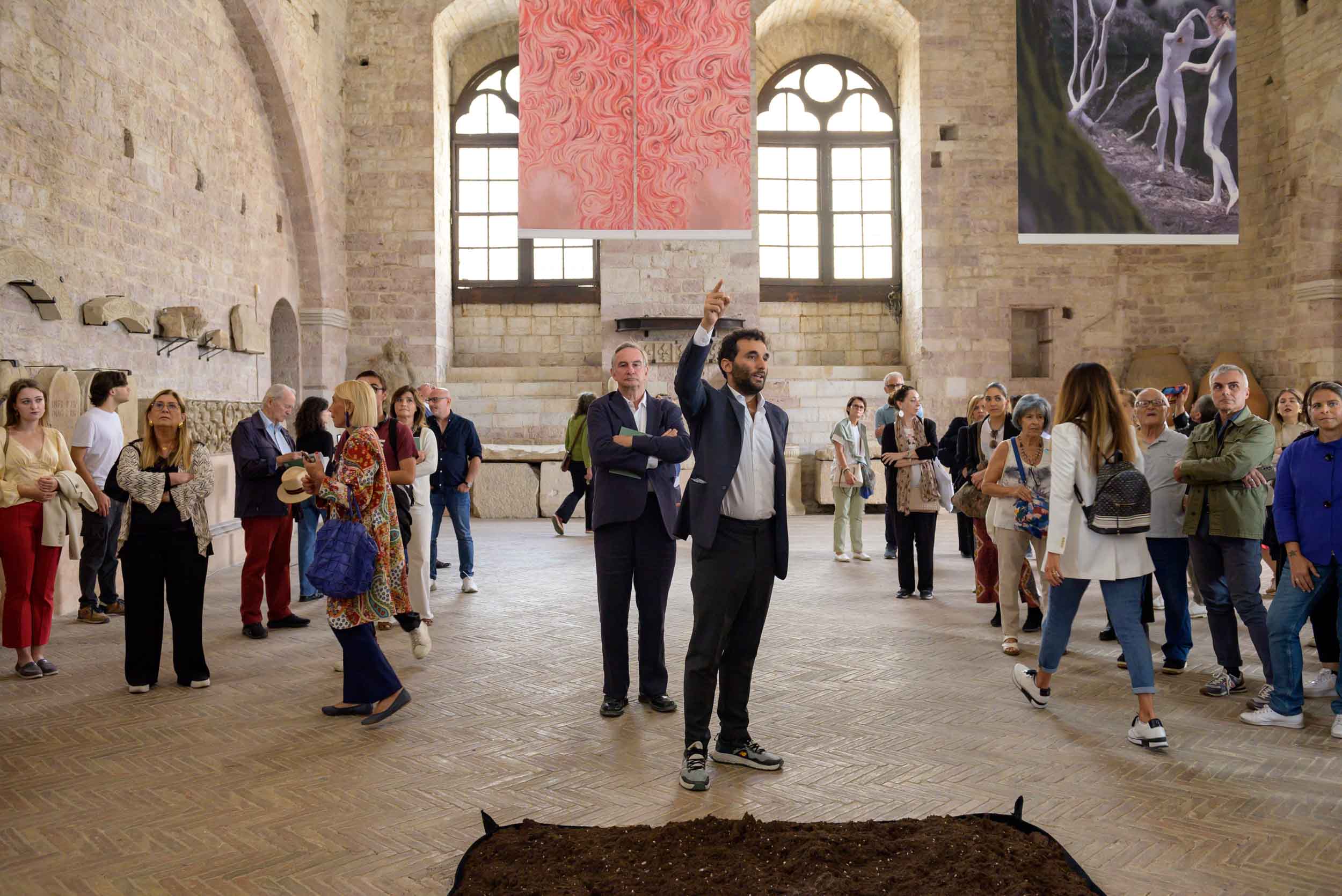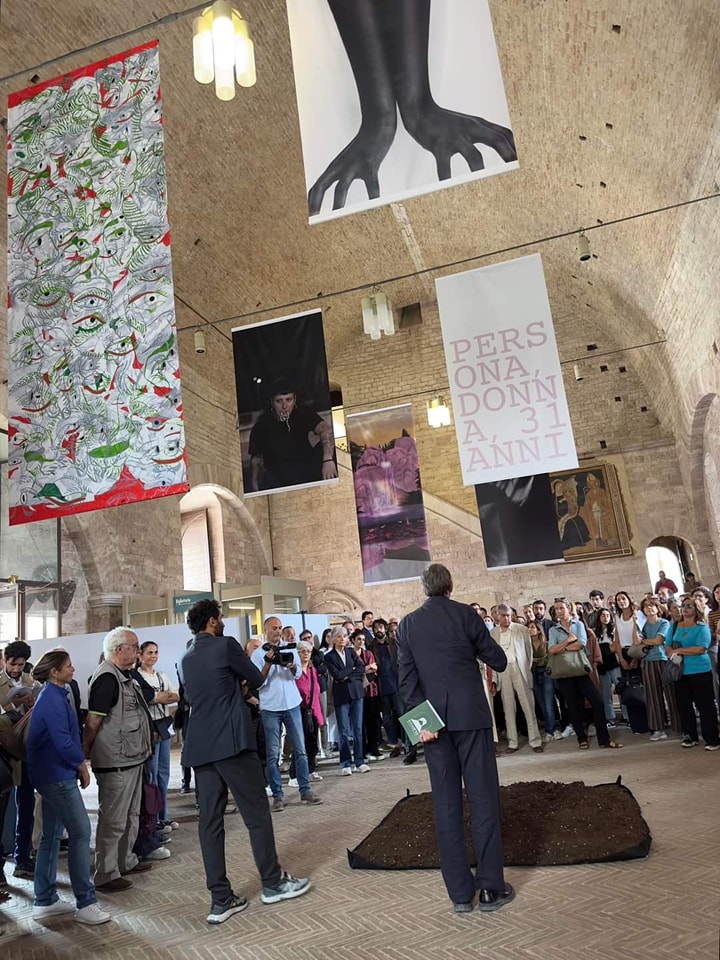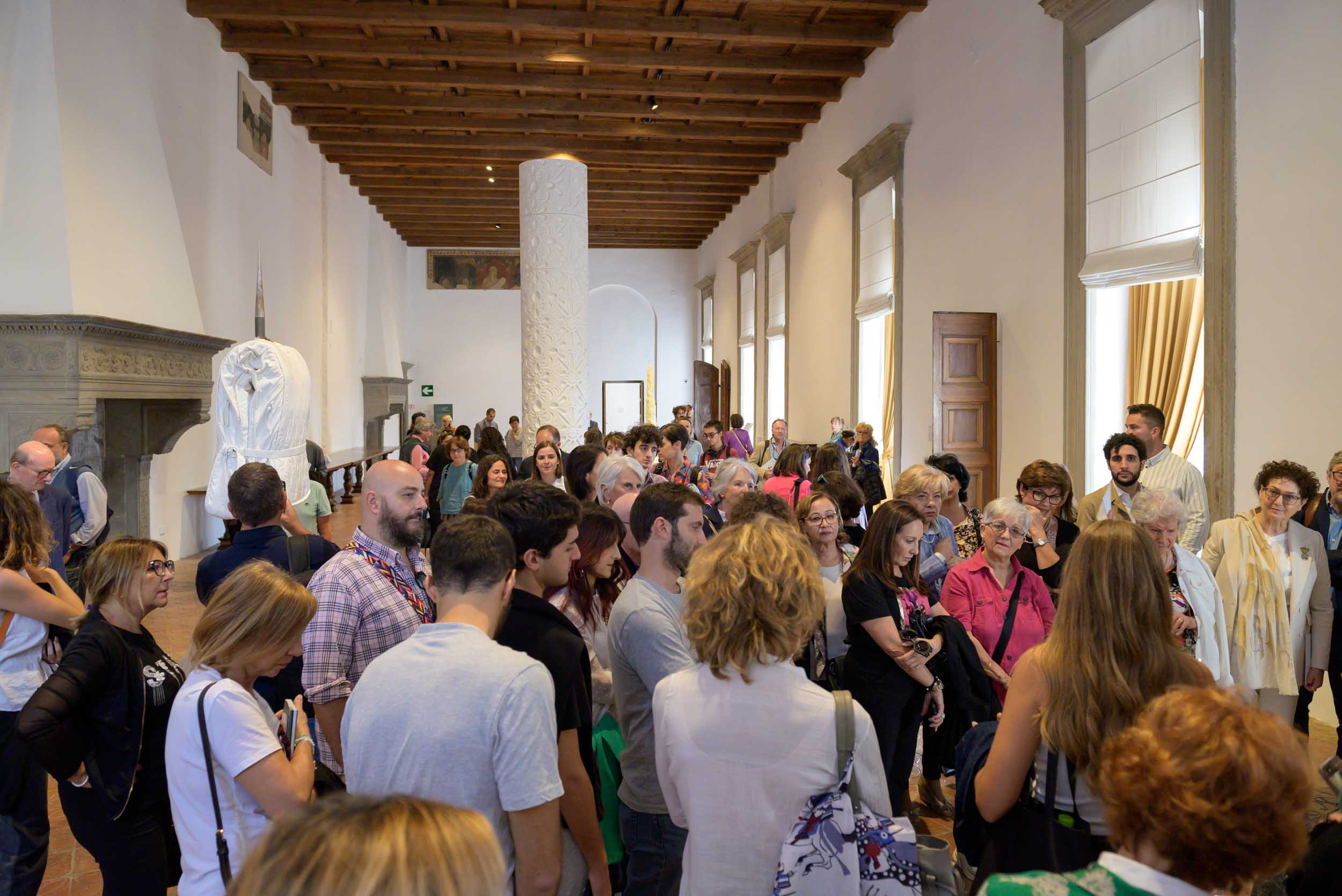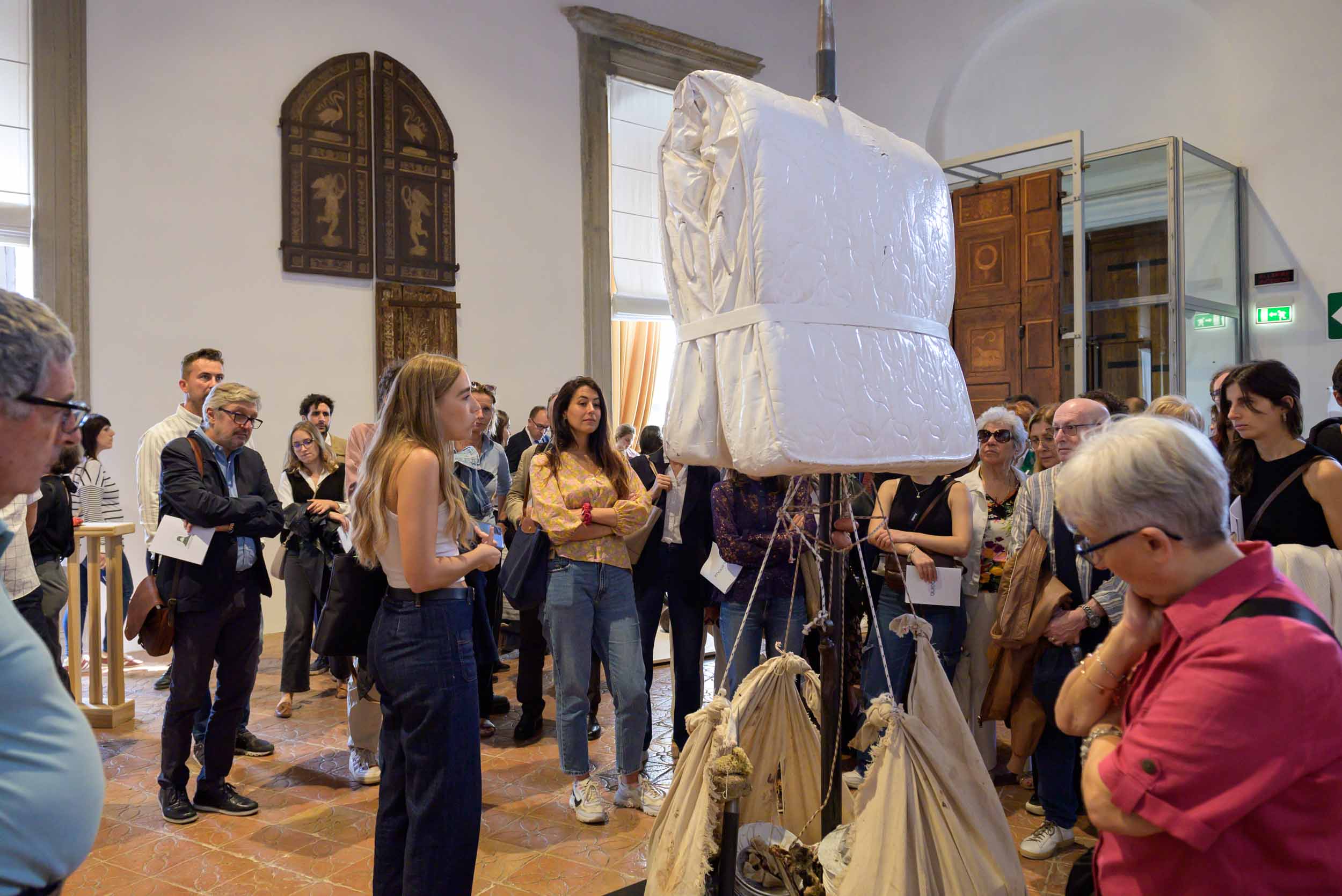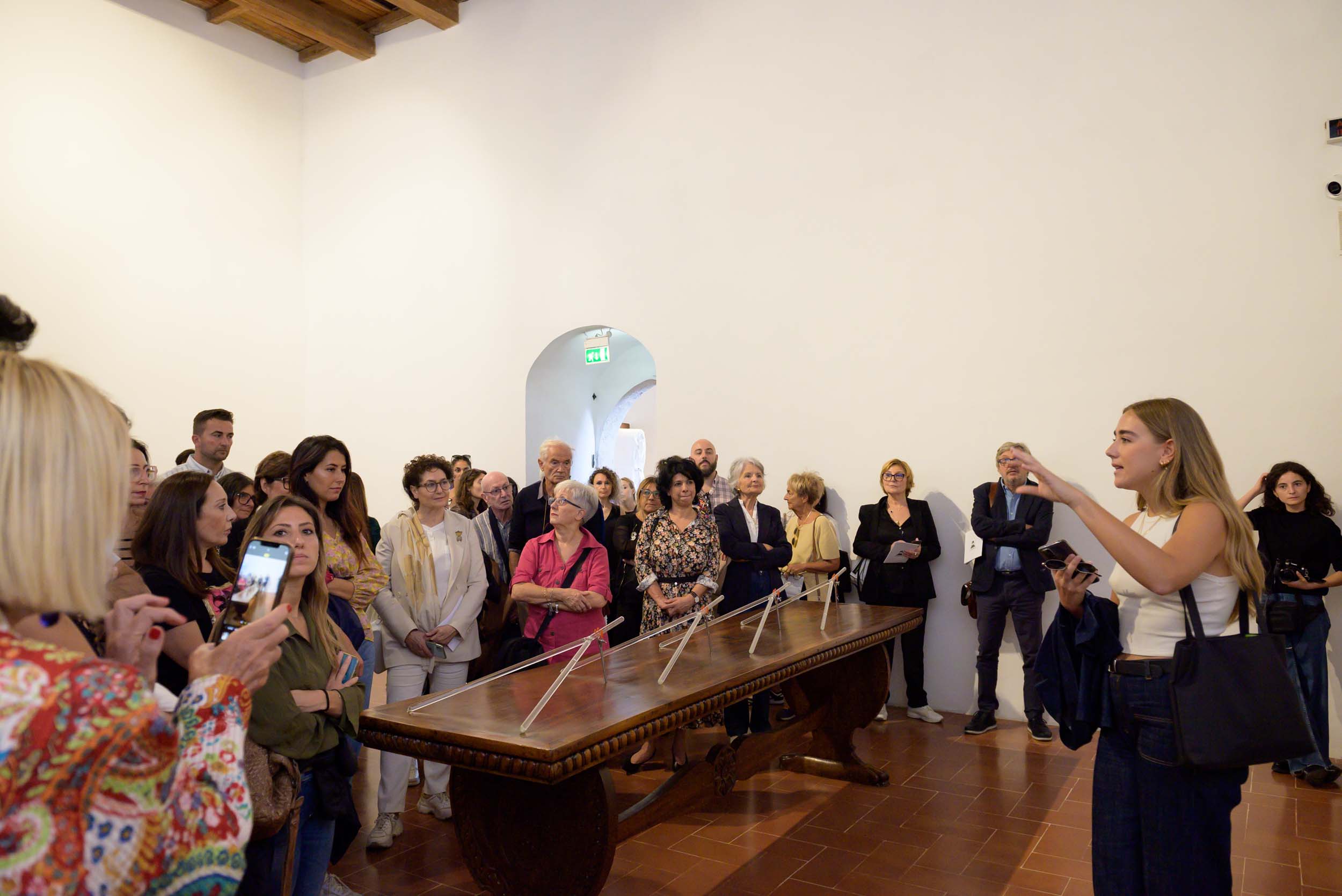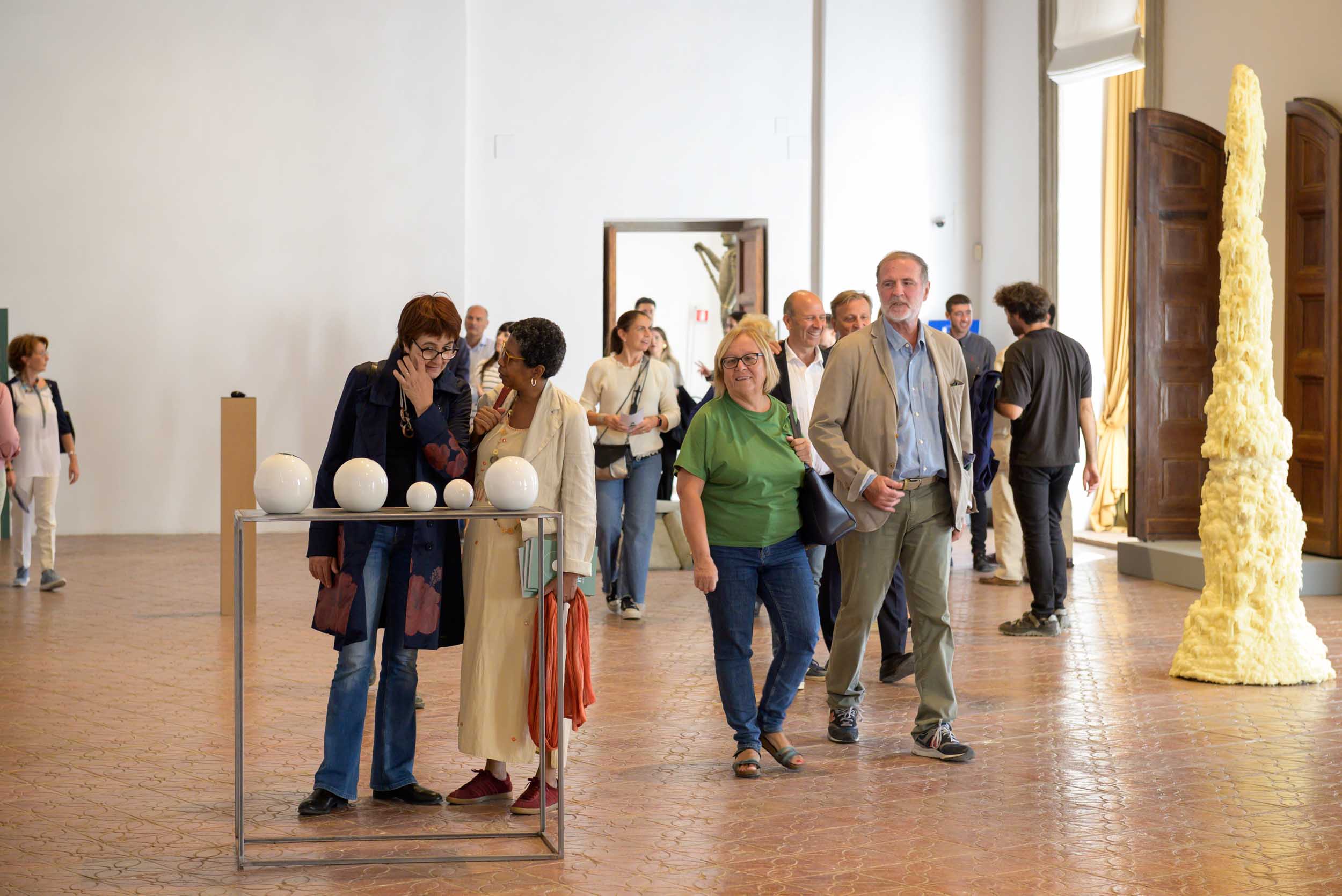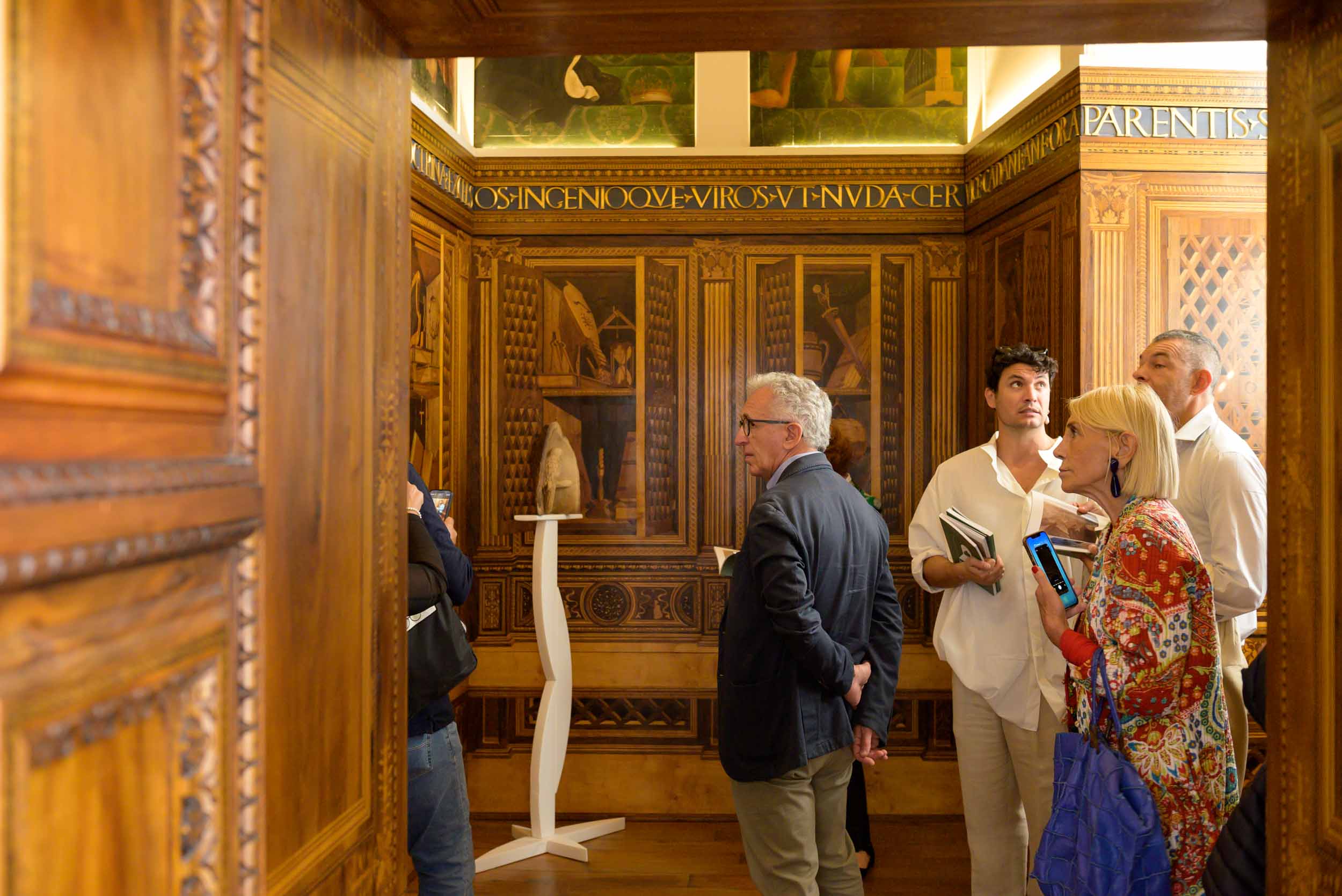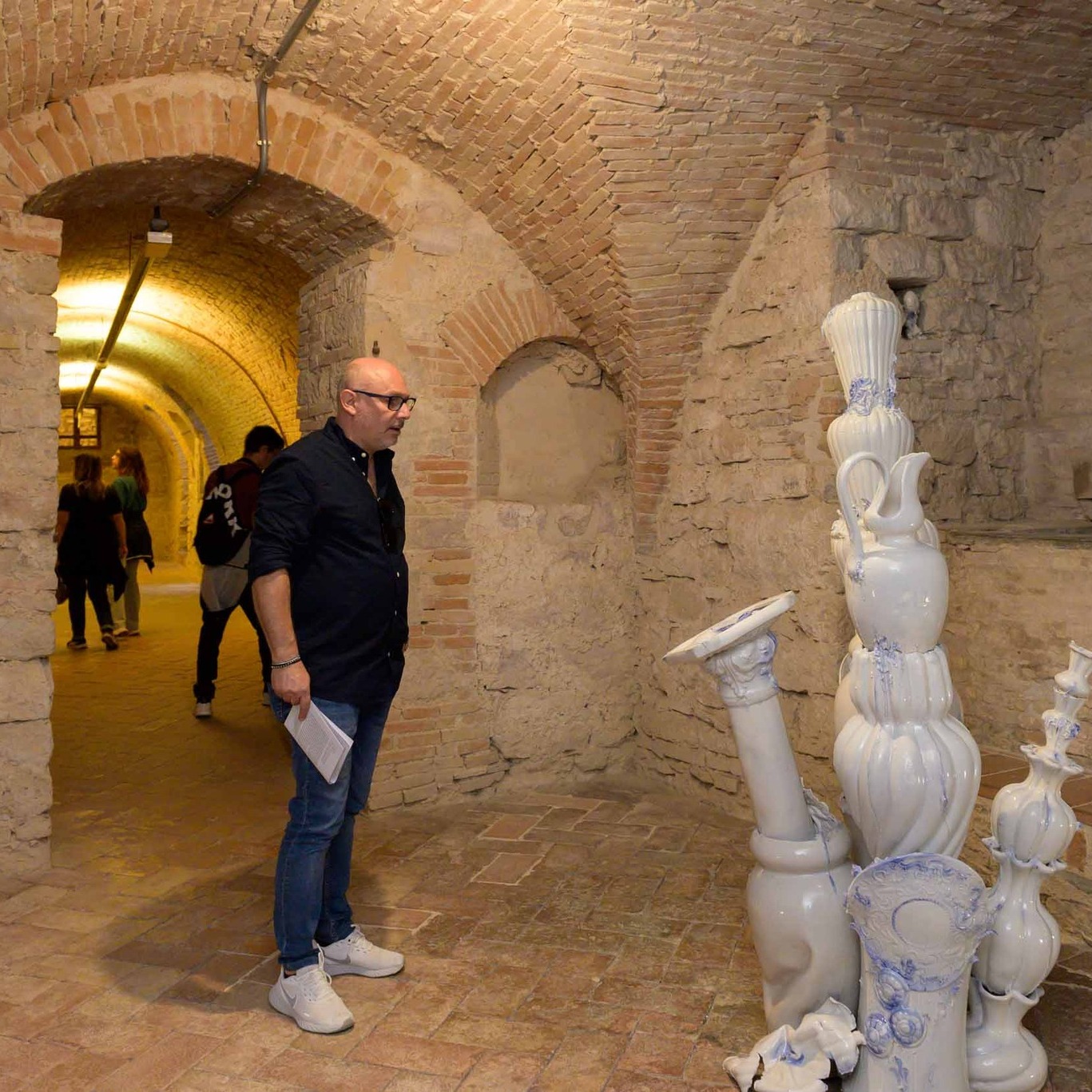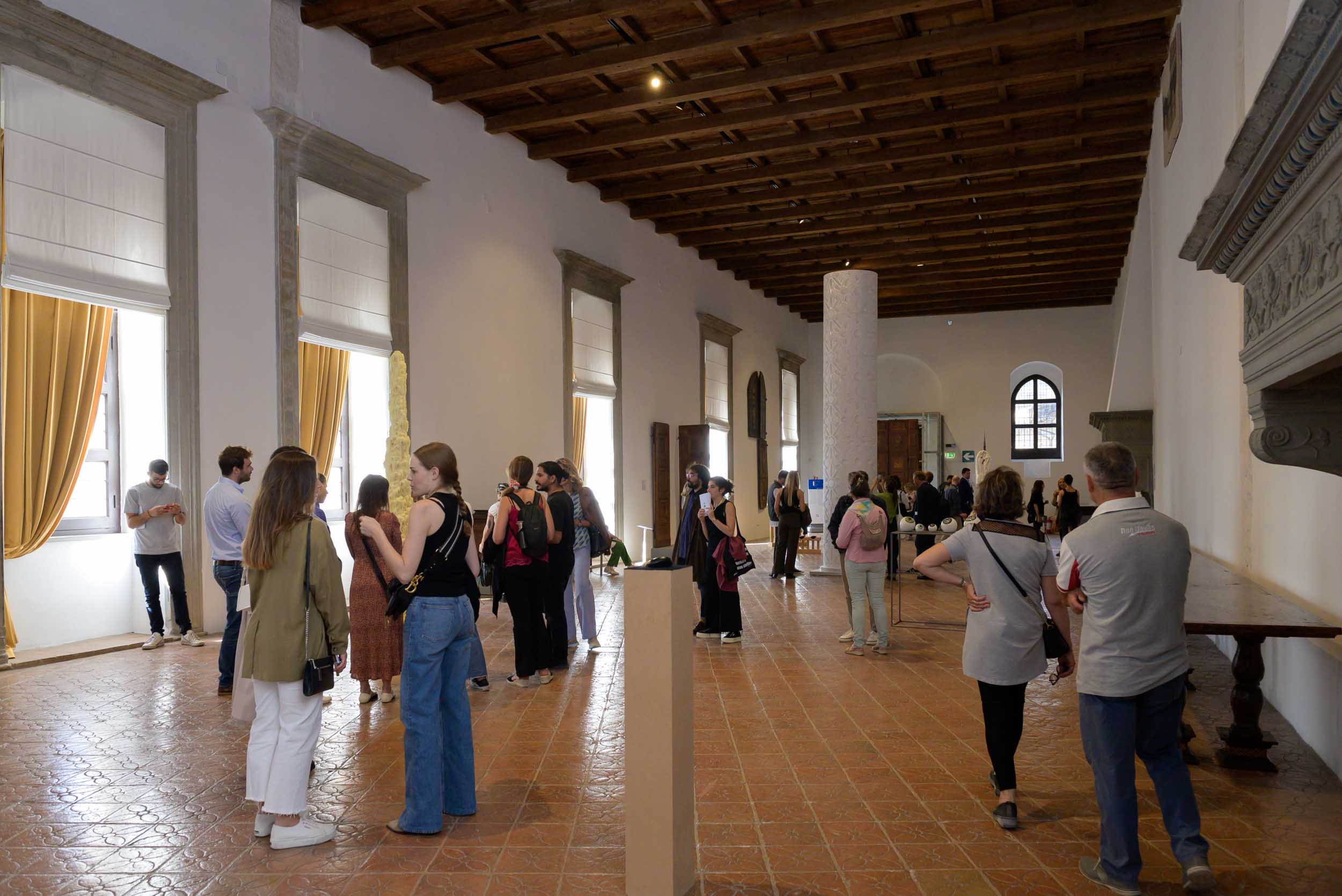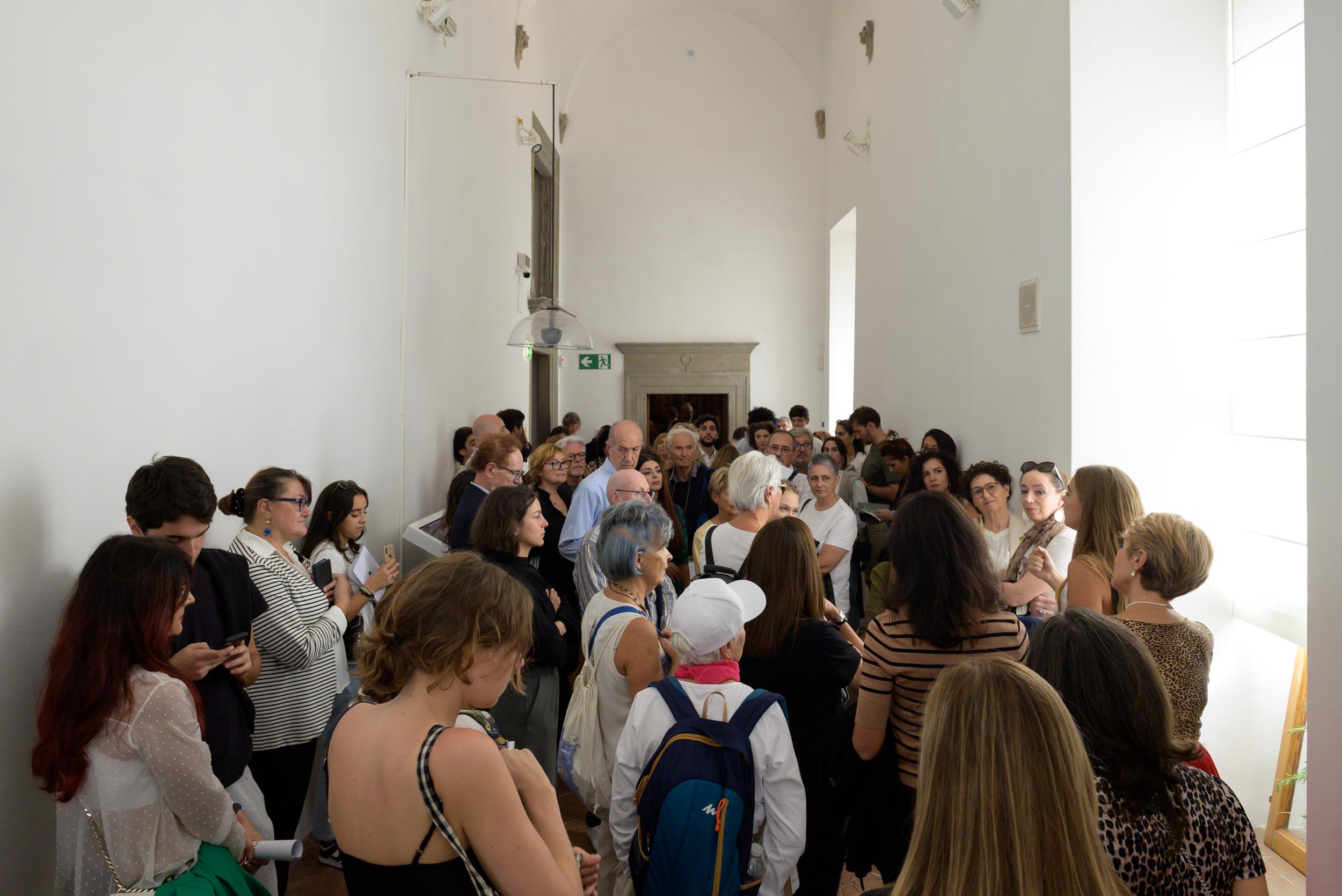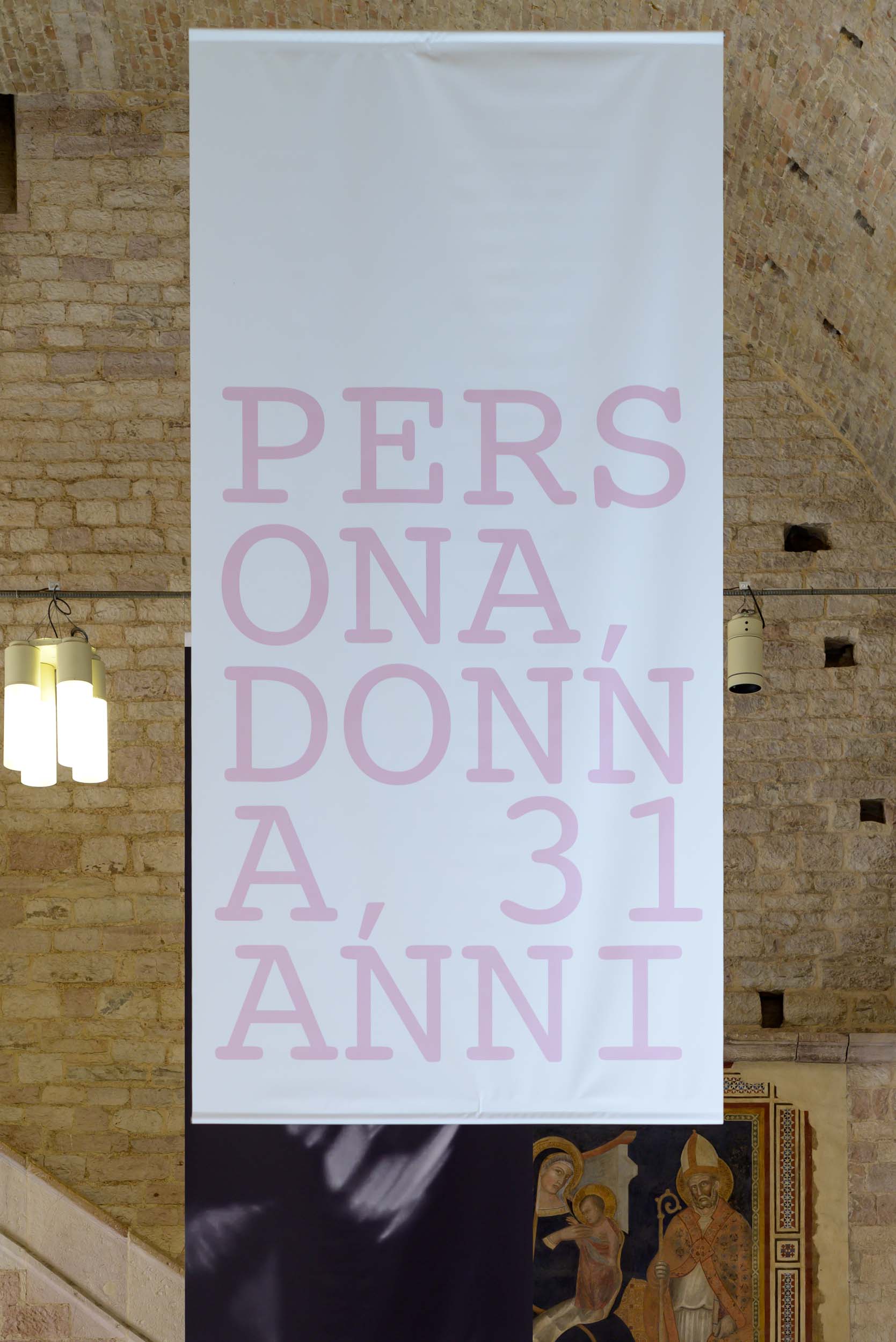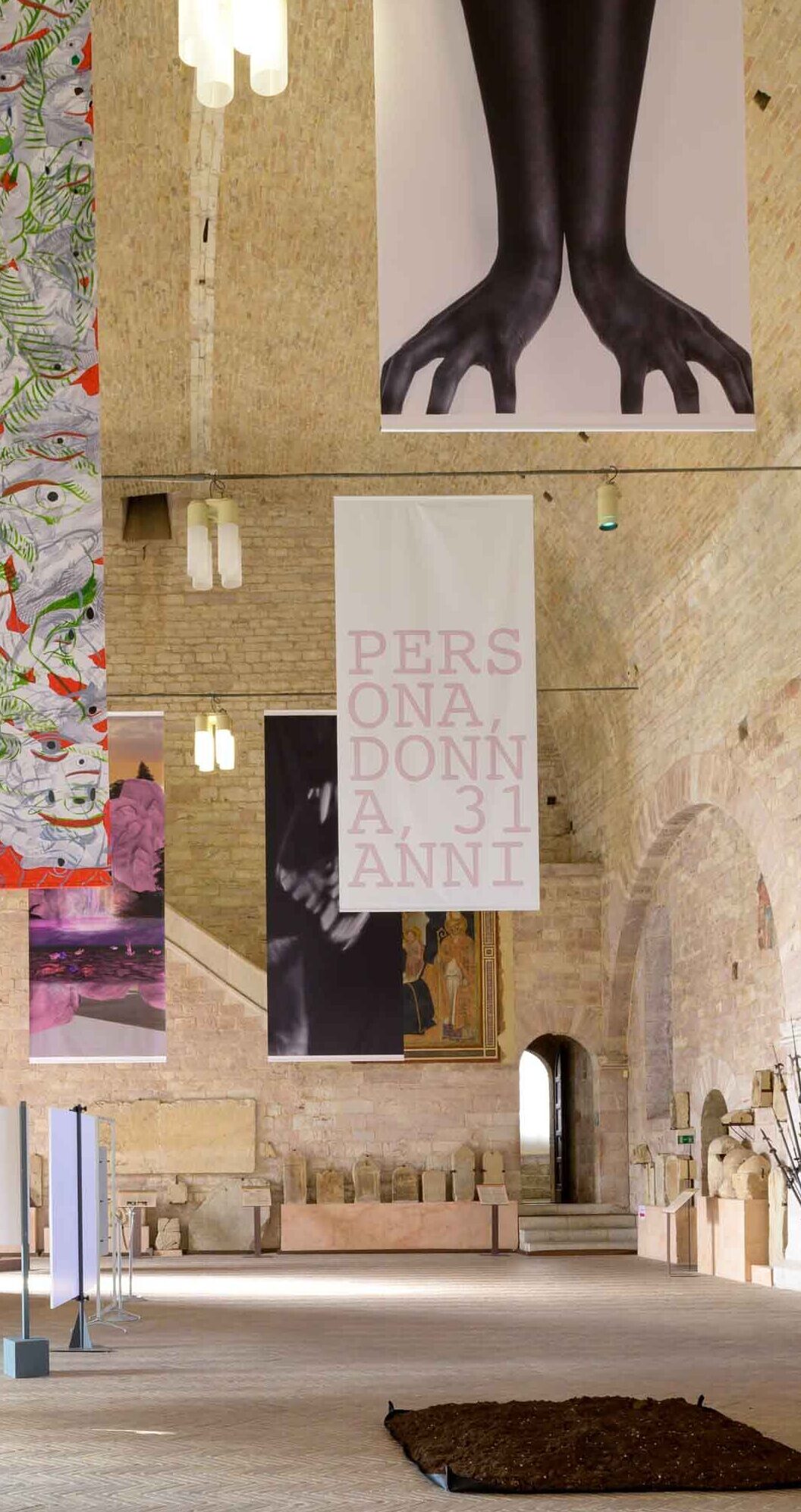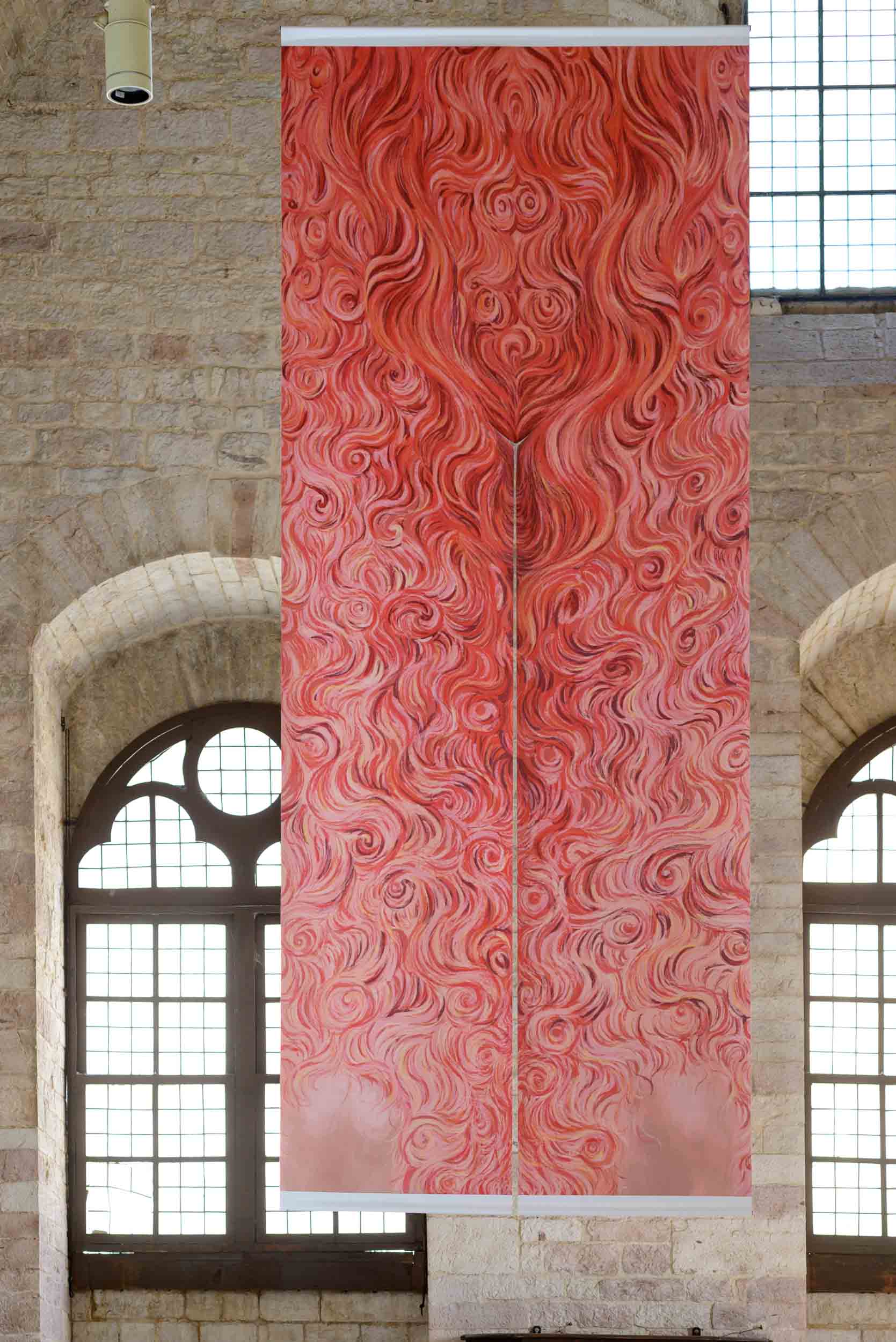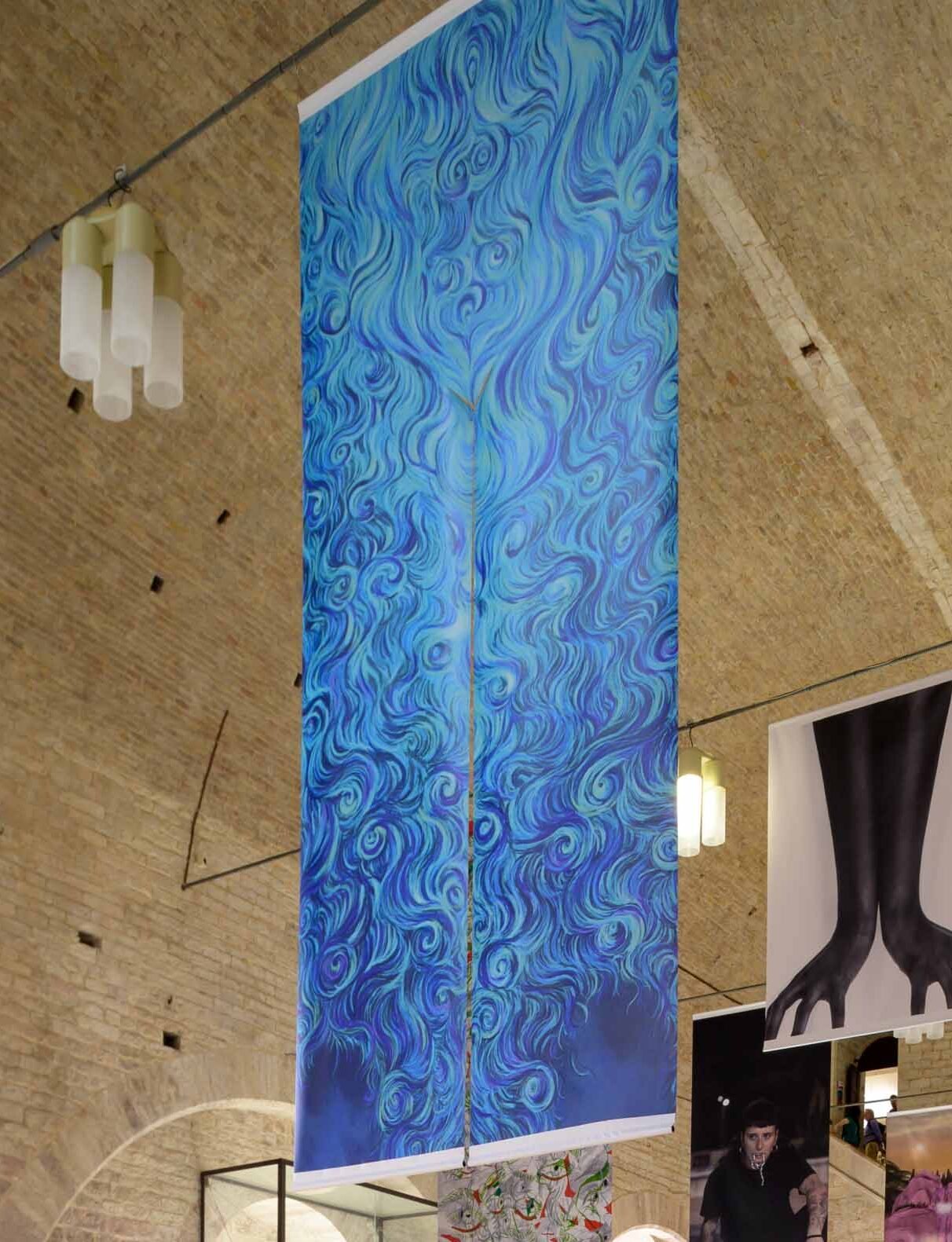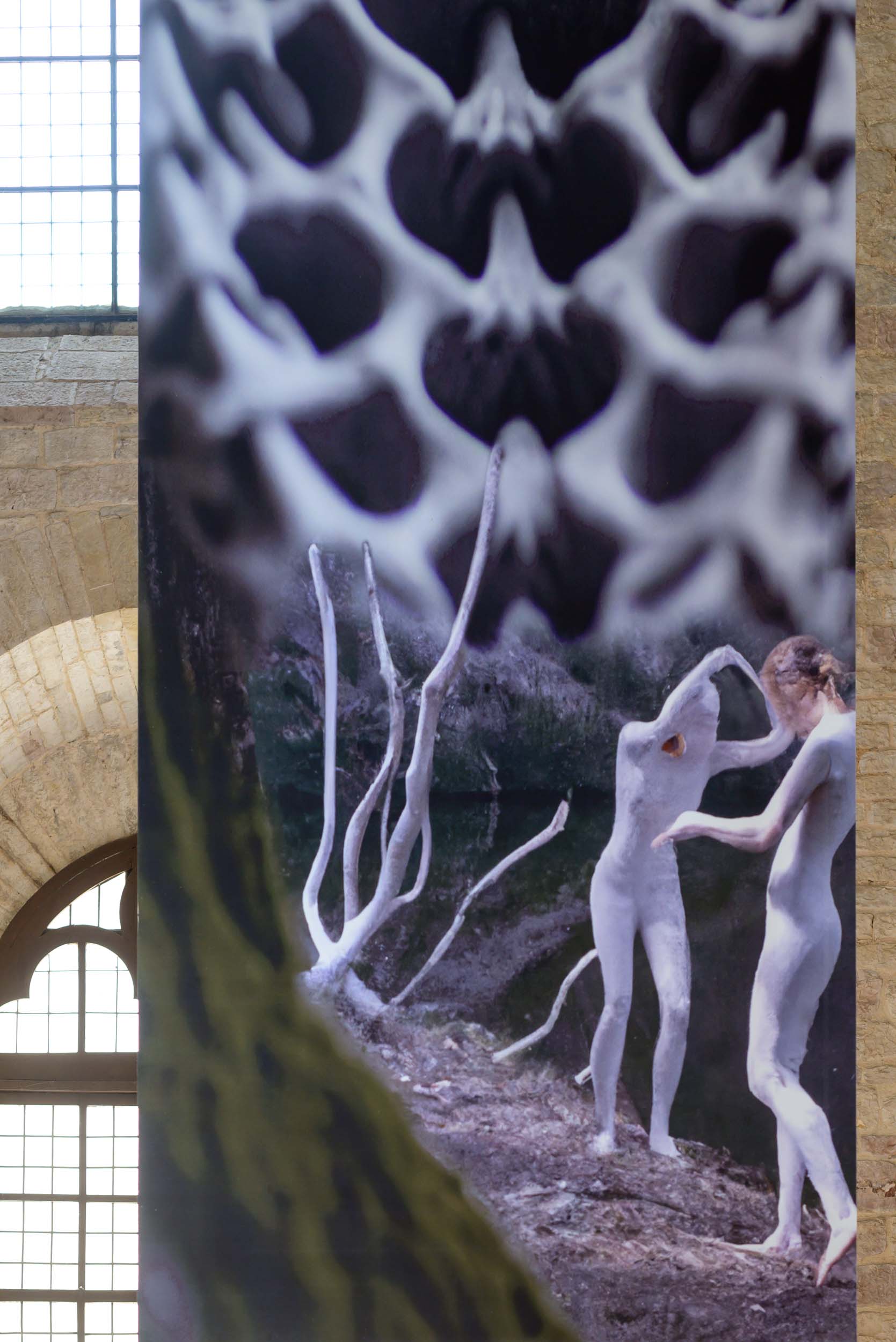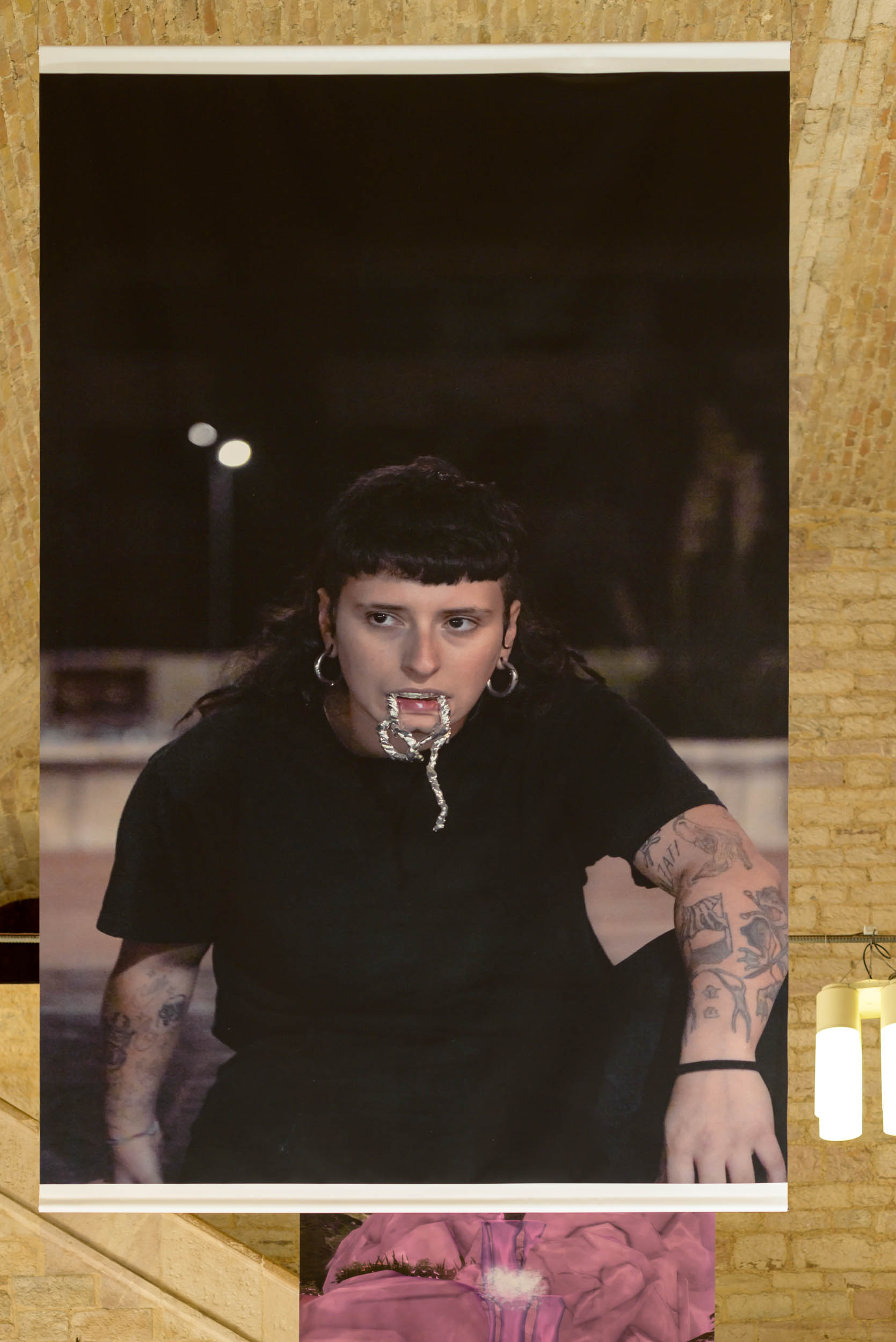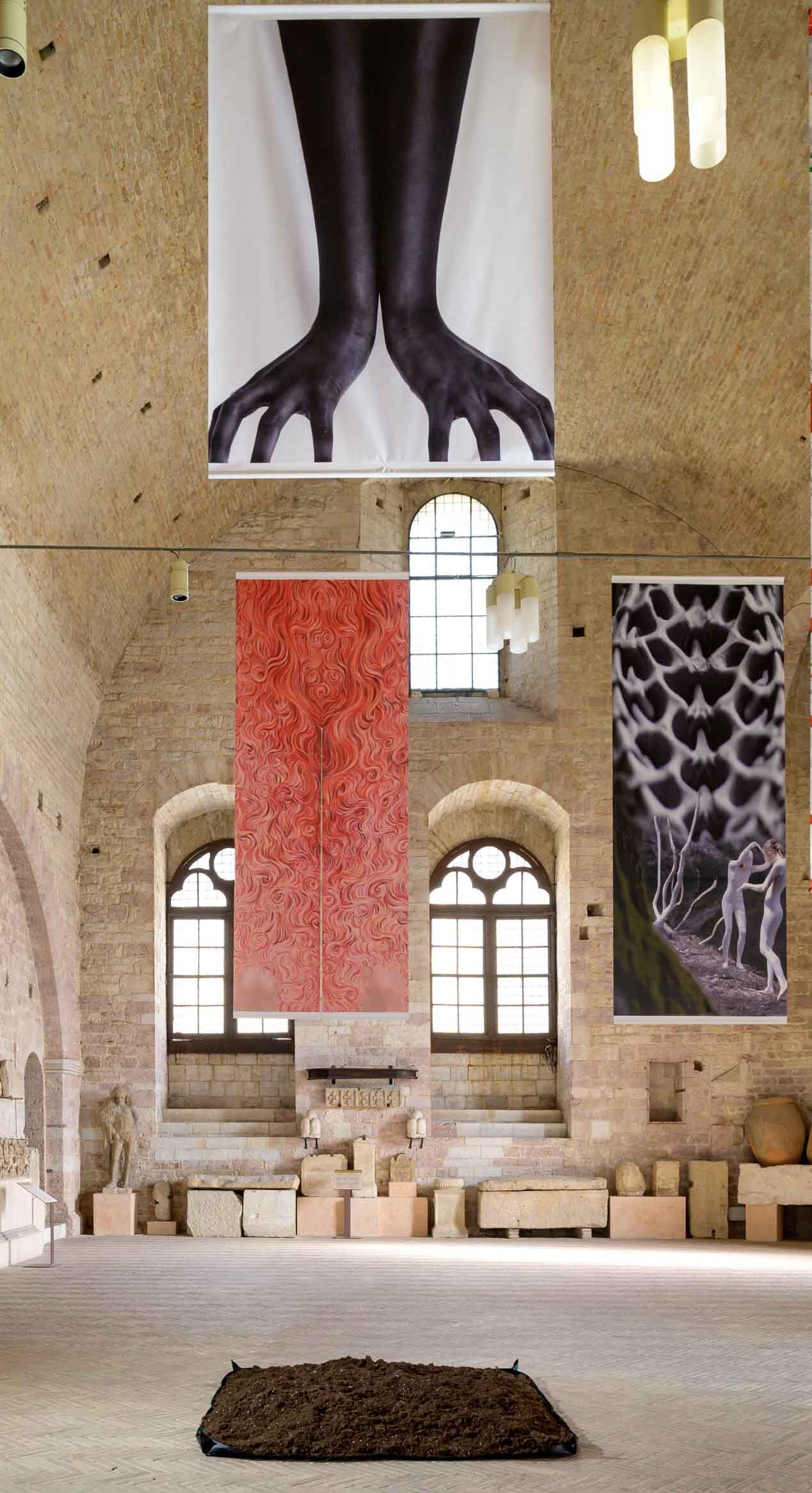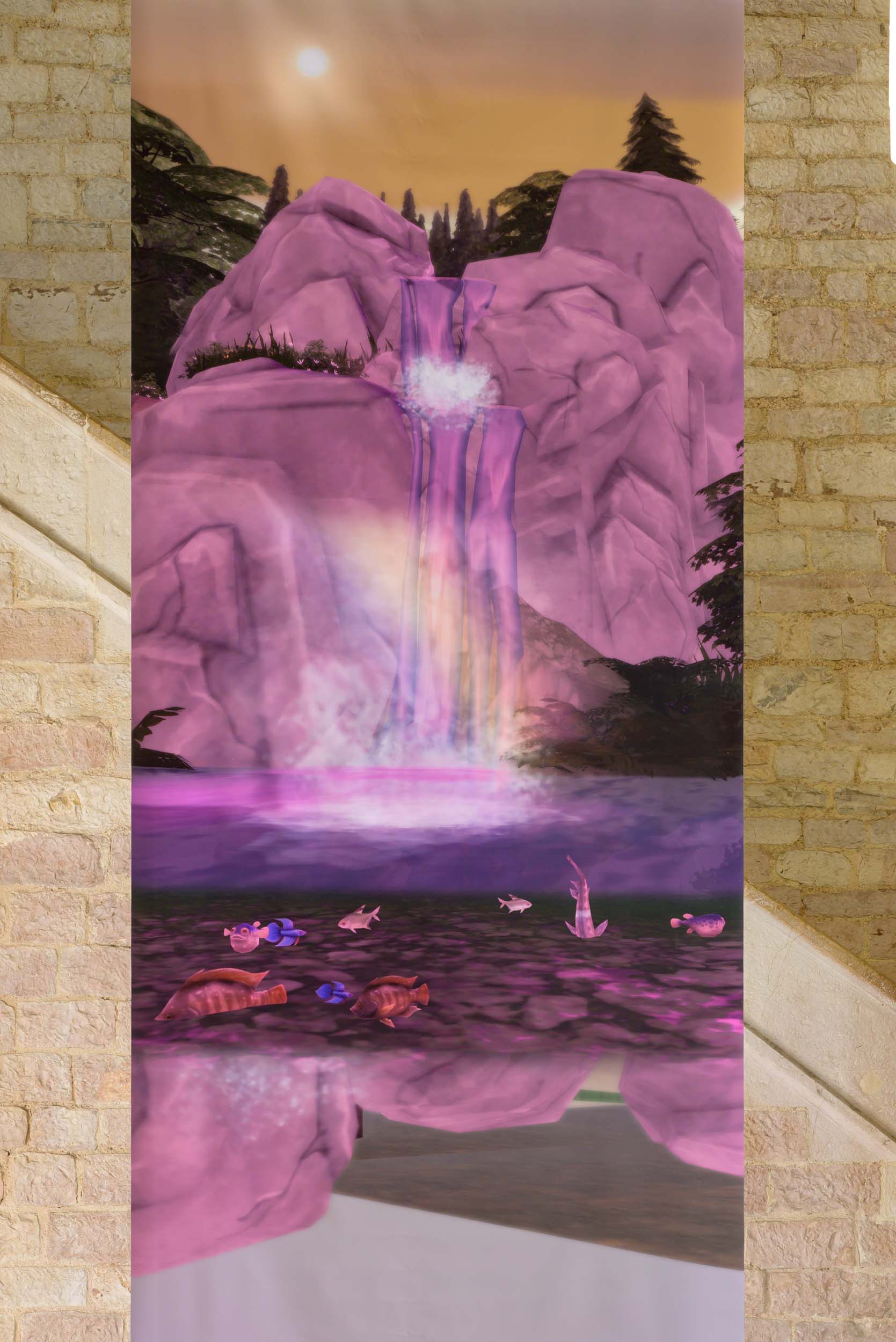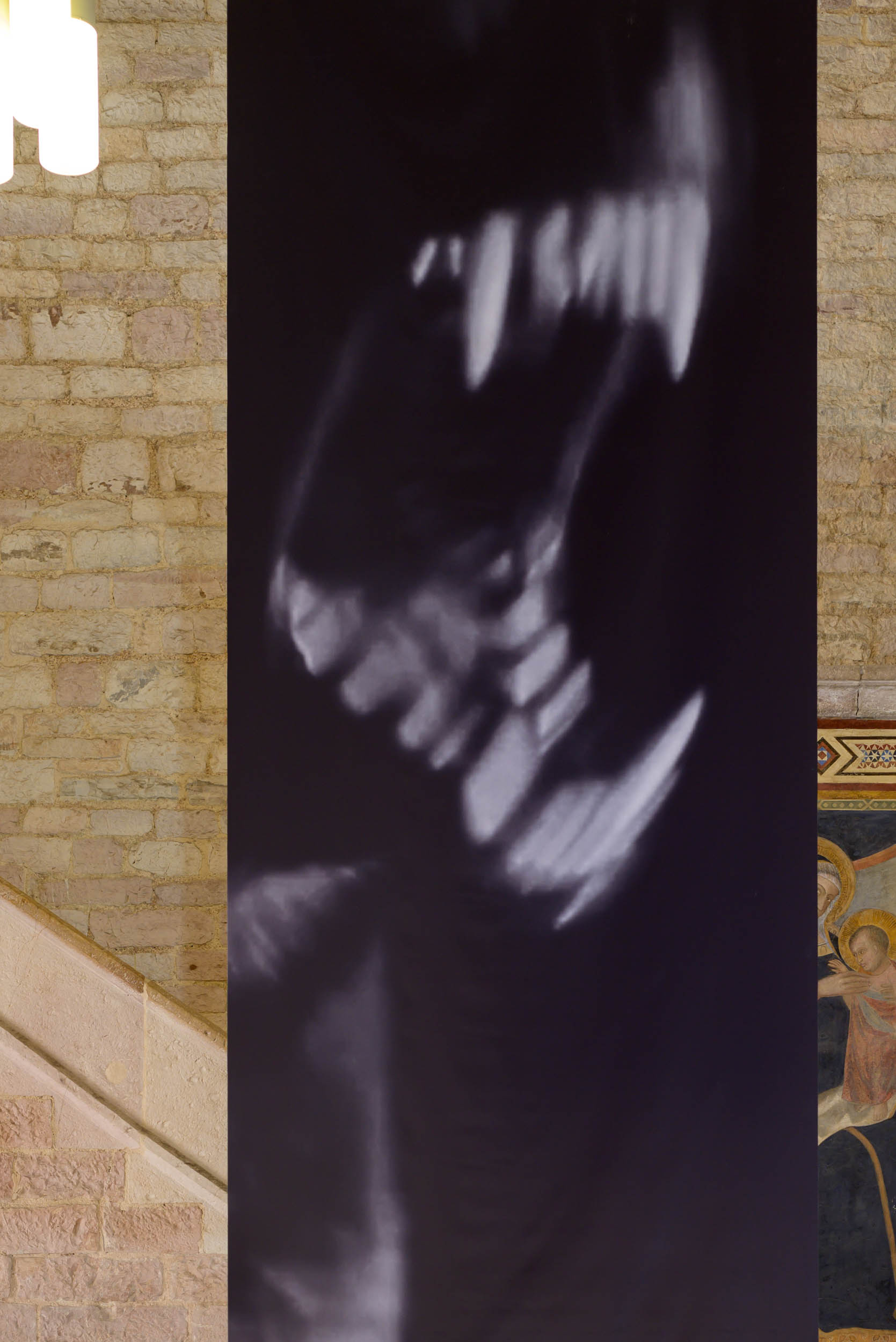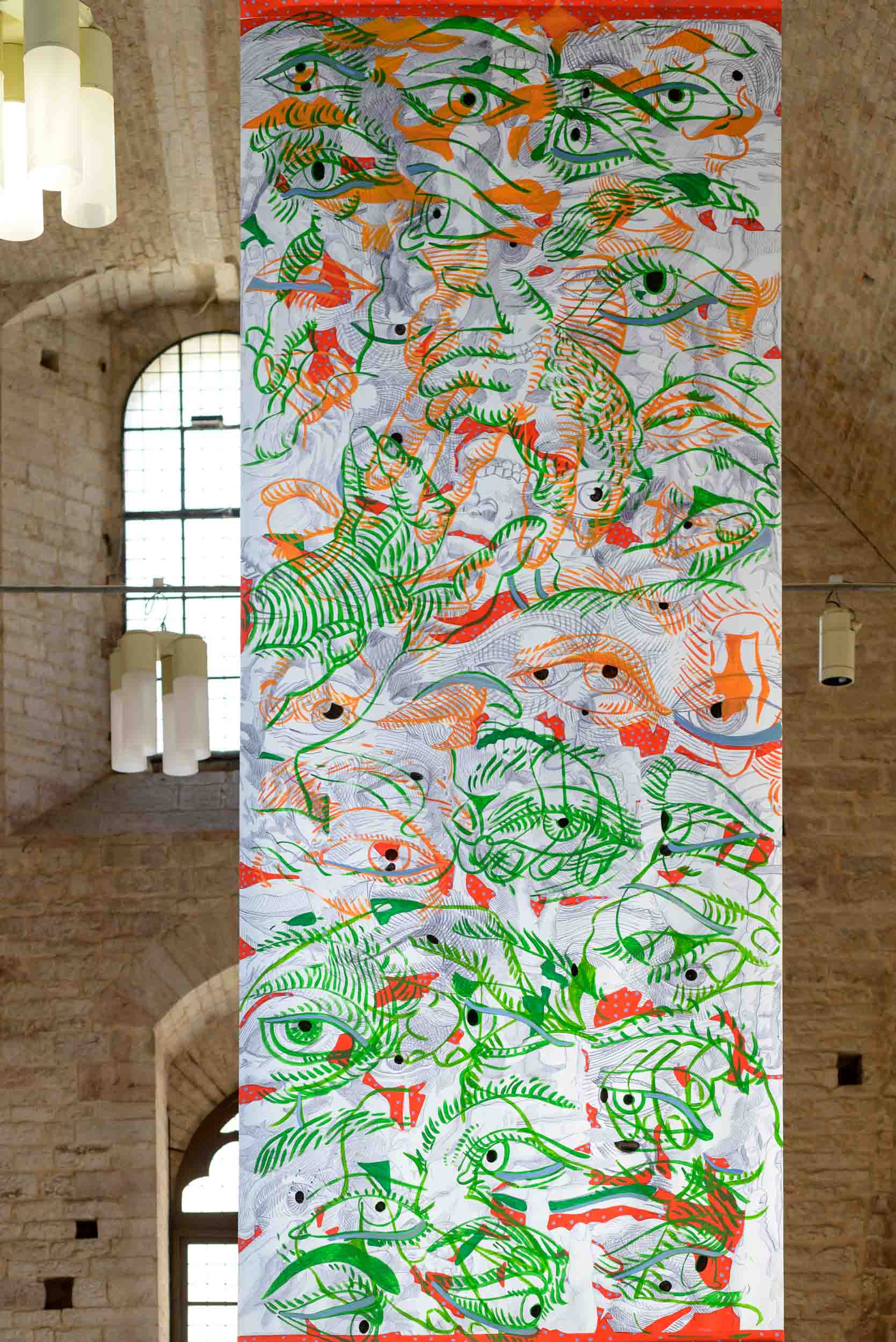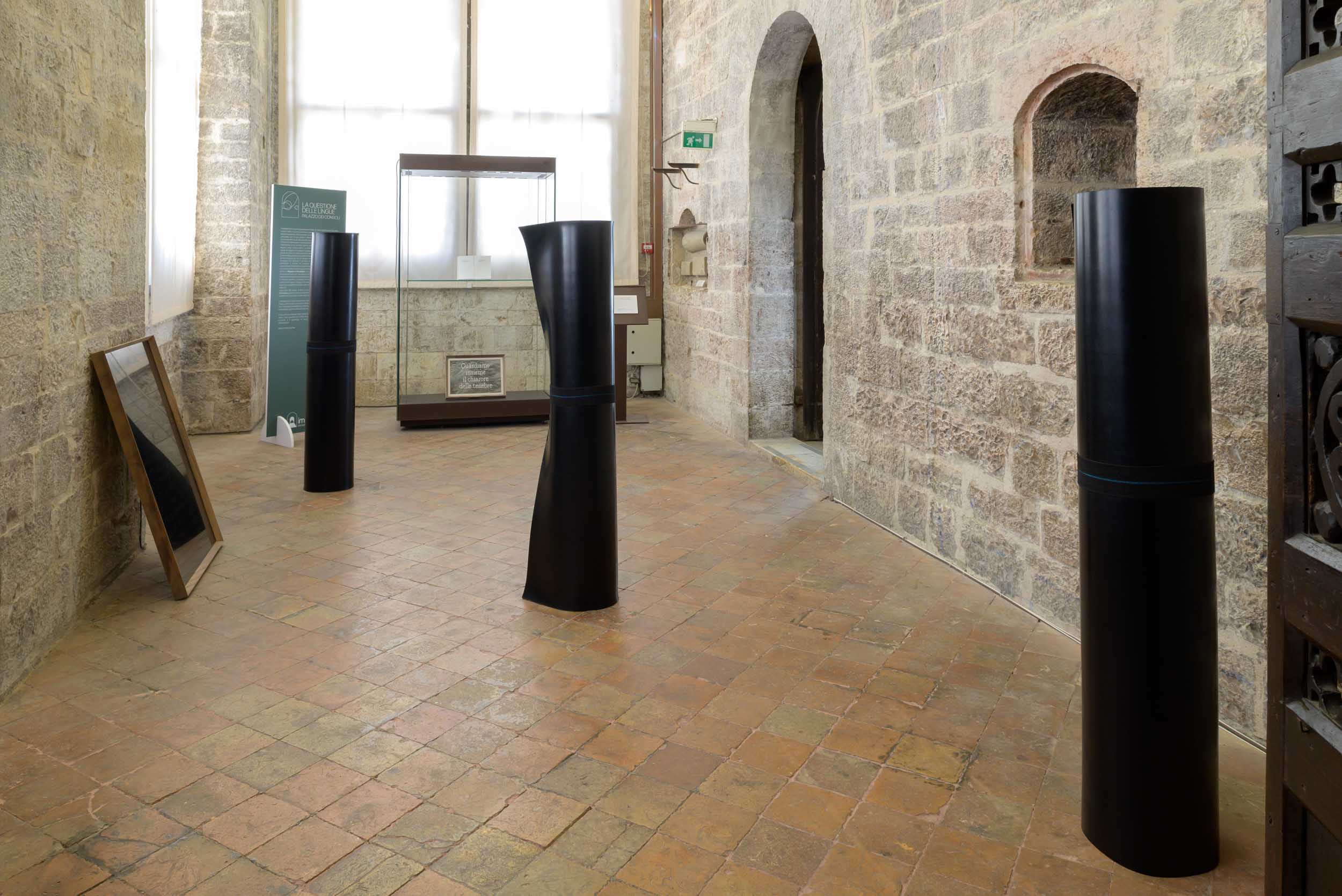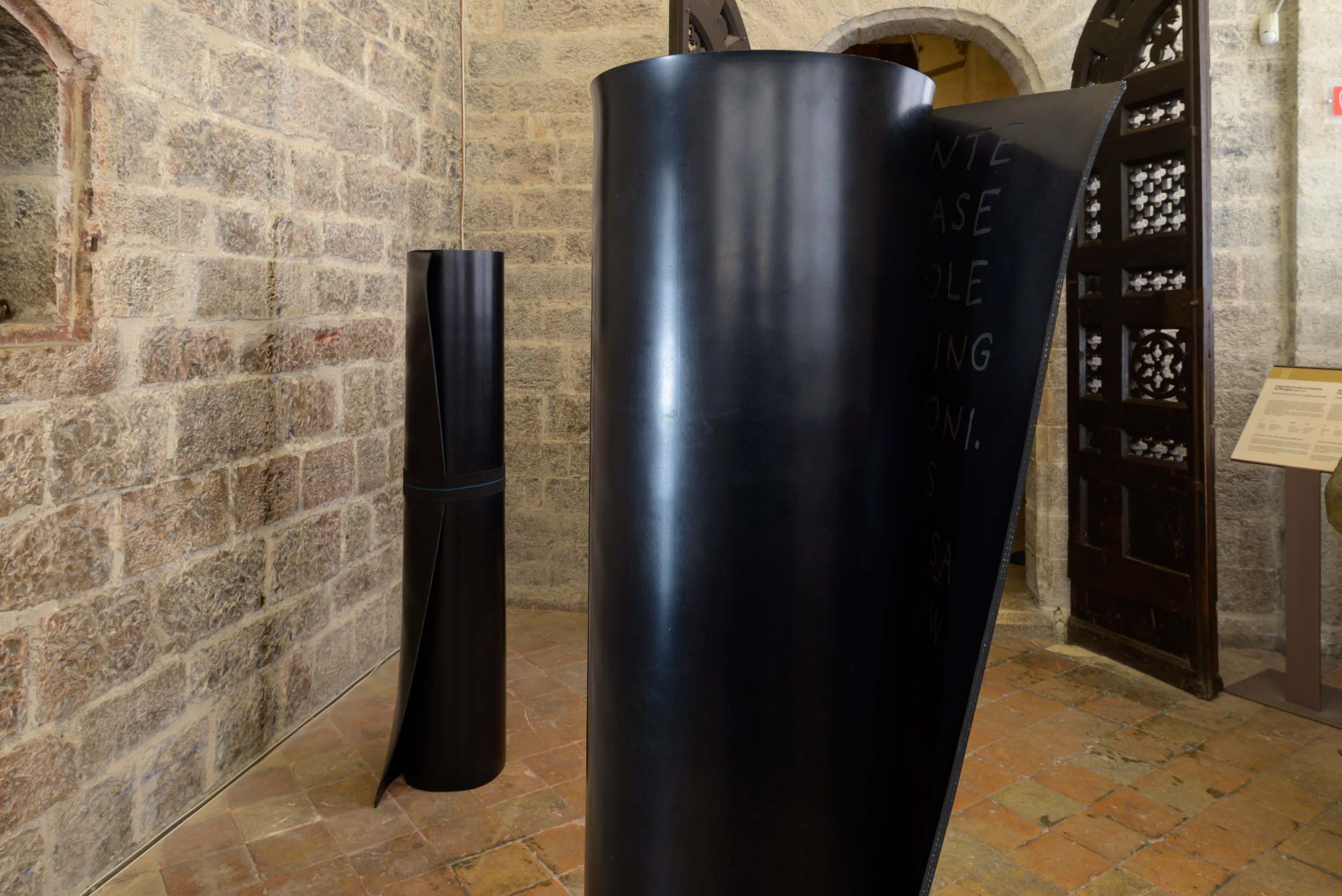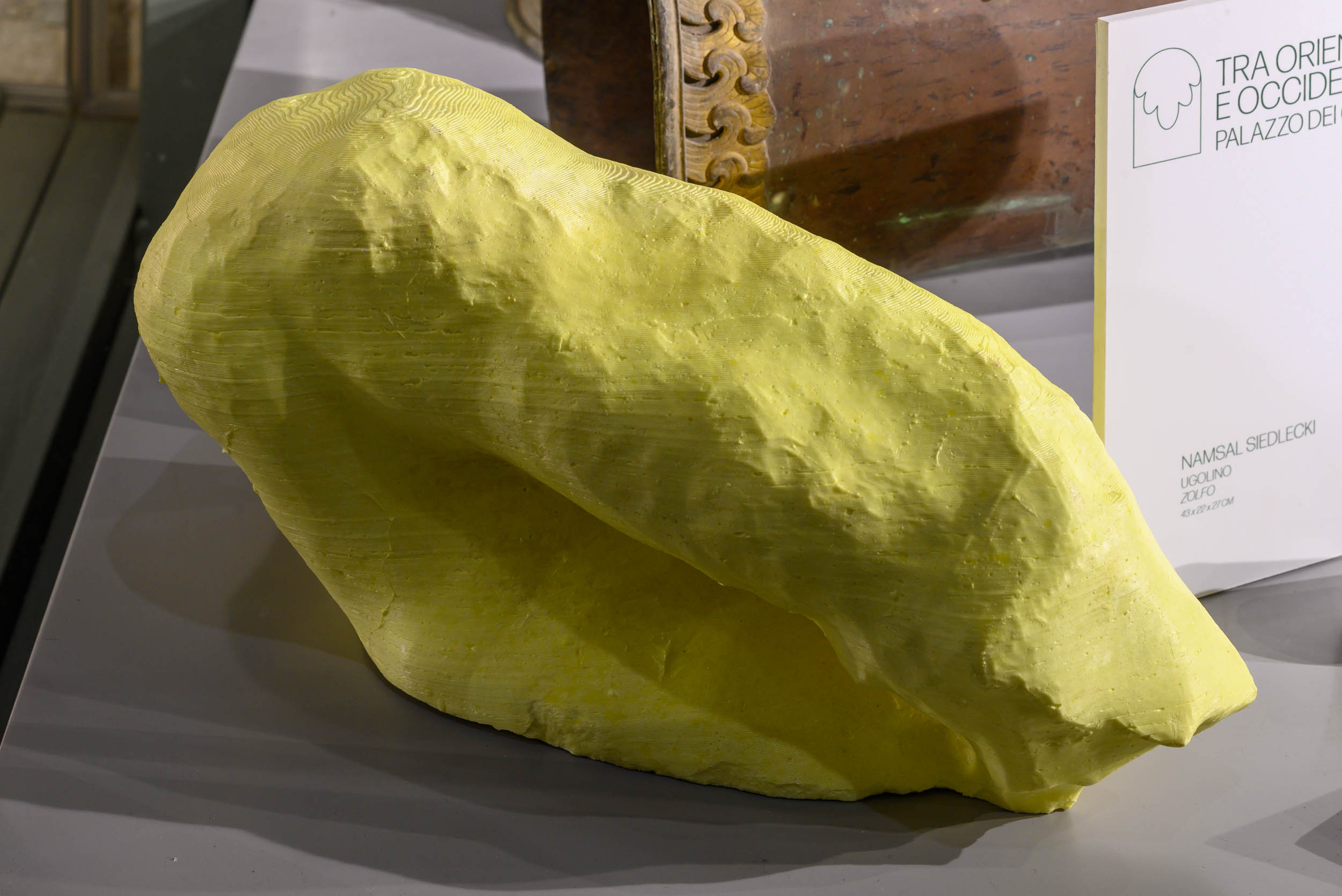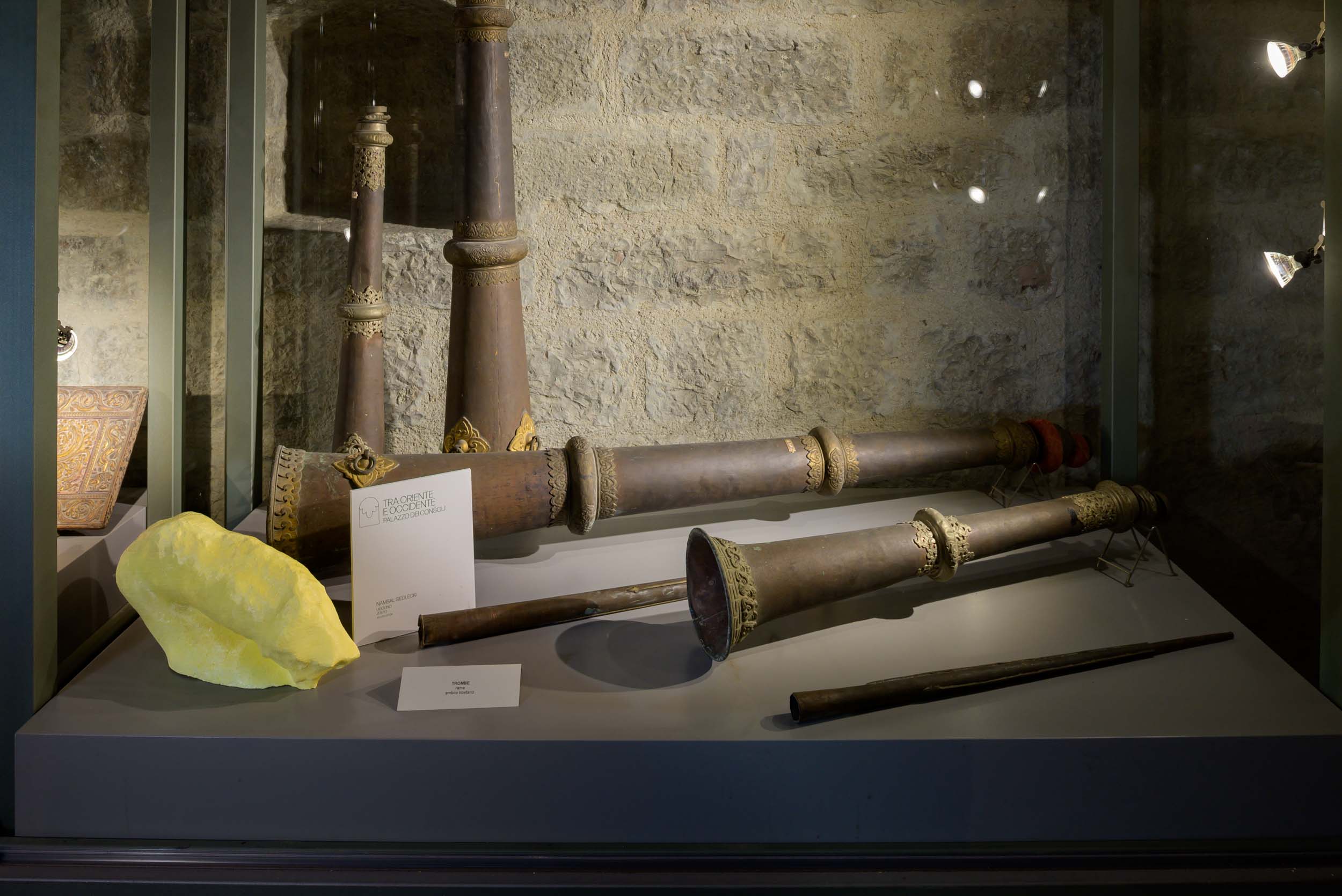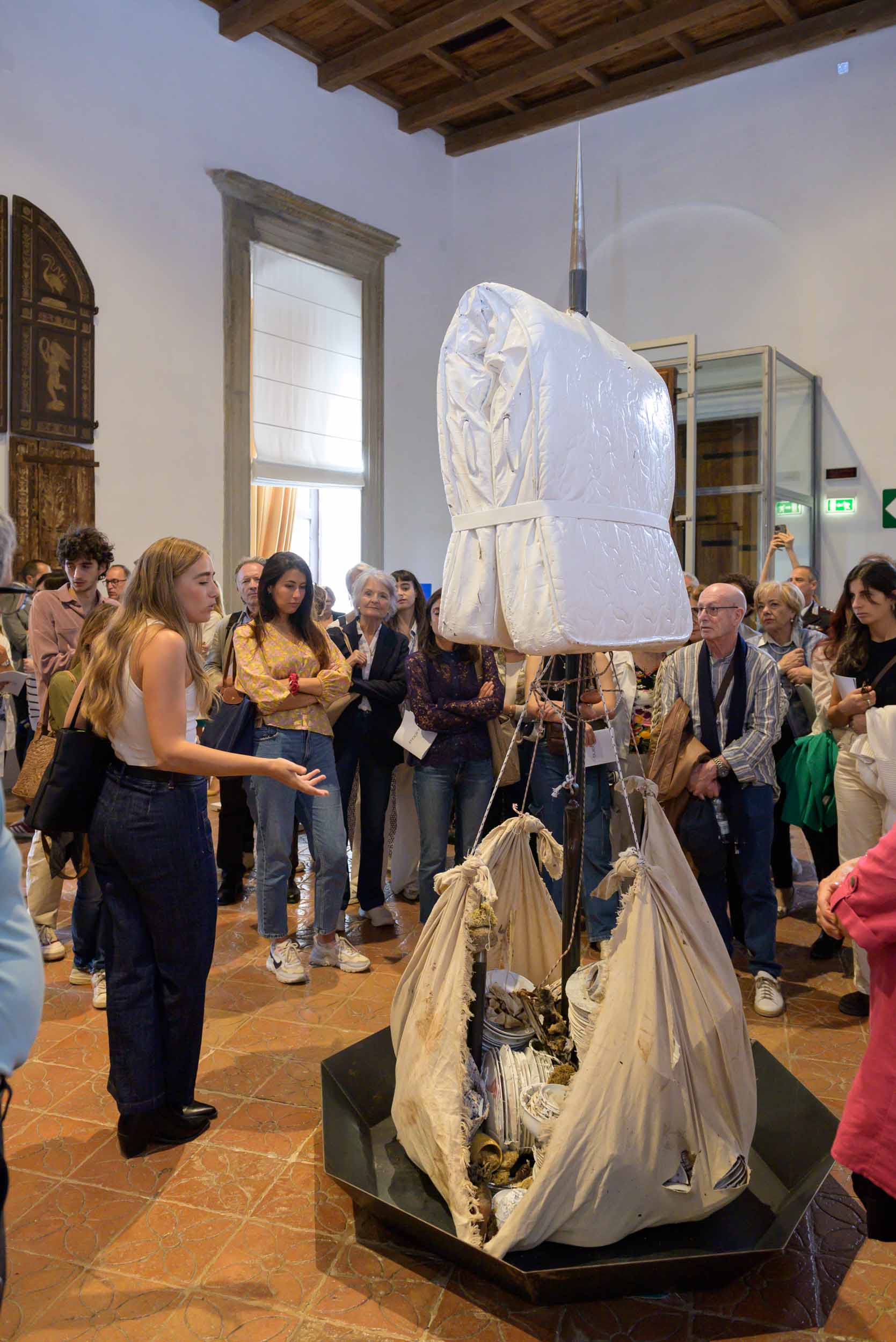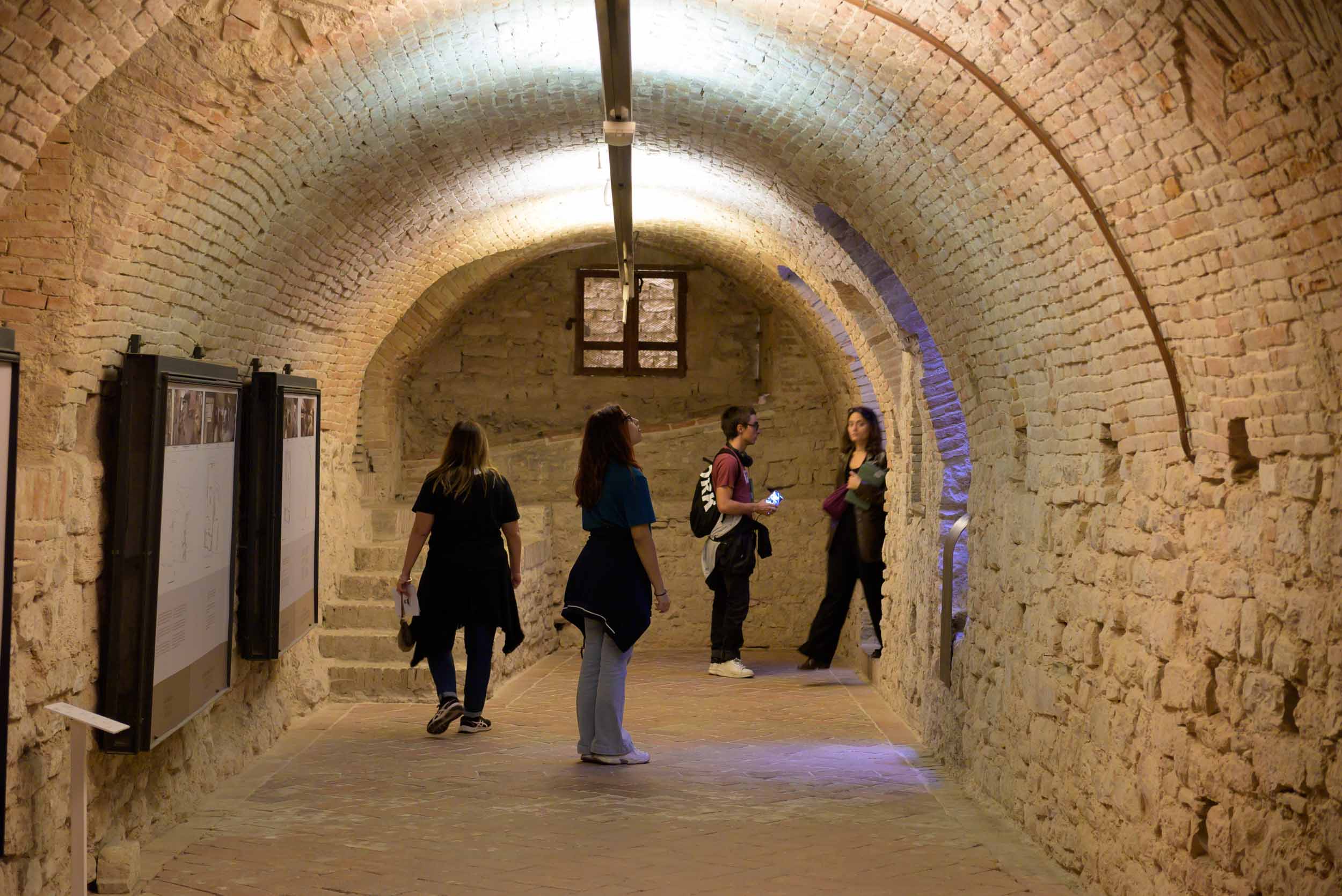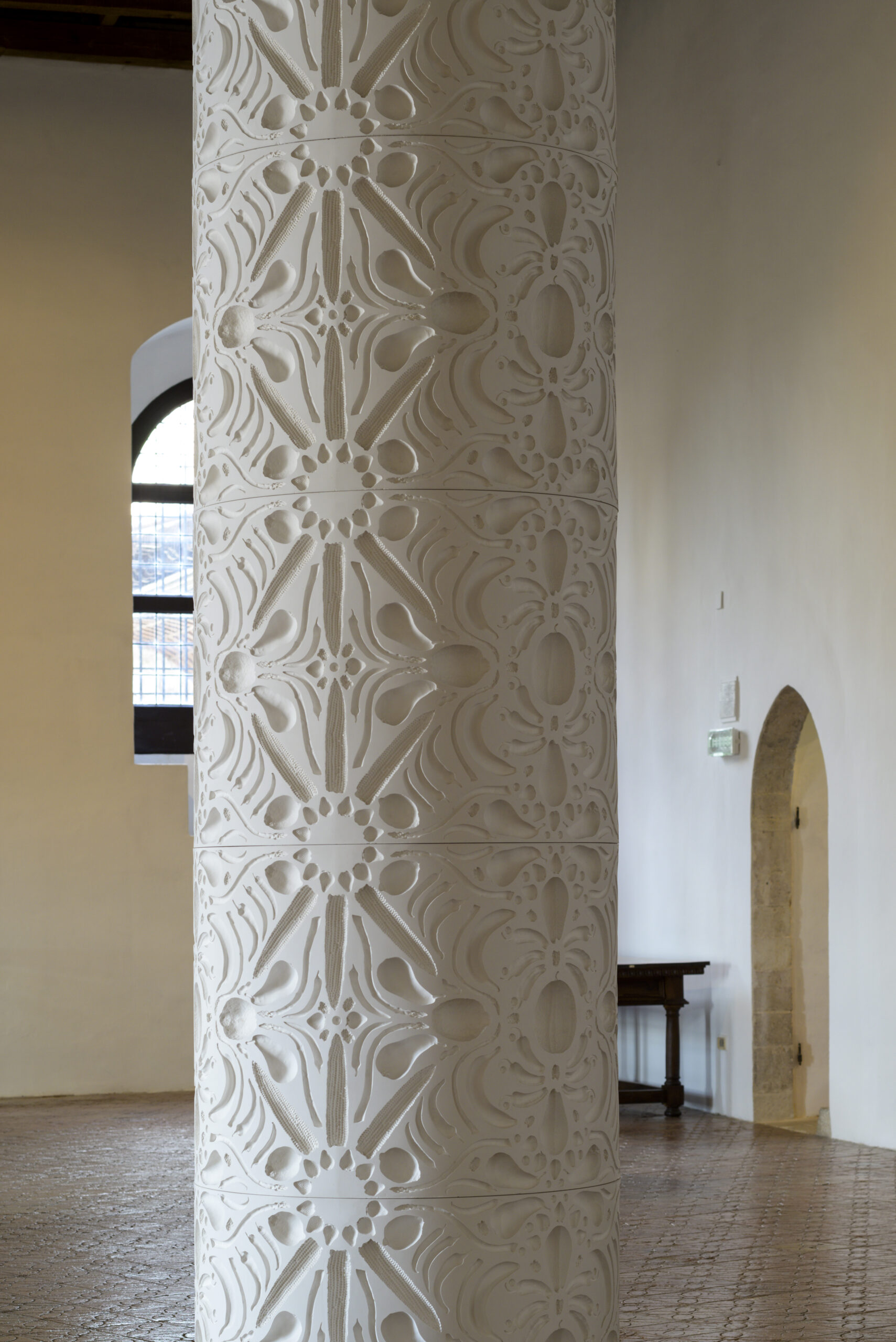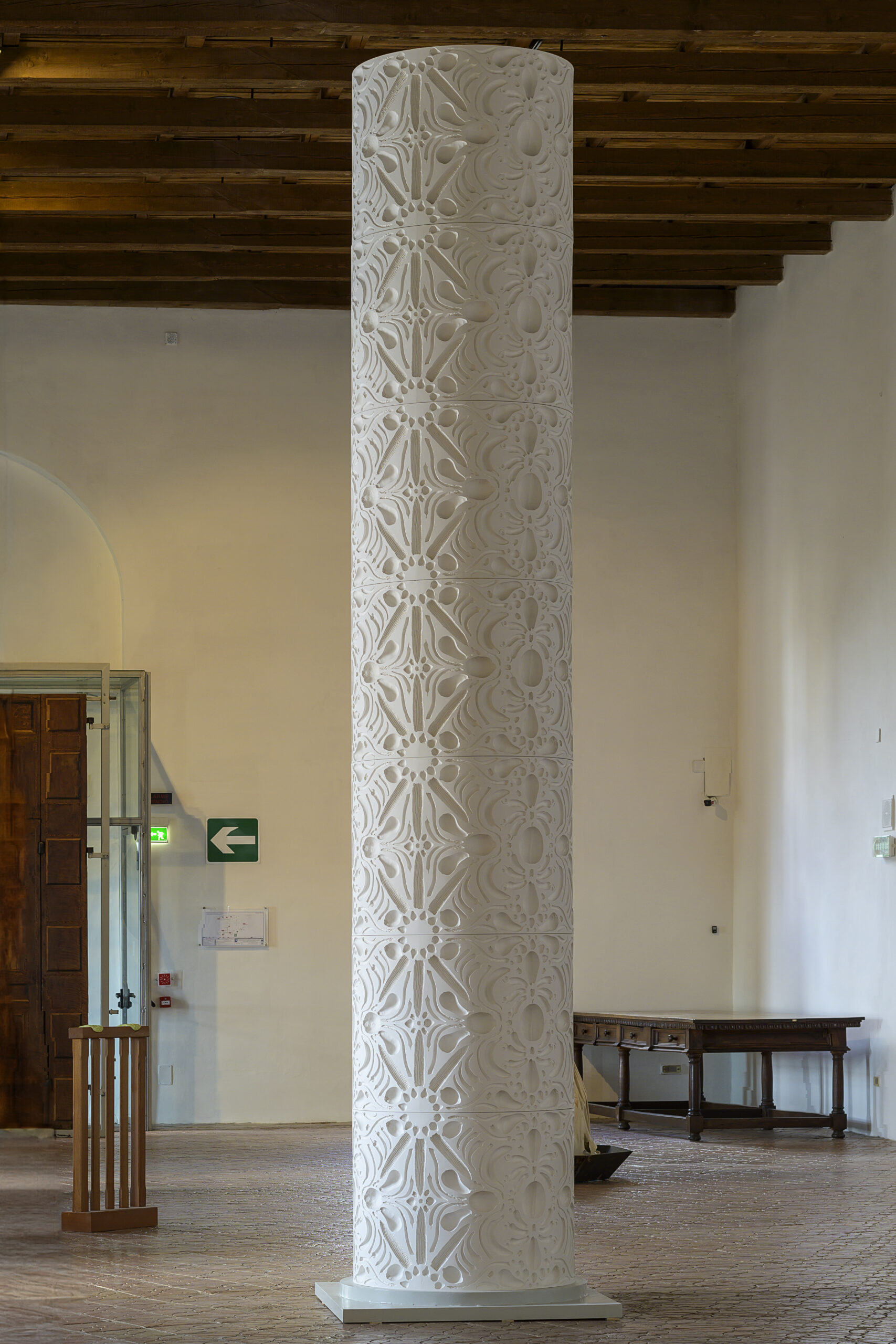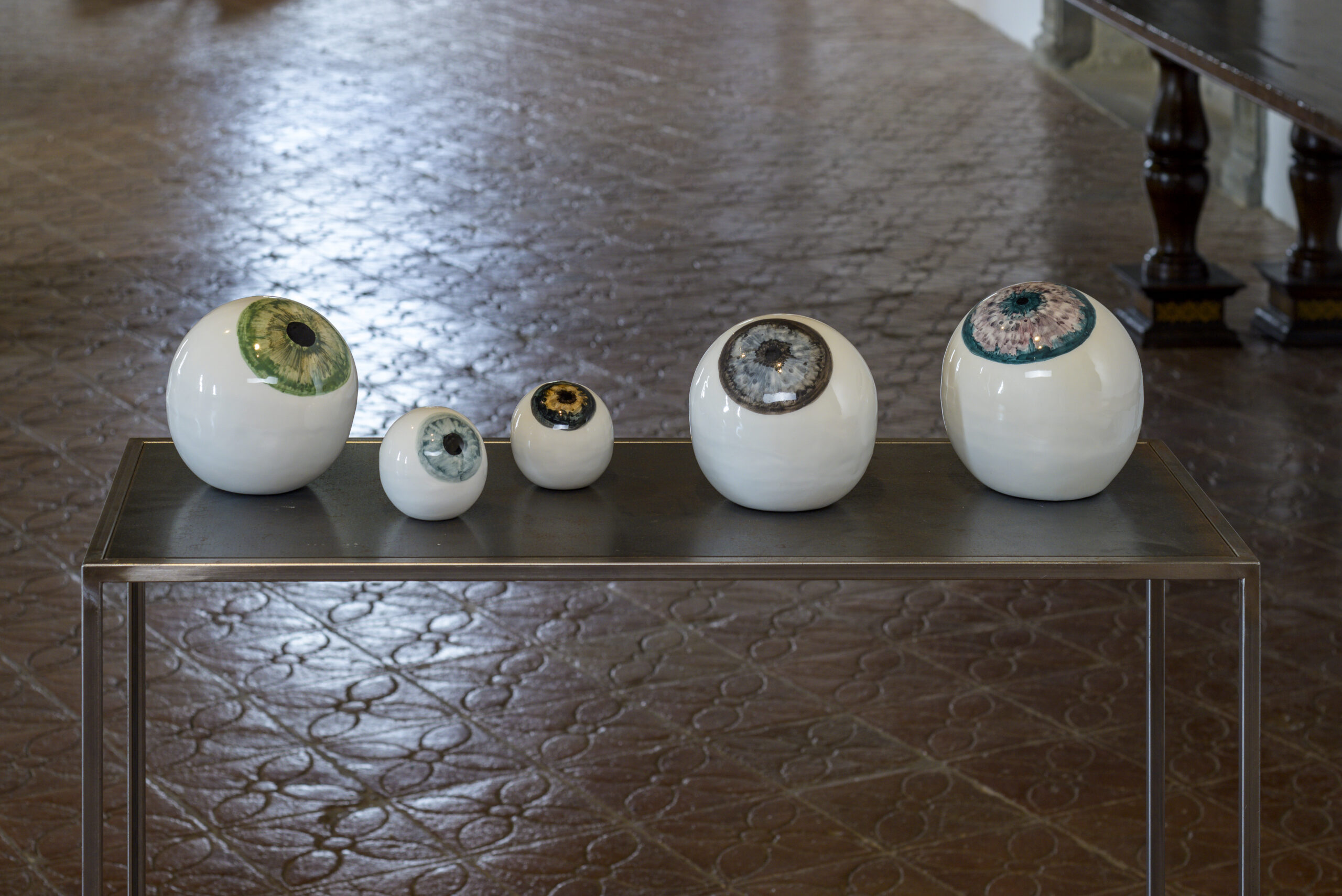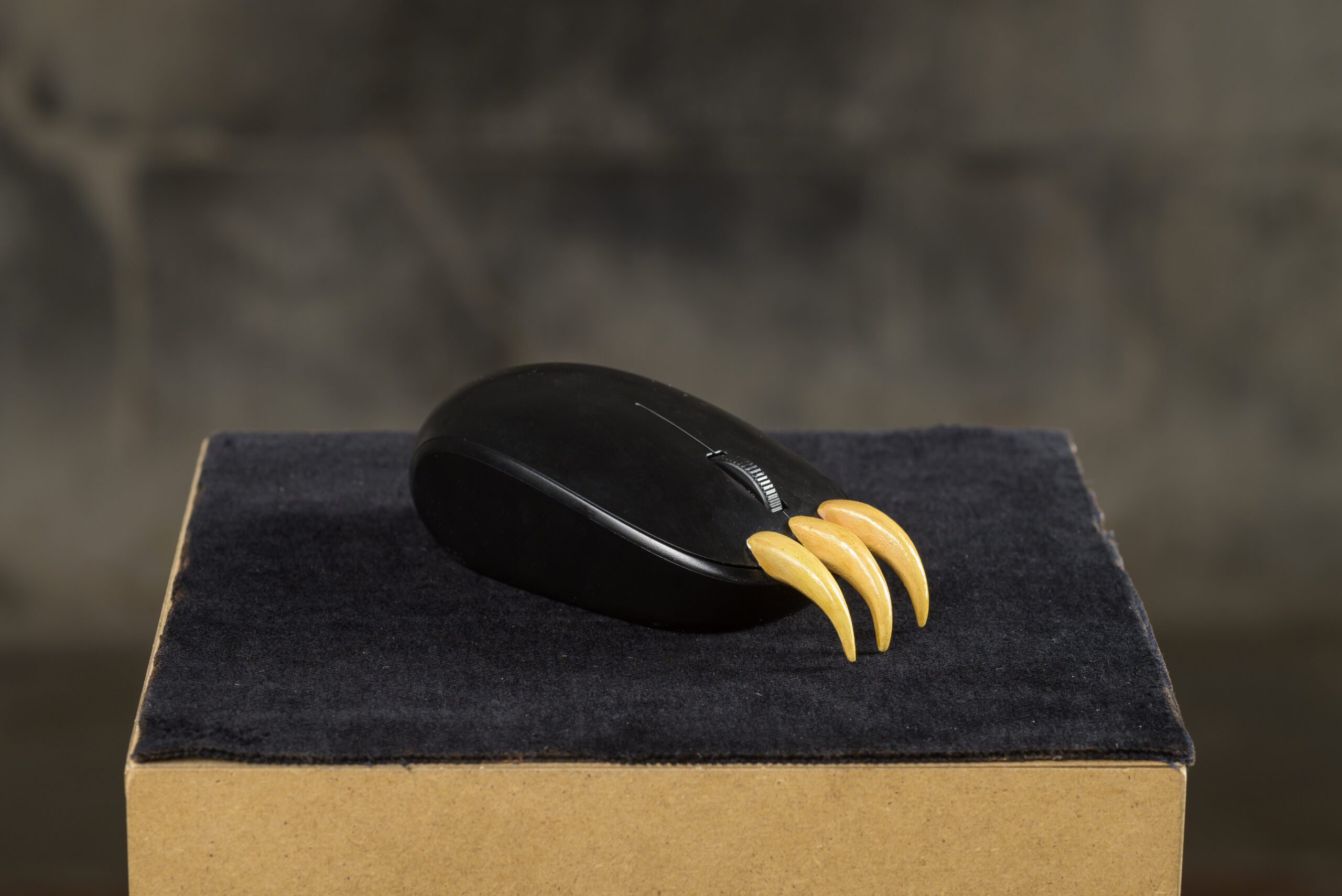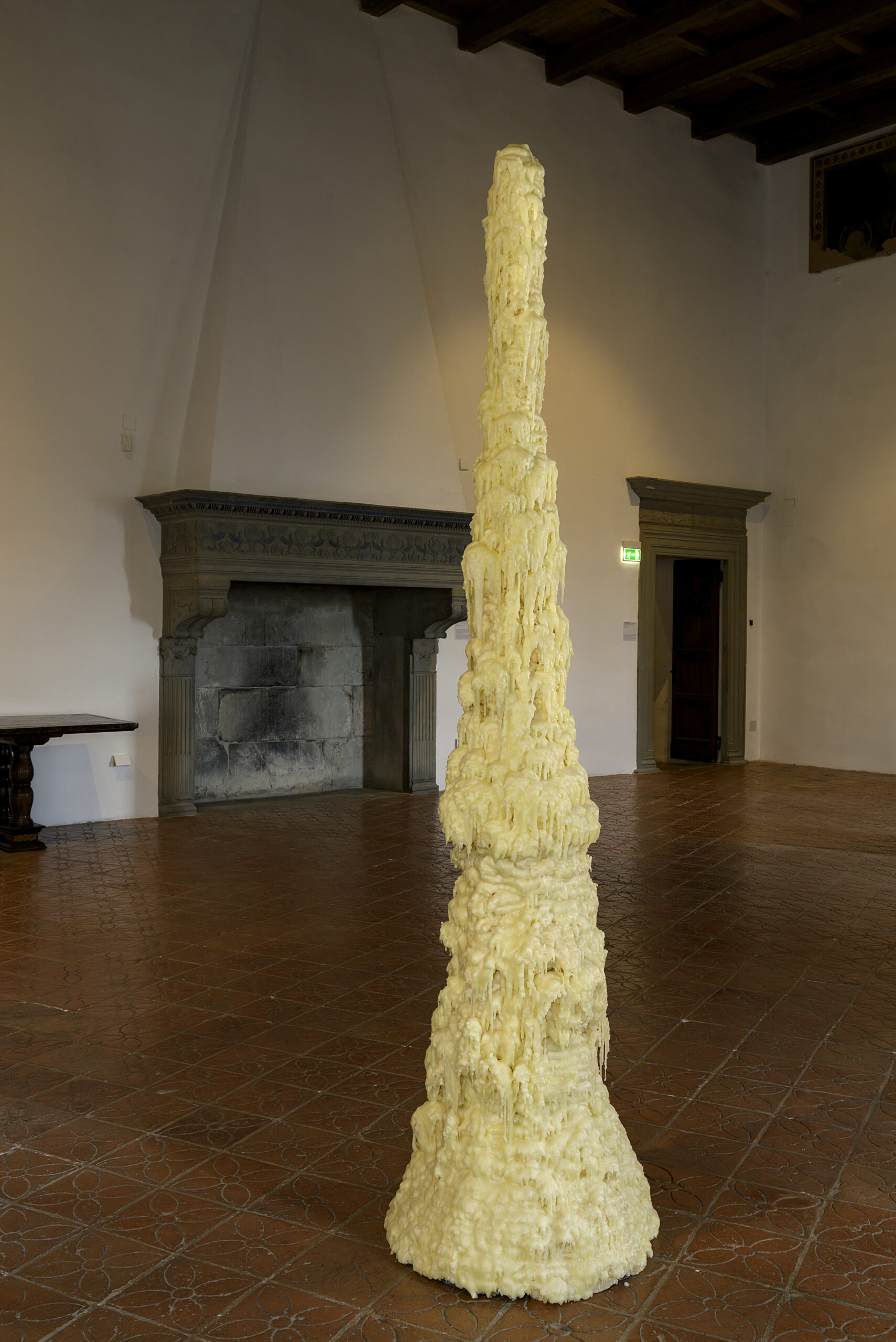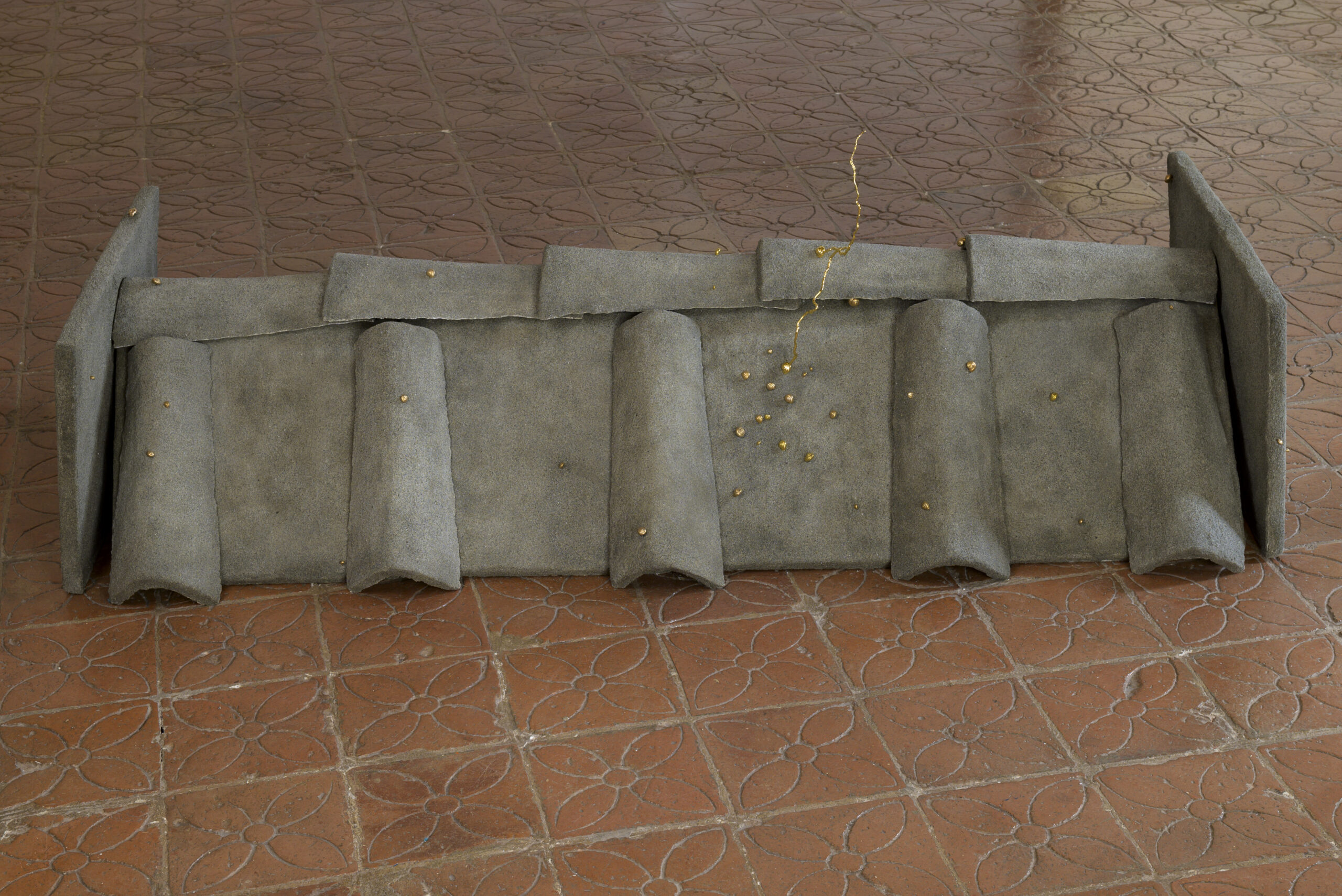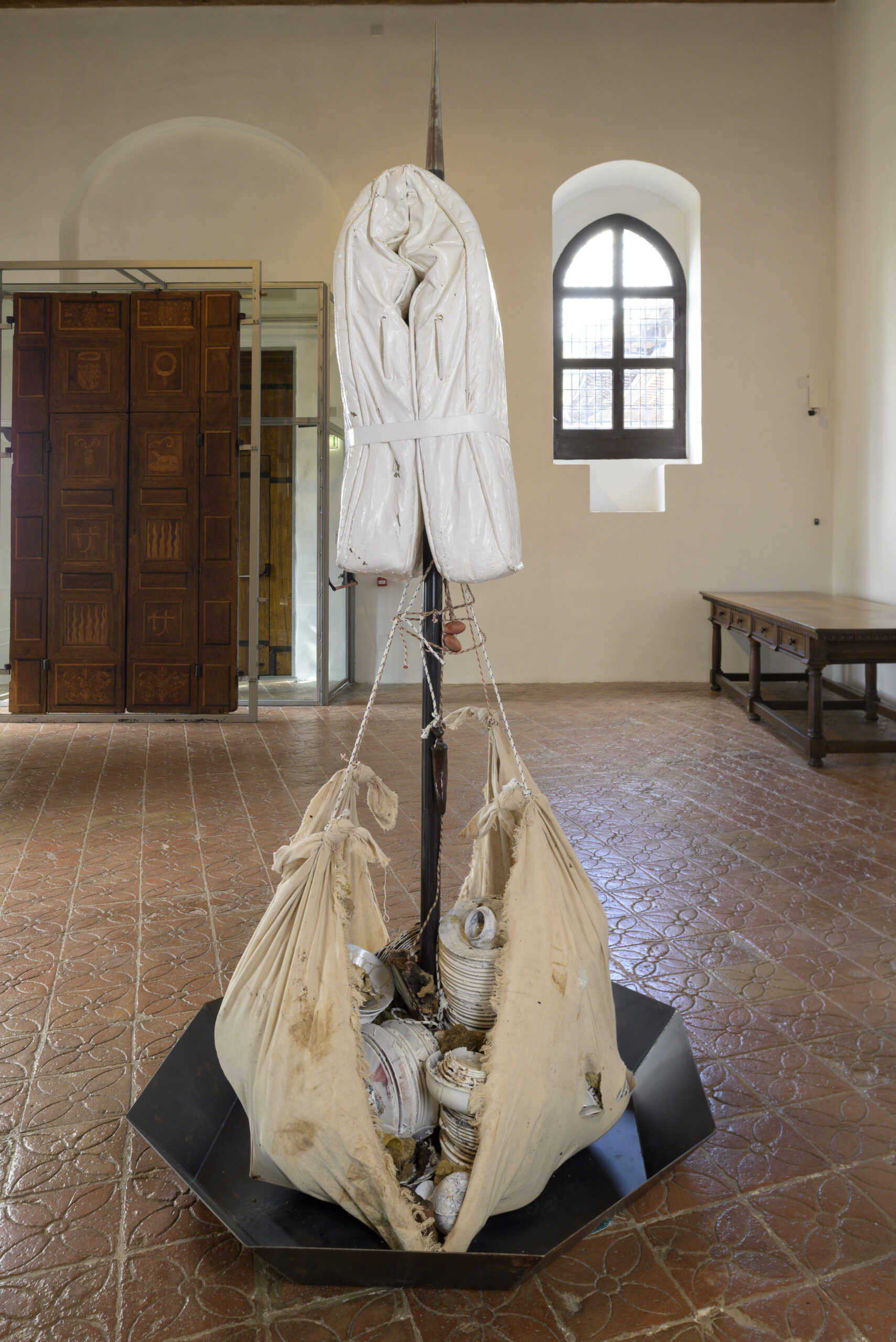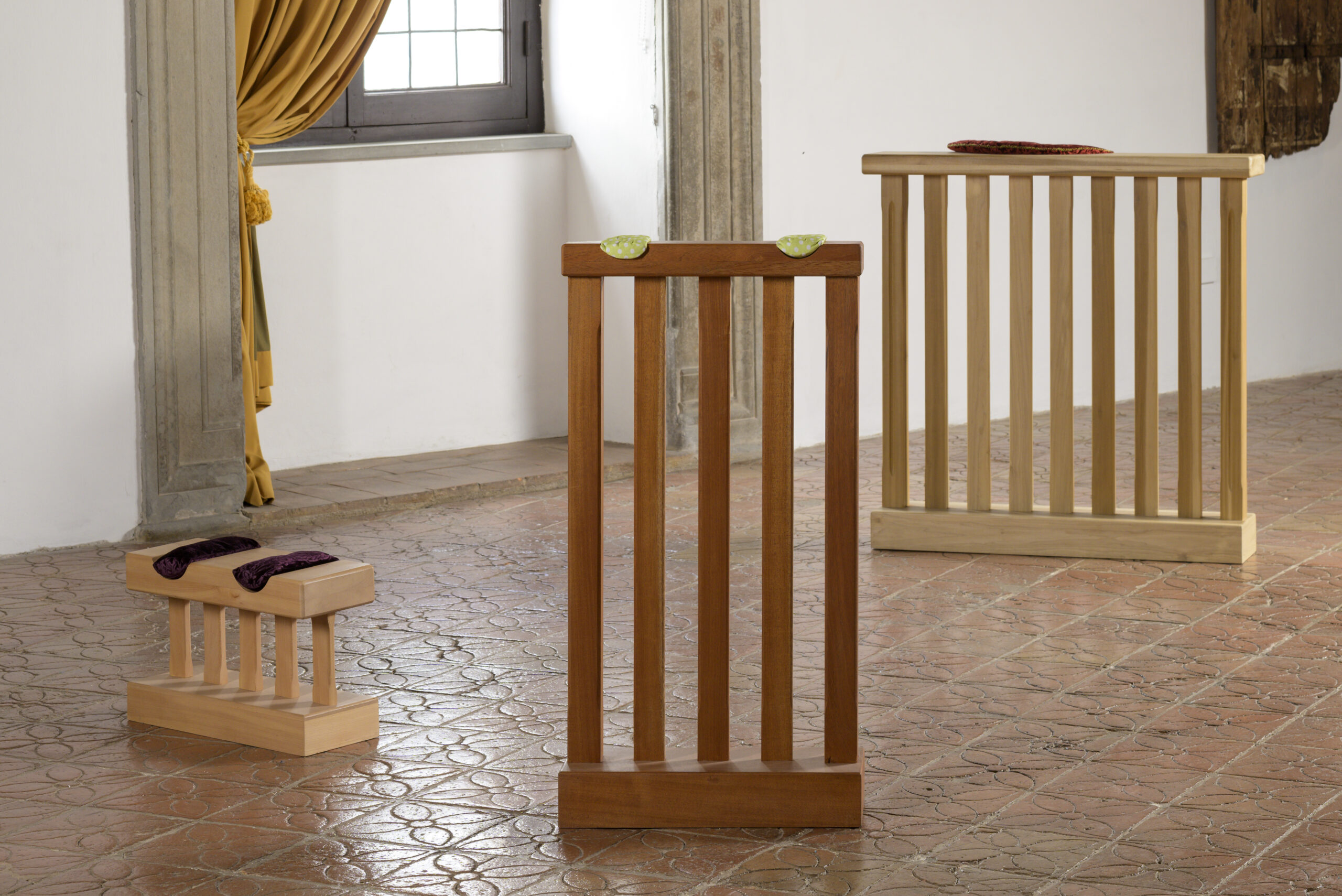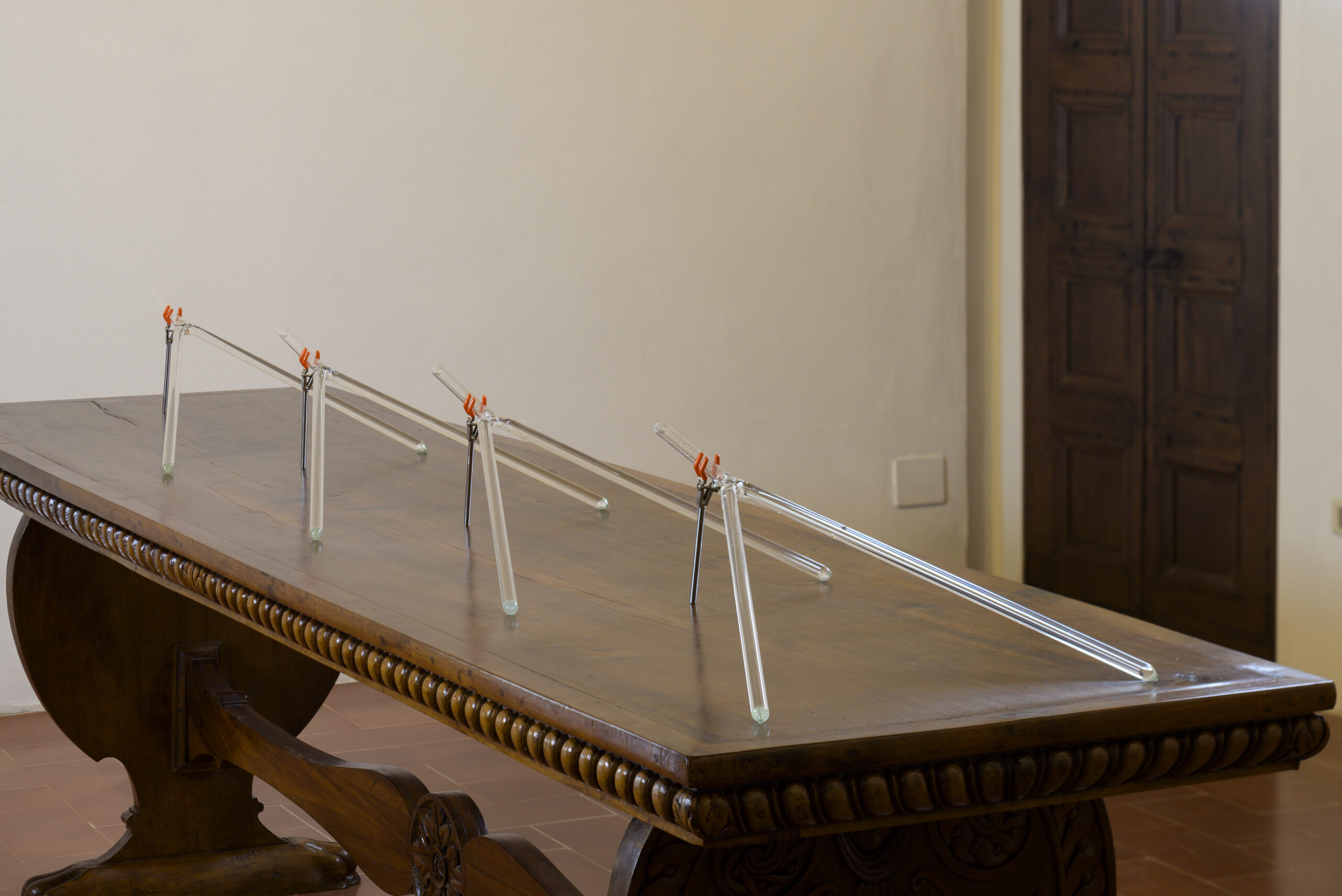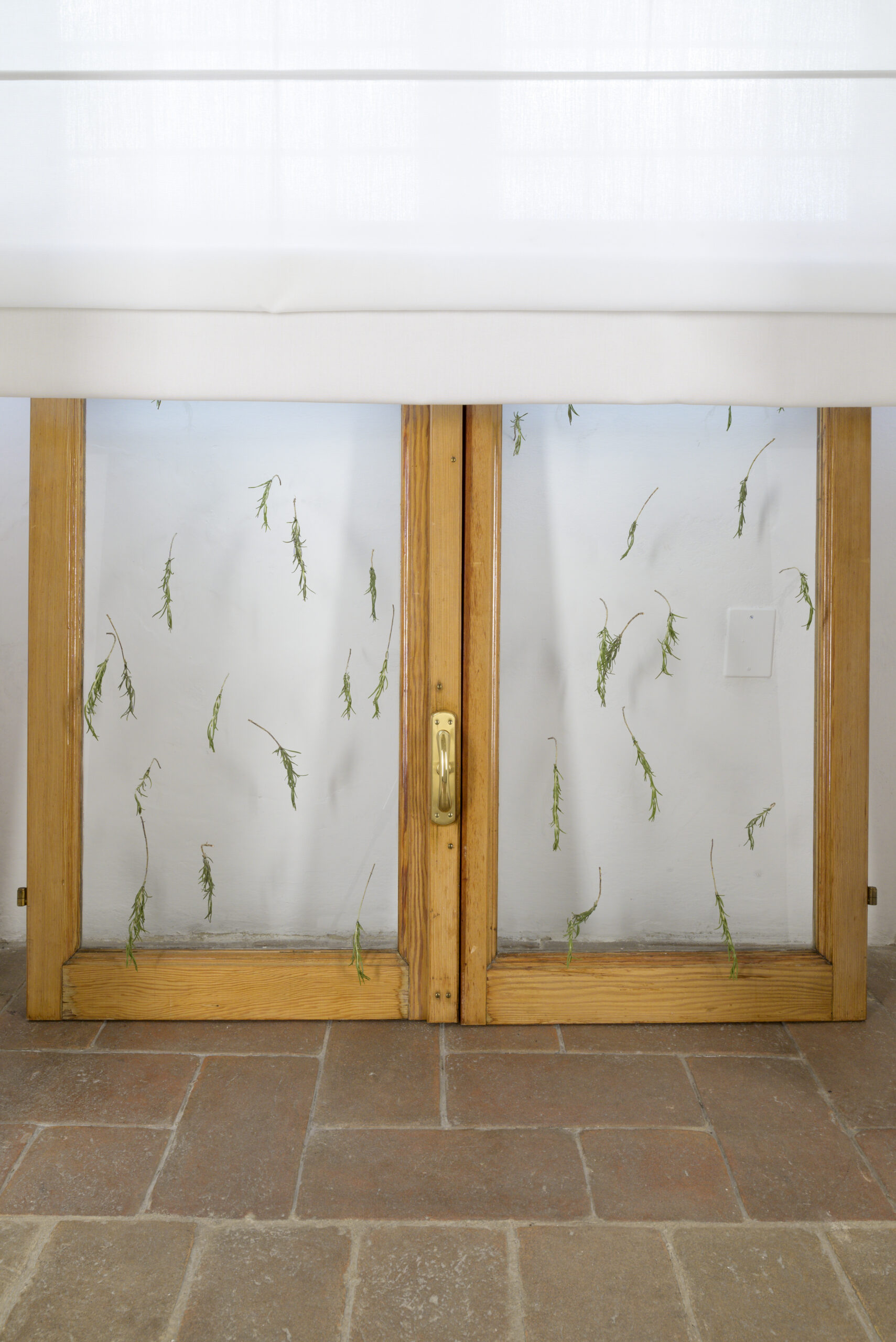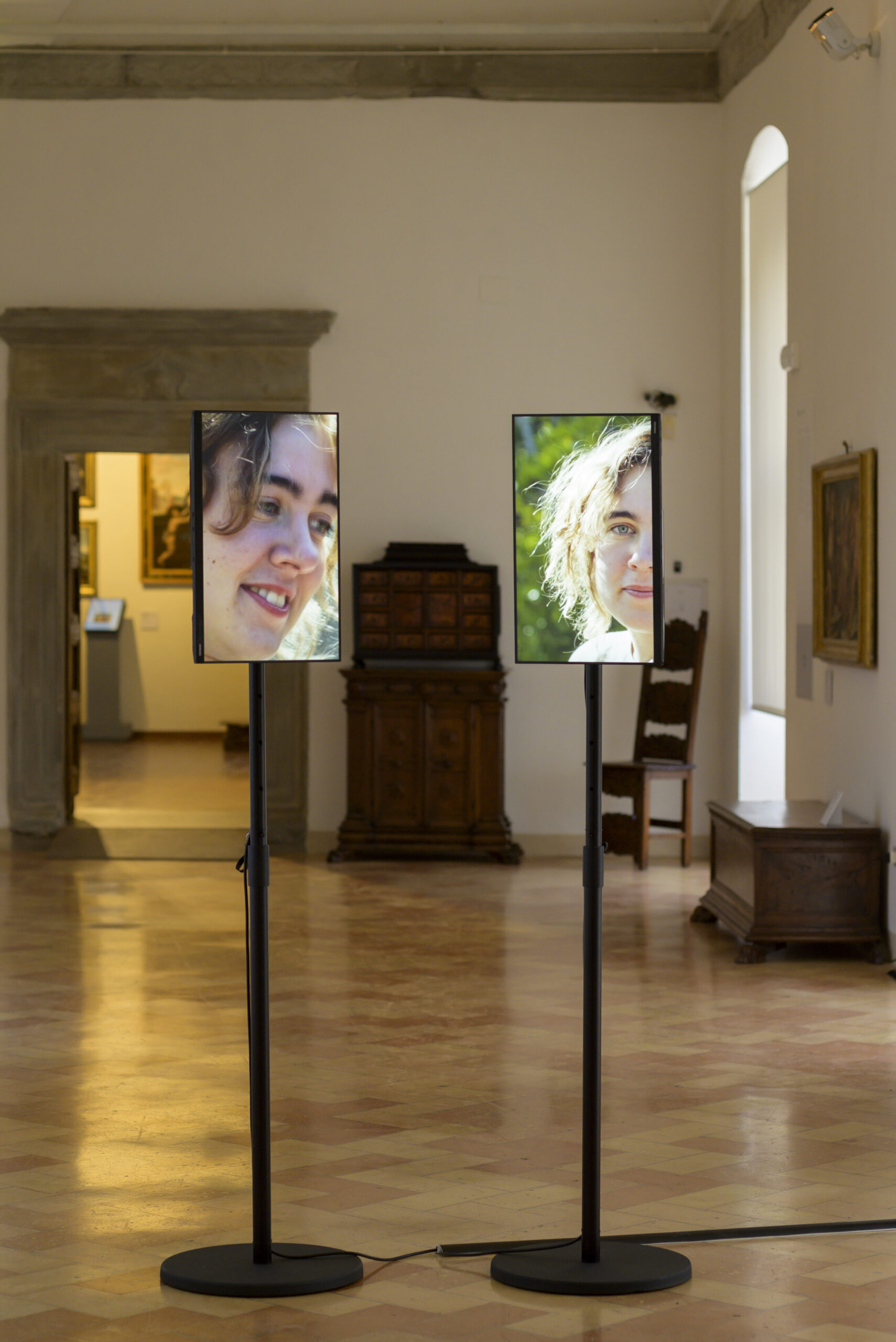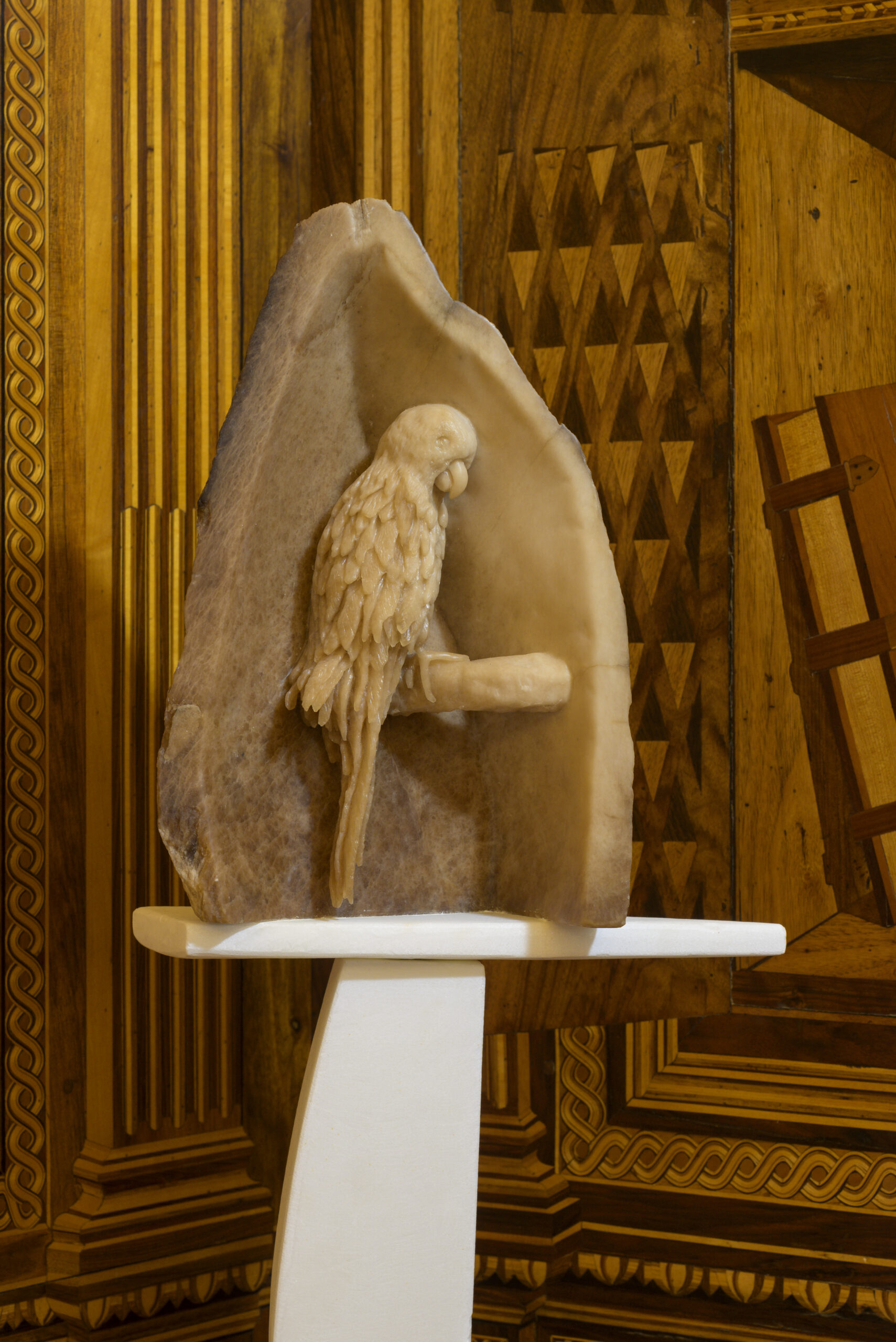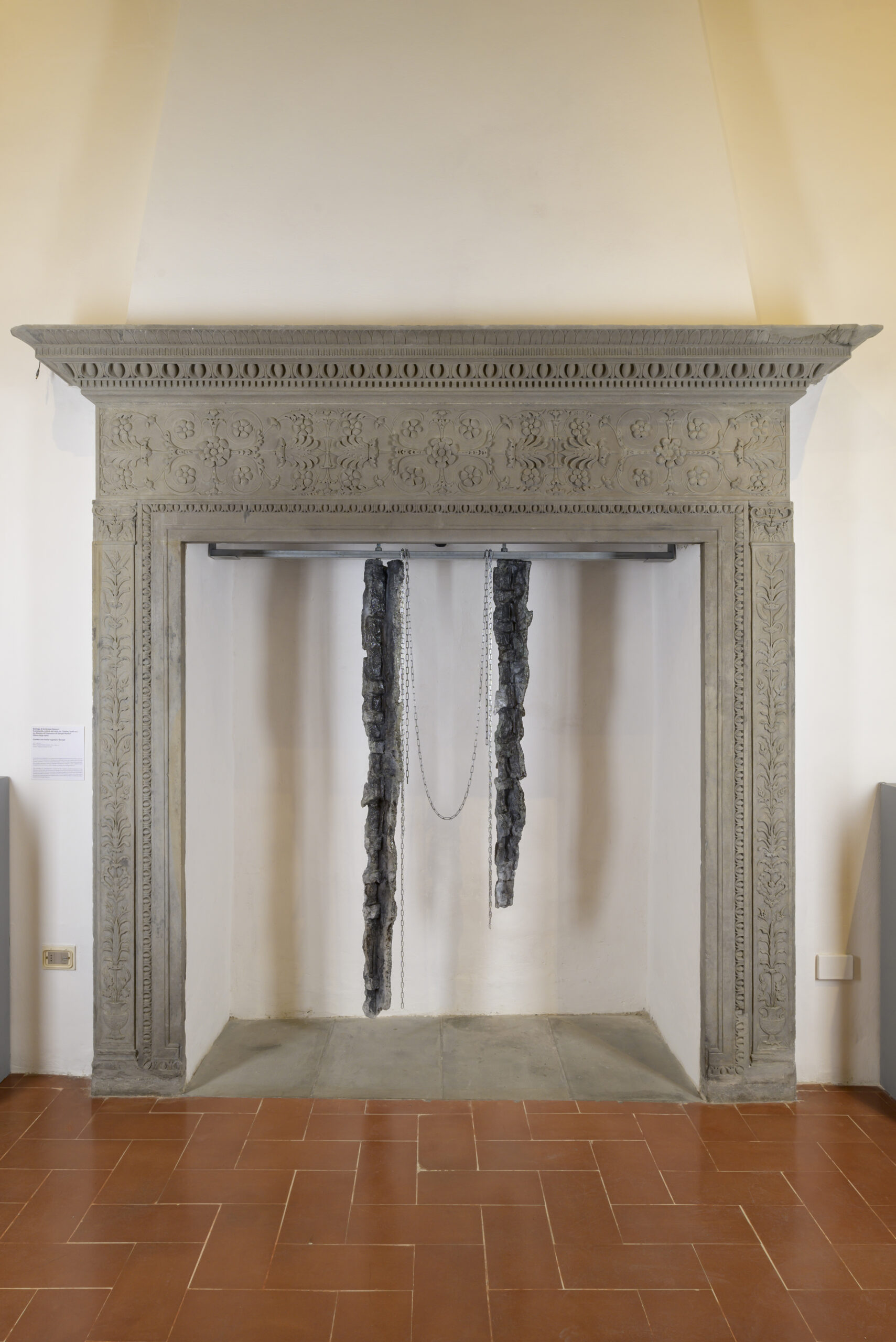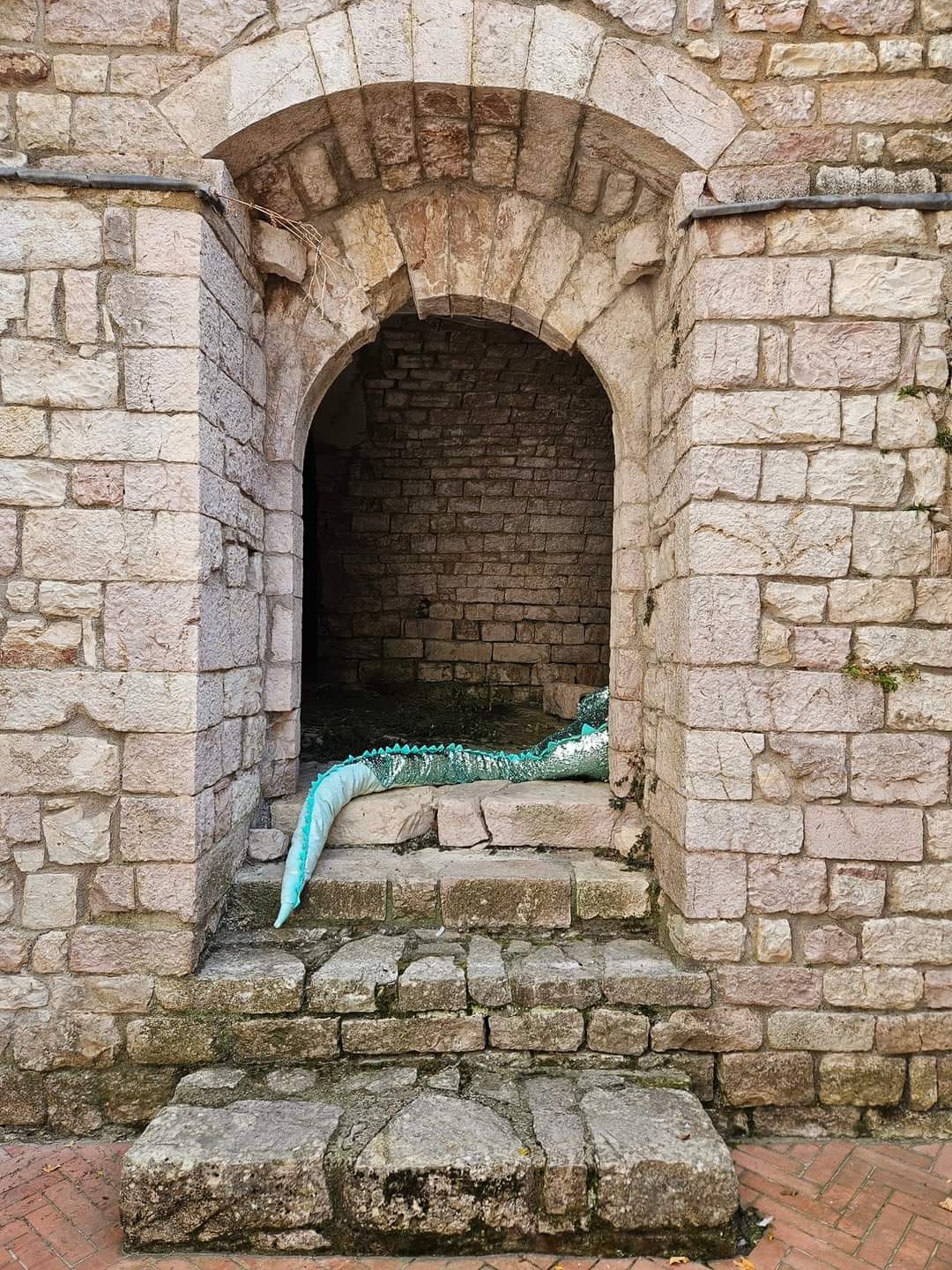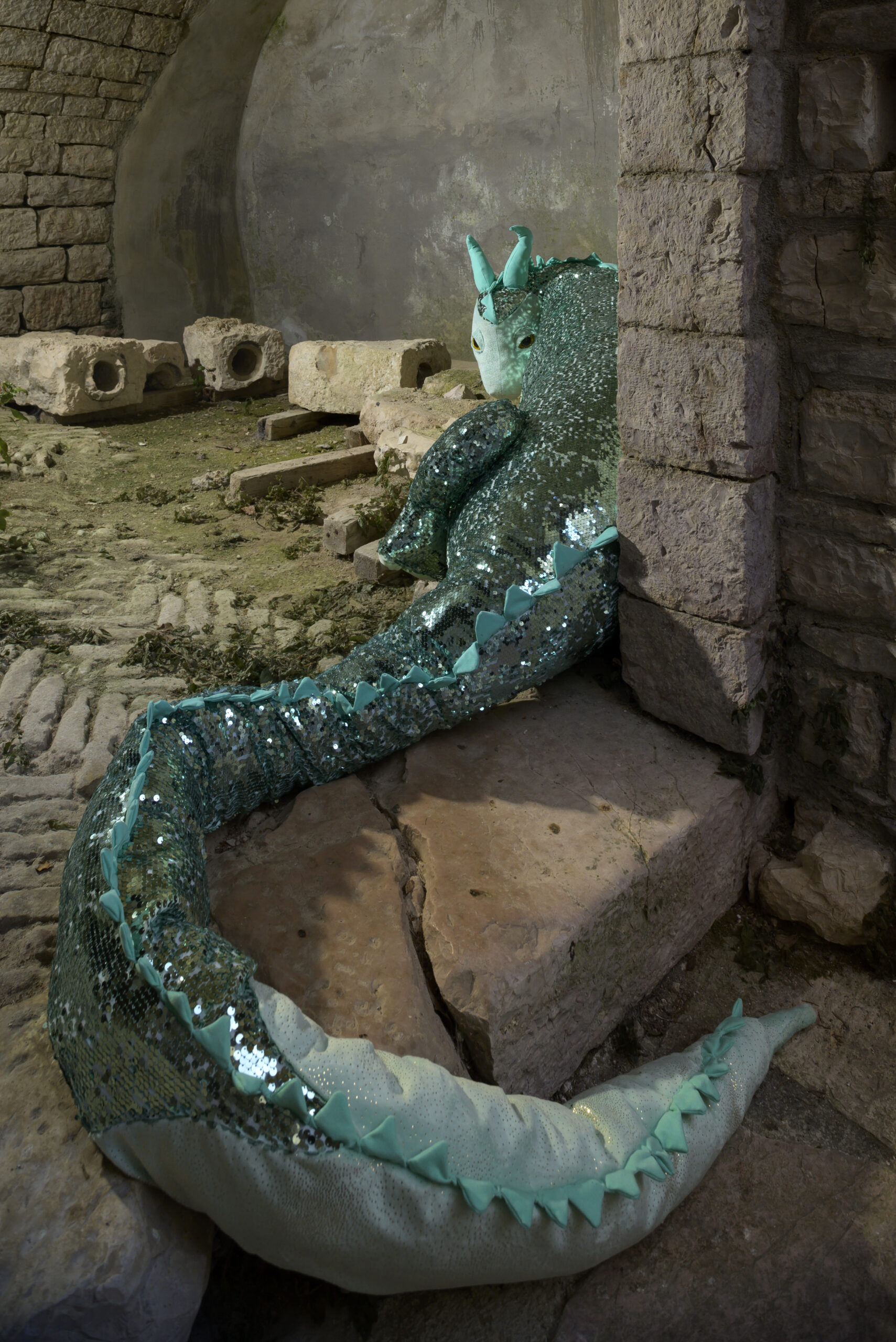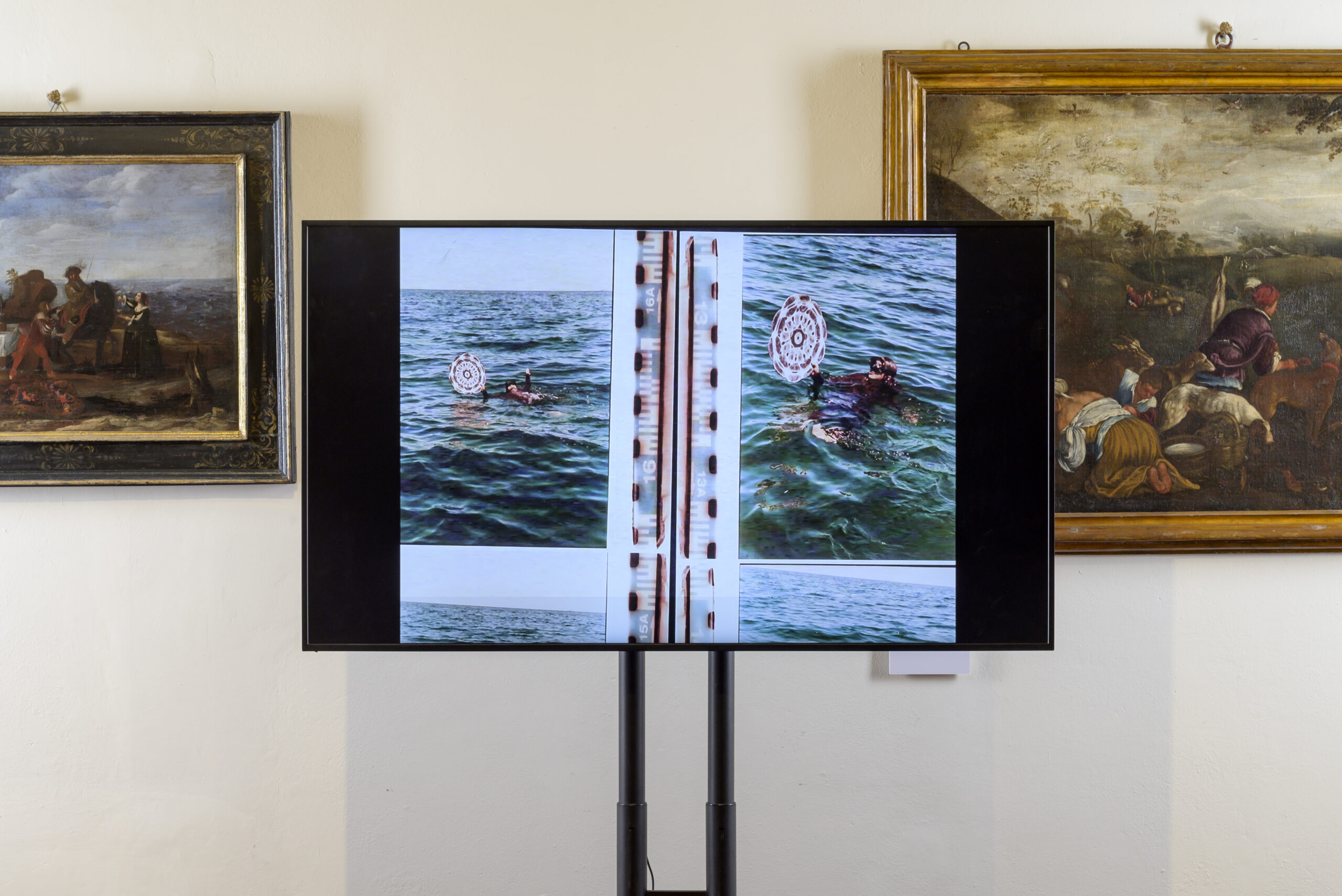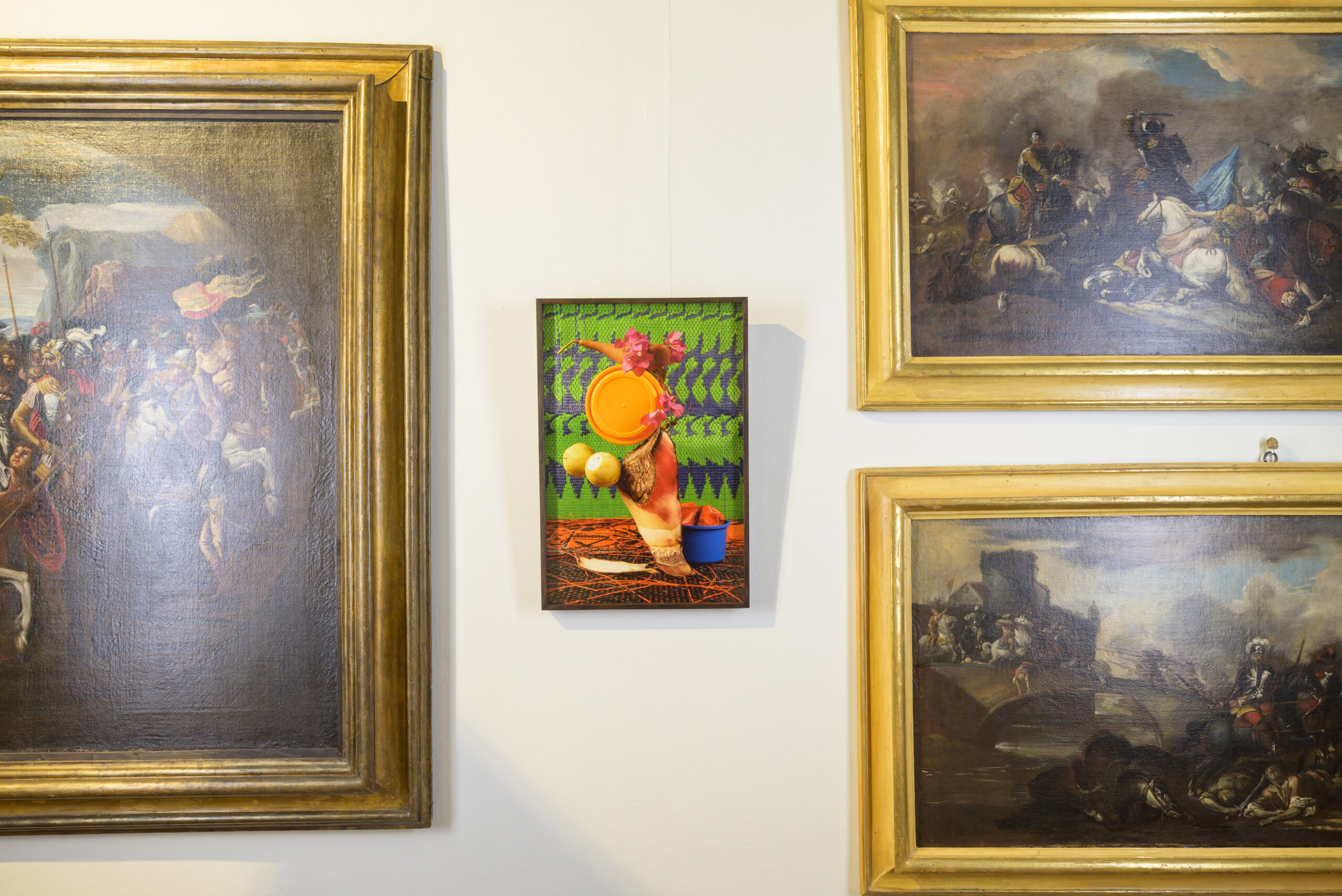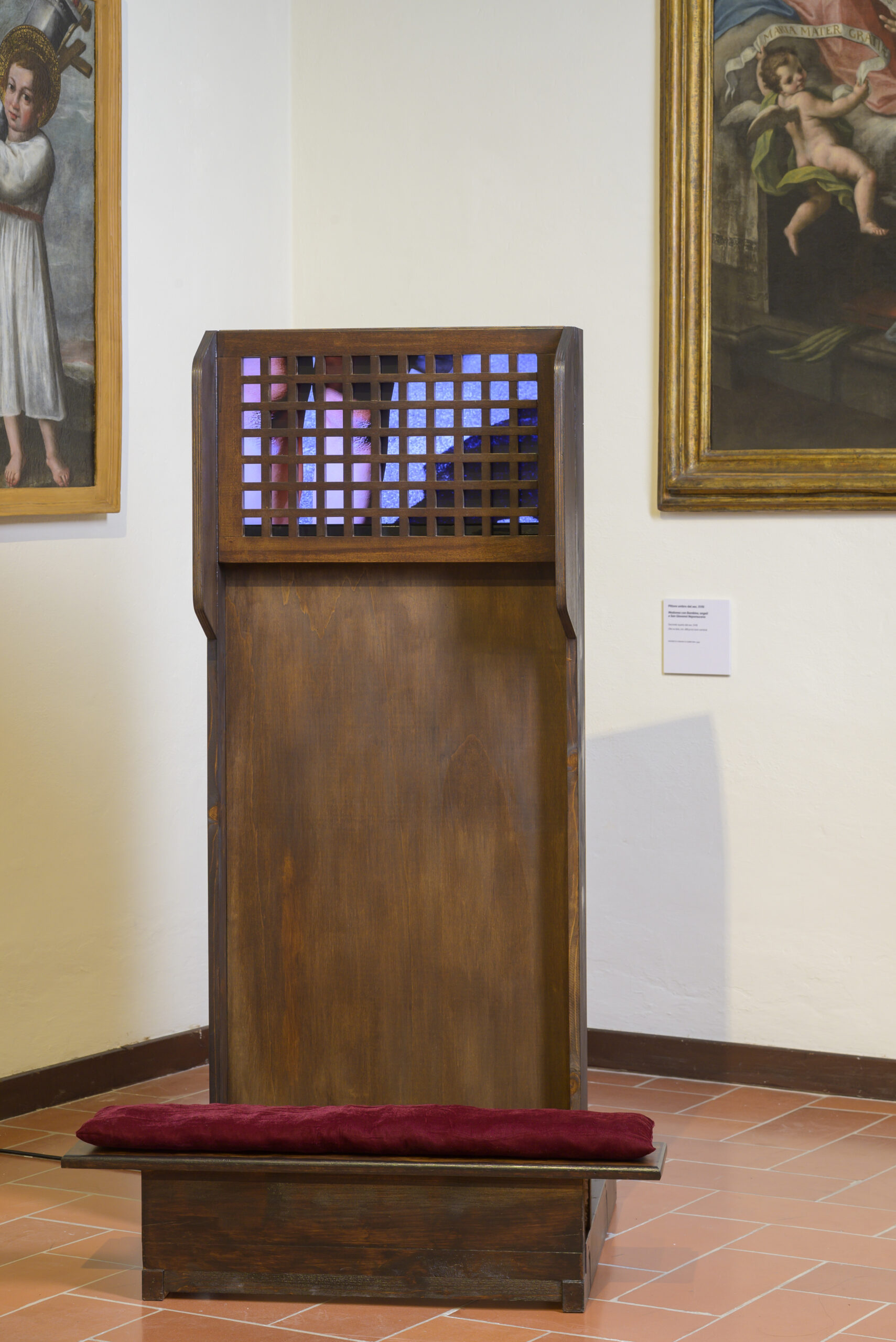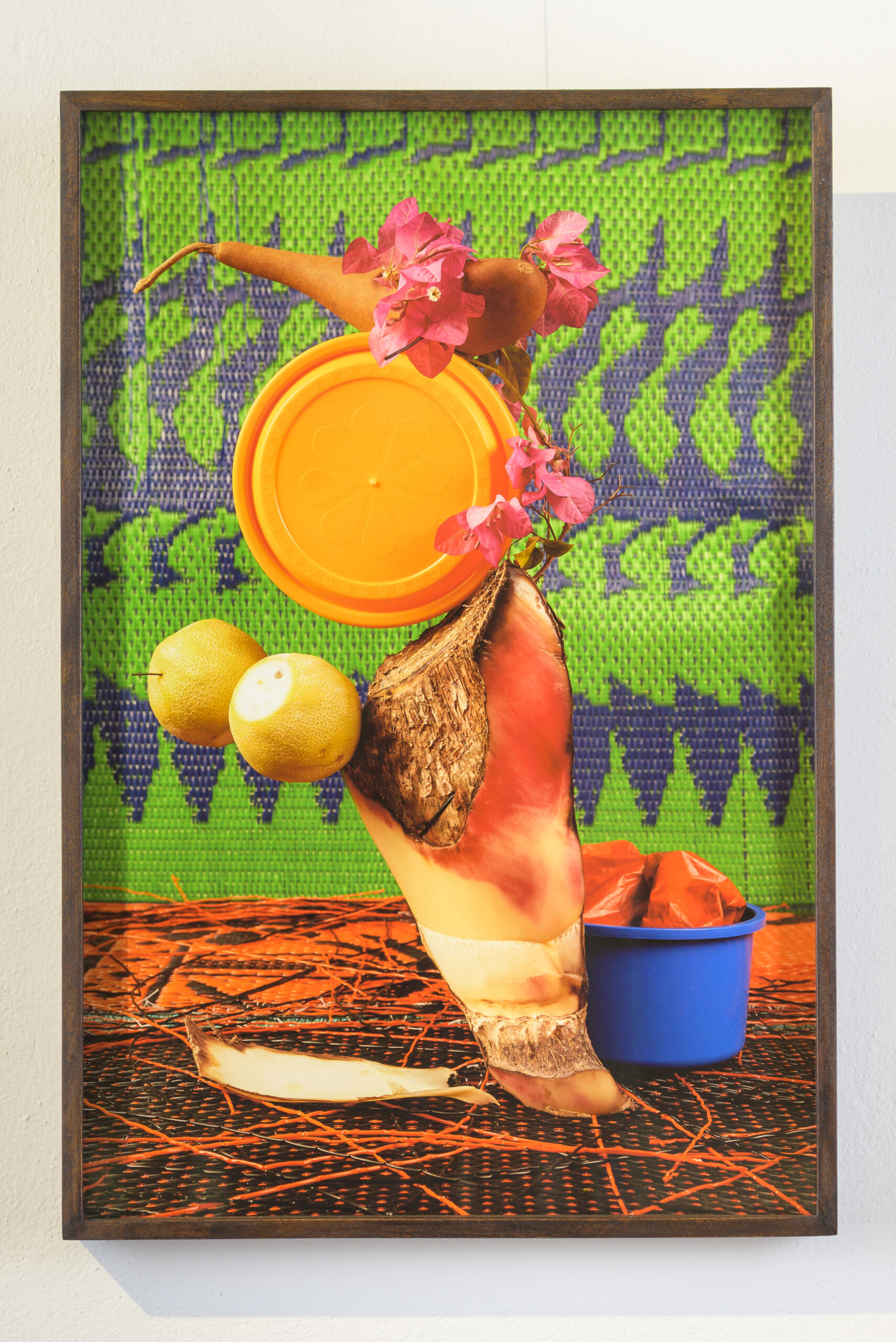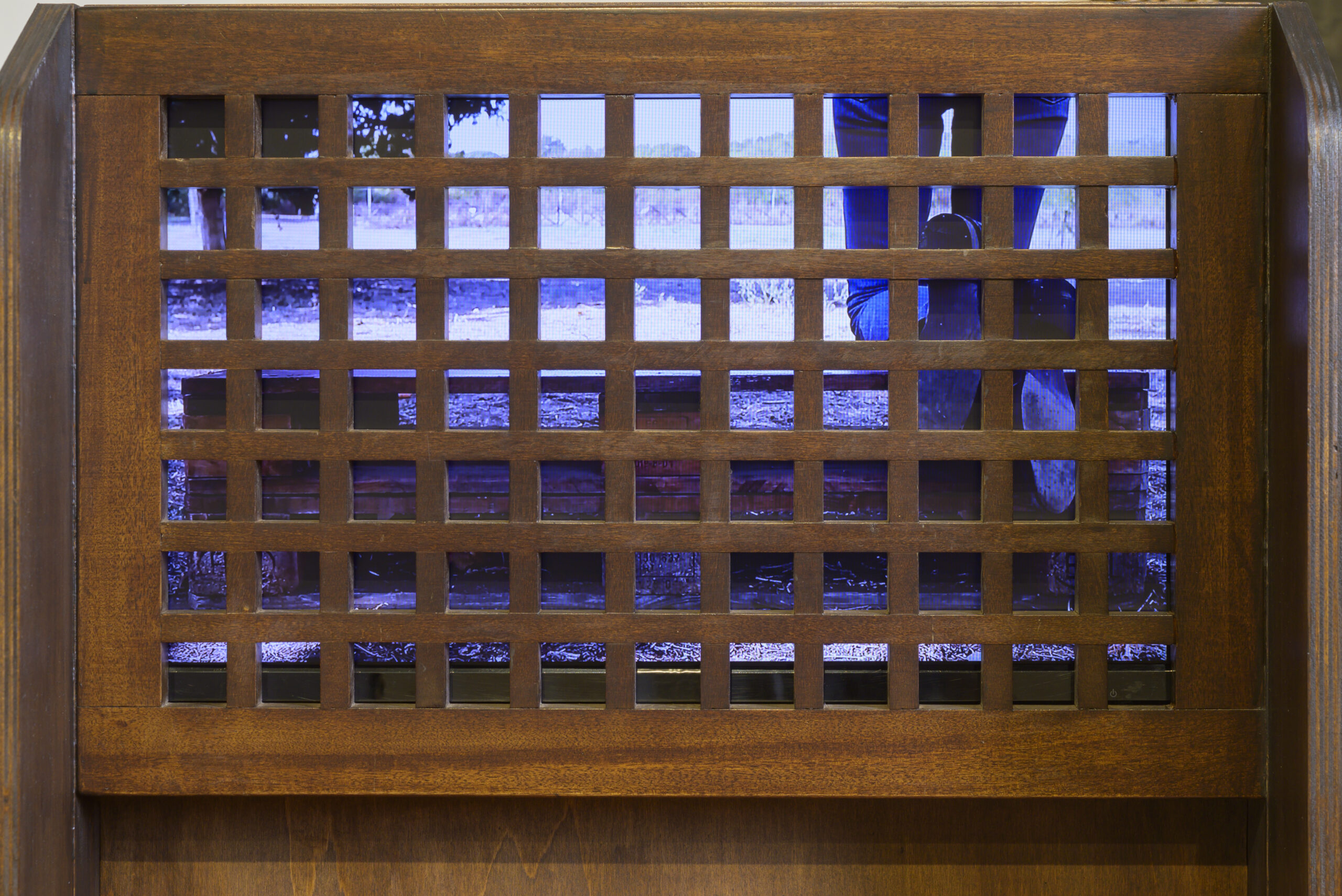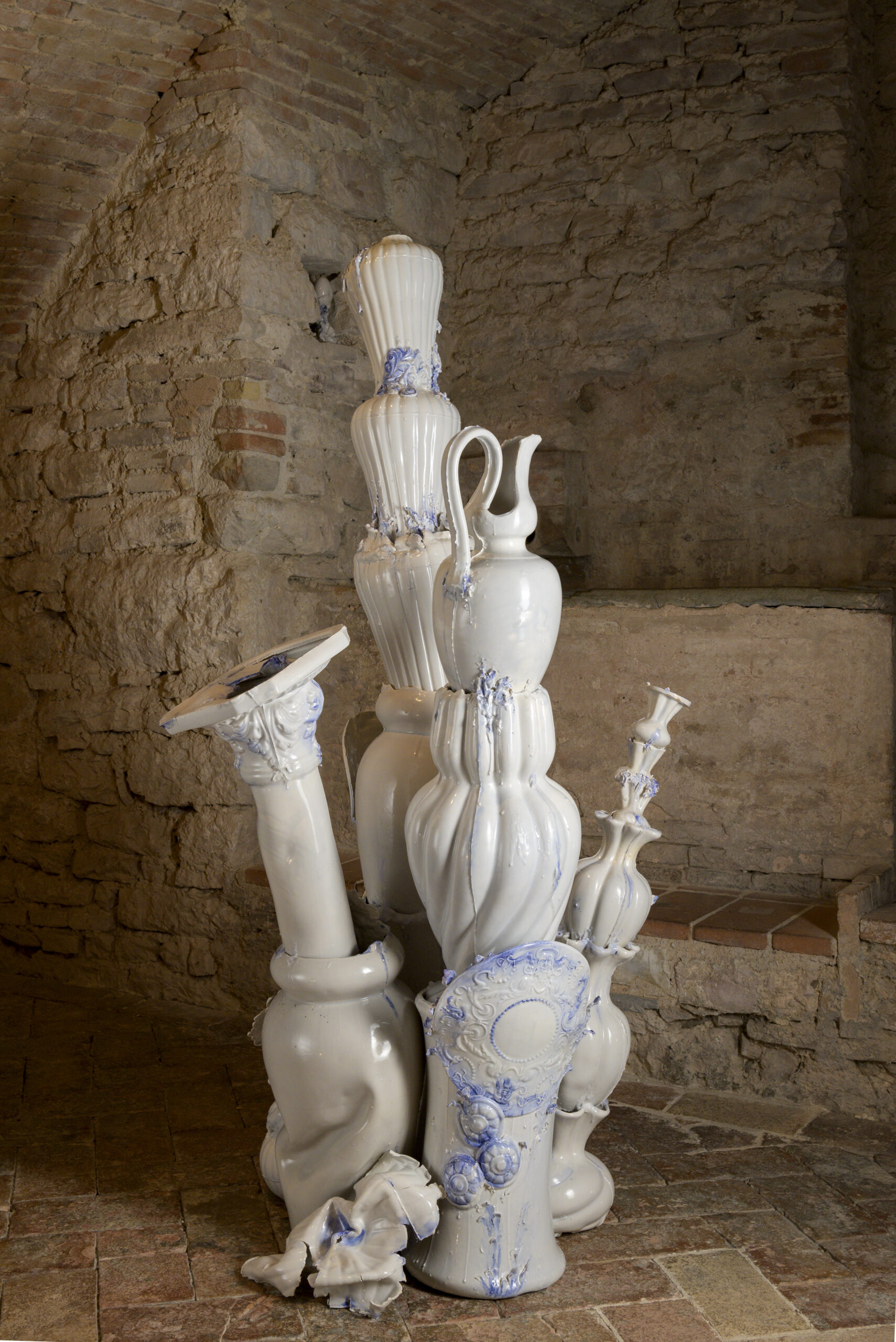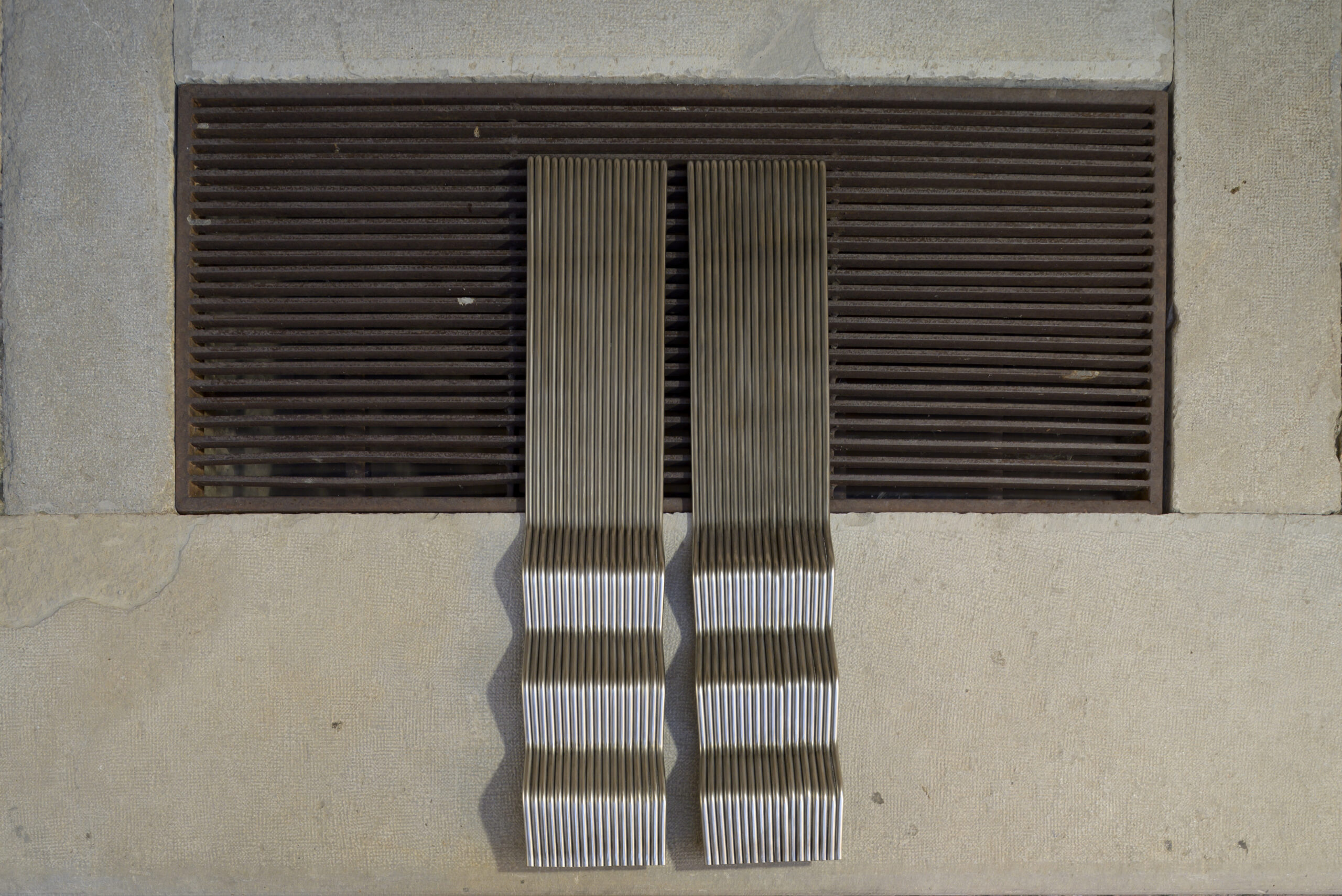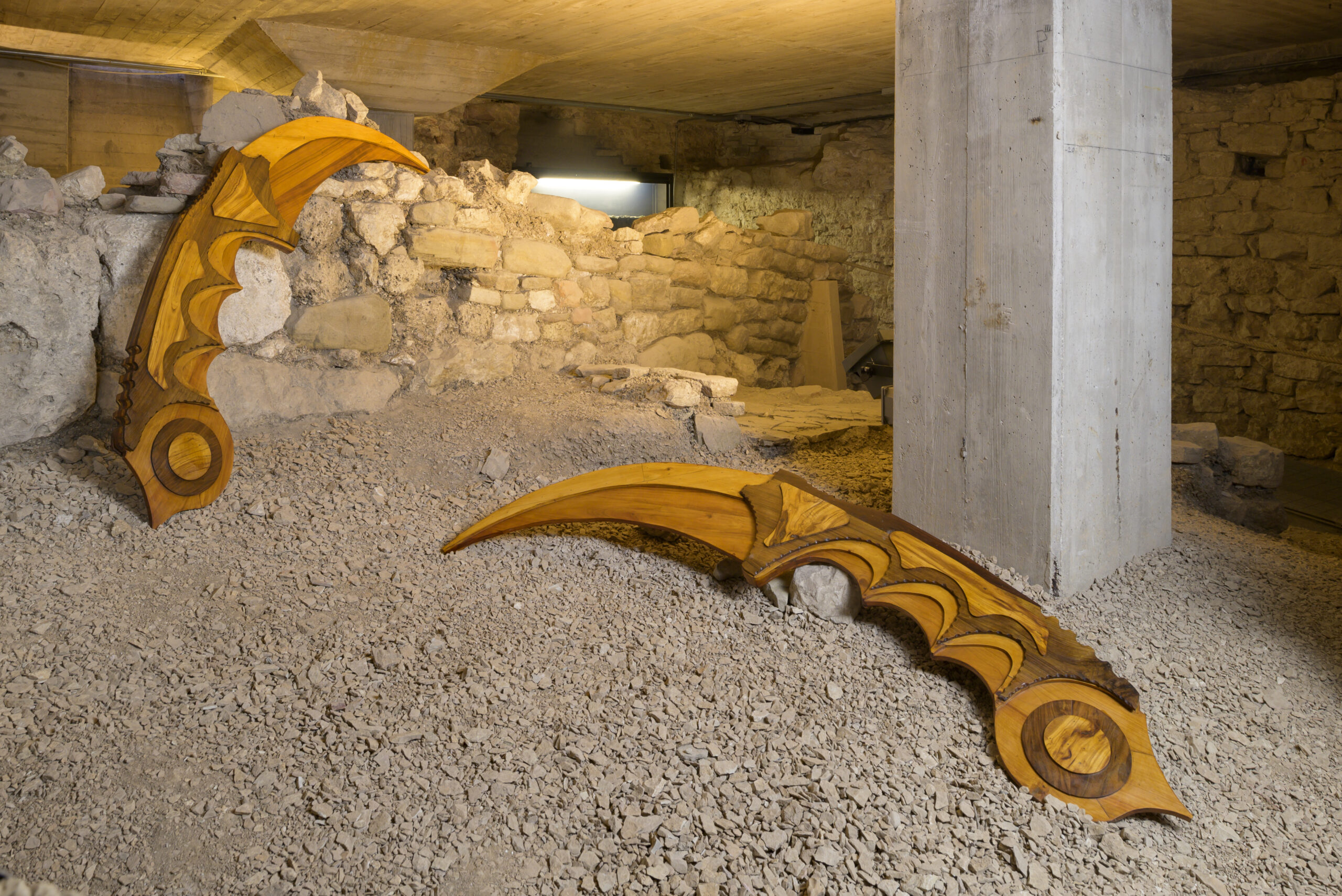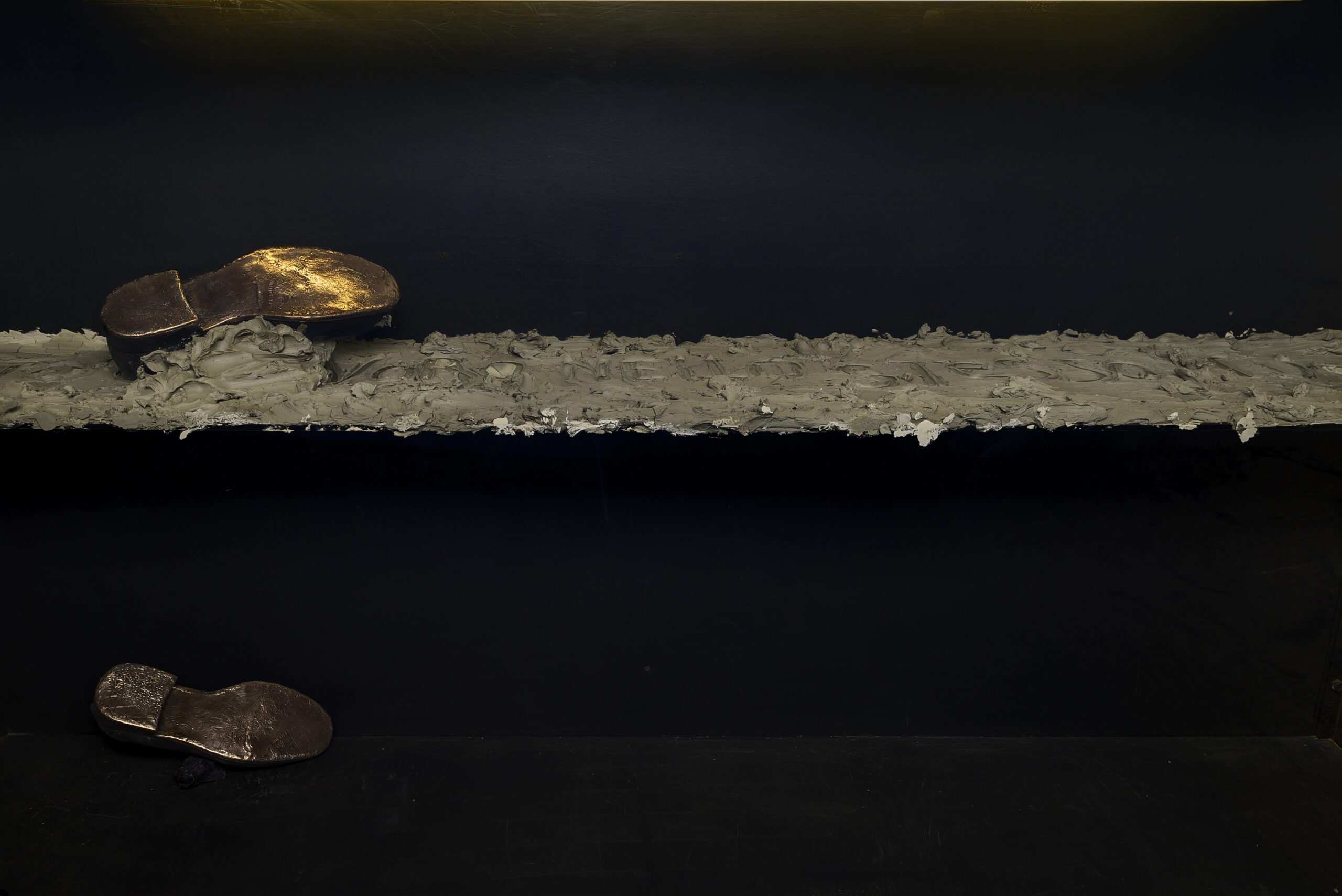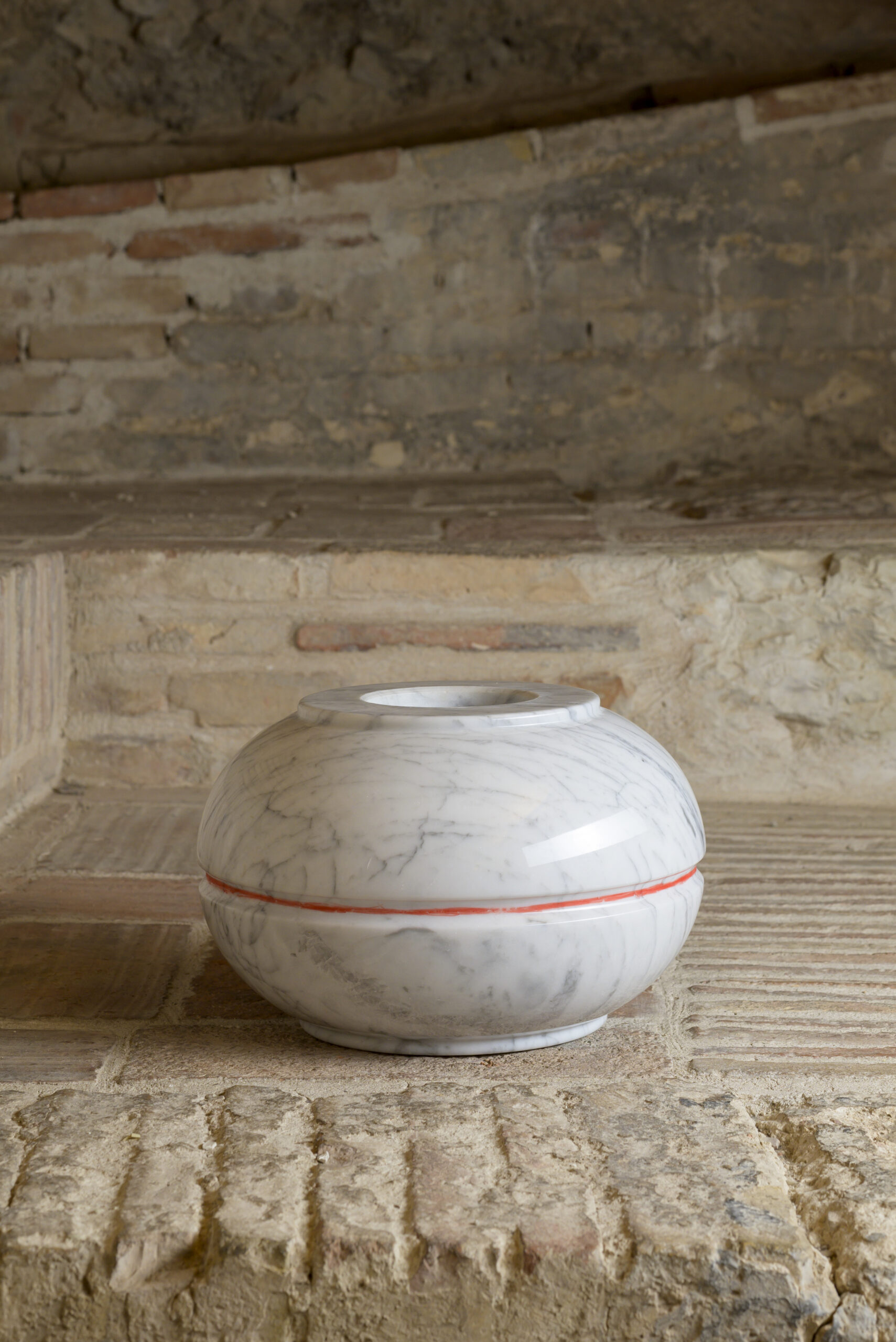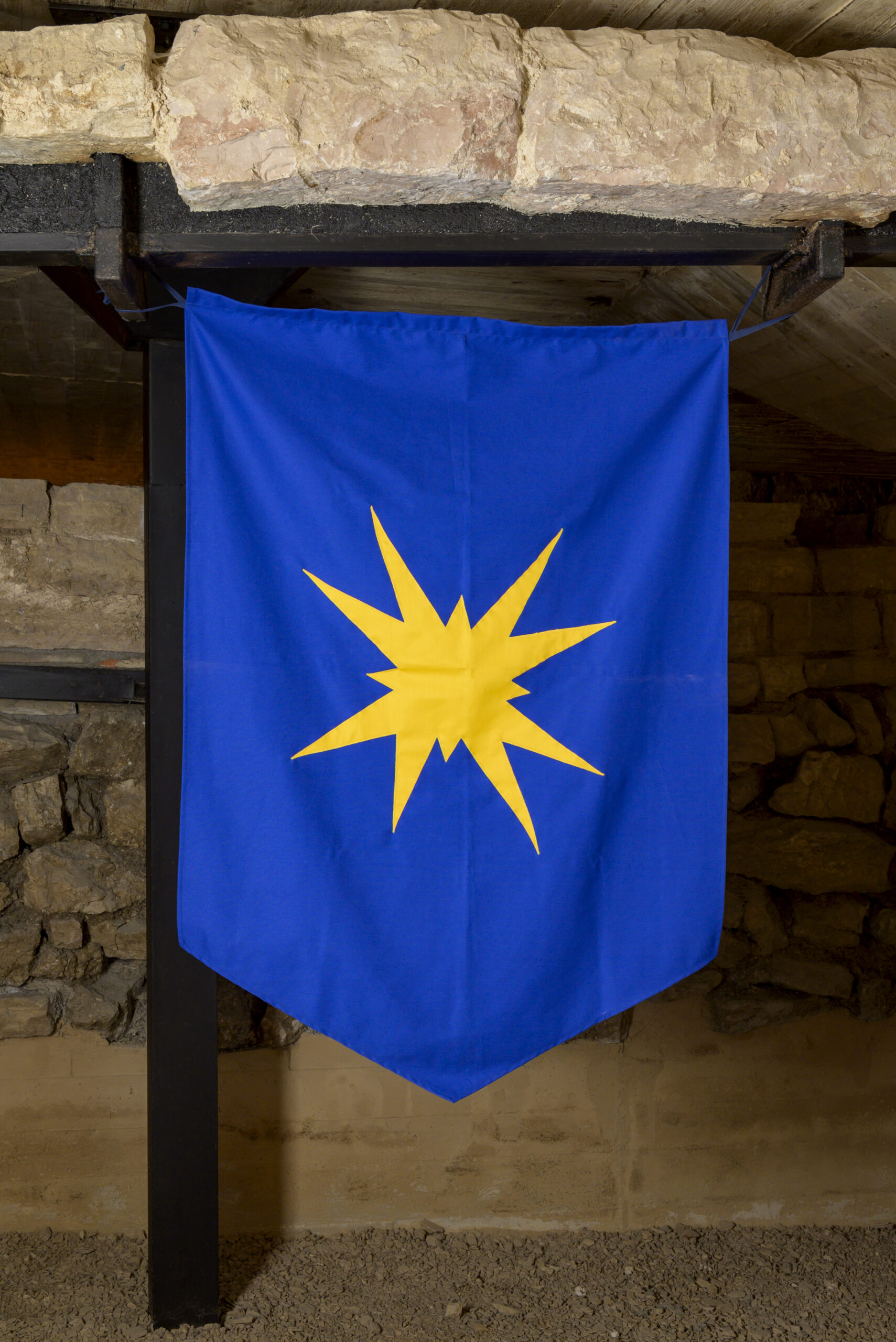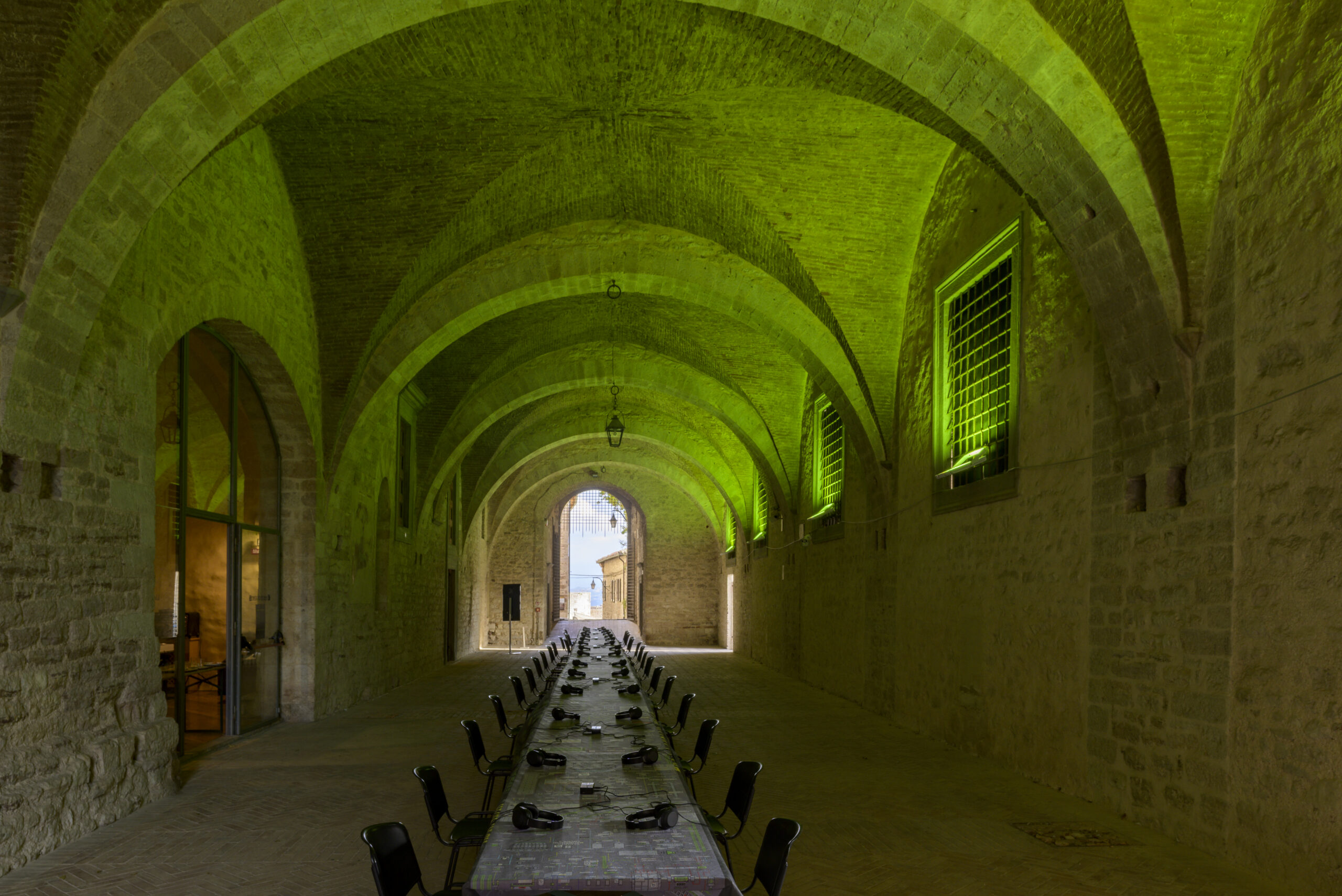A CONTEMPORARY ART ITINERARY: XXVII BIENNALE OF GUBBIO
The 27th edition of the Biennale of Gubbio challanges the ability of contemporary art to reactivate and reinvent the relationship with the territory and with the iconic places that enclose its genius loci. Therefore, works were proposed to establish a dialogic relationship with ancient monuments and knowledge, also with the intention of giving meaning and significance to contemporary existence by nourishing it with this relationship with the past. The connection with the territory and its social and artistic history, particularly the medieval and Renaissance periods, the choice to give shape to this connection by involving the community and its artisans in a relationship with contemporary artists, demonstrates the transformative and visionary power of art. It also represents the desire to give meaning and role to the artist, who is now predominantly relegated to the margins of a society that in the past contributed to telling and constructing the world’s vision. The XXVII Biennale di Gubbio calls upon the new contemporary narrative of reality by Italian artists of the latest generations, who have the opportunity and responsibility to challenge the masters who have defined the history of Western art.
IMAGINA
The title of this edition, “IMAGINA”, tells the story of the relationship between the artist’s imagination and its ability to activate the imagination of people. The exhibition is developed in seven sections spread between Palazzo dei Consoli and Palazzo Ducale. The goal of IMAGINA is to present the best emerging Italian art scene, to experiment with new forms of contamination, and challenge artists to engage in a dialogue with the history of the city and its different souls. In the various sections, artists can interact and collaborate with the local community, including master artisans, creating new works or proposing already-existing ones to address specific themes.
The seven sections are:
-MEDIOEVO AL FEMMINILE (MEDIEVAL FEMININE): the transcendent and absolute strength that characterized European medieval civilization for centuries.
– LA MISURA UMANA (THE HUMAN MEASURE): the centripetal power of the Renaissance humanistic idea.
– LA QUESTIONE DELLE LINGUE (THE QUESTION OF LANGUAGES): the relationship with an ancient and mythical past represented by the Iguvine Tables.
– TRA ORIENTE E OCCIDENTE (BETWEEN EAST AND WEST): the fascination for the ability to interact with great exotic cultures, such as the Tibetan collection of Vivian Gabriel.
– FOTOGRAMMI IN QUADRERIA (FRAMES IN THE GALLERY): the iconic and visual power of the treasures kept in the art gallery of Palazzo Ducale.
– GENIUS LOCI: The geometric and essential architectures of the site-specific section of Palazzo Ducale.
– CORPORAZIONI CONTEMPORANEE (CONTEMPORARY CORPORATIONS): The living history of craft universities that, through artistic wisdom, bring a centuries-old history into the present.
PALAZZO DEI CONSOLI ITINERARY:
- MEDIOEVO AL FEMMINILE
- LA QUESTIONE DELLE LINGUE
- TRA ORIENTE E OCCIDENTE
MEDIOEVO AL FEMMINILE SECTION: it is the section displayed in the Arengo Hall of Palazzo dei Consoli, a symbol of the administration of the Gubbio municipality and one of the most solemn urban achievements of the Middle Ages. The place has a strong male identity: only men were members of the Council of the People, and the 8 consuls who lived and performed their government functions in the palace were also exclusively men. To reverse this connotation, 8 Italian female artists under 35 have taken possession and reinterpreted this space. This transition establishes a connection from the heavens to the earth, from the male symbolism to the female one, creating eight works of art inspired by medieval Gonfalons that, with a length of 5 meters, descend from the vault of the Arengo Hall.
SELF-PORTRAIT by Sveva Angeletti. The artwork is born from the interaction between a series of photographic images and the application of AI “Seeing AI”. Developed by Microsoft to help visually impaired people interact more easily with their surroundings, the application uses the camera to recognize objects, people, text and to interpret the images by providing captions. In this case, the self-portrait is captioned as “A HAPPY 31-YEAR-OLD WOMAN.”
DESERT MOTHERS by Bea Bonafini. The artwork combines traditional and digital techniques with historical and social narratives. Desert Mothers intertwines the stories of Mary Magdalene and Mary of Egypt, two prostitutes who sought their own redemption in the face of this stigma. The artwork imagines what was considered a flaw in their society as an act of freedom, a transgression free from patriarchal connotations. Traditionally, both Marys were depicted with long flowing hair covering their nudity; here, the hair becomes a sort of shield made up of primary elements, with fiery red strands on one façade and blue strands on the other, symbolizing the soothing power of waterfalls.
LICHENARIA by Ambra Castagnetti. The banner represents two female figures, one young and one old, standing by a lake and at the foot of a mountain, involved in what seems to be a ritual dance, with the older woman guiding the way. Above the two figures hovers an image that appears to be an emanation of enchantment, representing the biunivocal relationship between the physical and political environment and the body.
FRAGILE FANGS by Lucia Cristiani. The banner depicts a human figure with disproportionate fangs, which are also fragile. For the artist, the observation of human dental apparatus, with its involution, represents the adaptation process of human beings to new habitats and conditions that have regressed their animality. However, this animality resurfaces, though weak and unfit, with protective instincts in moments of crisis.
PAYSAGE CORPOREL- ELLE N’EST PAS DERACINEE by Binta Diaw. The artwork is taken from the photographic series, Paysage Corporel. It depicts two mirrored hands rooted in the earth, alluding to the roots of dense mangroves and their harmonious development, symbolizing the vital ecosystem of relationships and the foundation of existence.
FIREFLY by Federica di Pierantonio. The main theme of the banner is water, inspired by the Fons Arenghi, a gushing fountain located on the main floor of Palazzo dei Consoli. Water serves to address the theme of power and its dynamics through the symbols of flow and cascade. The setting is virtual, obtained by photographing one of the virtual worlds in the video game The Sims 4, which includes the avatar present on both sides of the banner, on different scales.
SIRIO by Valentina Furian. Sirio is a star in the Canis Major constellation and represents the open jaws of a dog. It is a familiar and customary image, but altering the scale in the artwork leads to a different perception, transforming the familiar into something terrifying and monstrous that instils fear.
NARRATIVE OBLITERATION by Giulia Mangoni. At first glance, the surface of this banner appears to be simply decorative, but it actually represents the historical binary in which men and women have clashed, especially in relation to power: powerful, speaking men and sacred, mute women. Its creation contributes to clarifying this dynamic: a first layer of fabric represents masculine gestures and gazes, serving as the background and context. On top of it, there is a layer of acrylic representing feminine sacred gestures and gazes, primarily associated with images of Madonnas.
LA QUESTIONE DELLE LINGUE SECTION: the installation is inspired by the presence of the Iguvine Tables, which are among the most important ritual texts of classical antiquity. The seven bronze tables, with their 4365 words, were a manual of rules to be followed in the rituals that connected the Umbrian community to the divine. This function of the tables is perfectly related to the research of the collective art group, Numero Cromatico, which includes different experiences, from visual arts to design and neuroscience. They interpret language, even new and generated by artificial intelligence, as a path of connection with the concept and meaning of the future, a deep stimulus for the exploration of existence.
GUARDIAMO INSIEME IL CHIARORE DELLE TENEBRE by Numero Cromatico. The installation consists of a series of new artworks featuring contemporary inscriptions on monochrome plastic material. The texts are derived from the book ” Il Futuro è qui da qualche parte” and are generated with the help of an artificial intelligence called “Statements of a New Humanity,” which Numero Cromatico has trained and nourished to write thought-provoking texts on the future of humanity.
TRA ORIENTE E OCCIDENTE SECTION: The interactions between East and West are manifested in the religious and spiritual themes that are referred to by the presence of the Vivian Gabriel Collection at Palazzo dei Consoli. This collection consists of objects of Tibetan, Nepalese, Indian, and Chinese origin, including ritual materials and musical instruments used in certain aspects of the religious life of the Tibetan and Indo-Nepalese population. The artist Namsal Siedlecki interprets this collection with a sculpture made of sulfur, a substance dear to alchemists with strong spirituality connections whose ever – evolving life cycle alludes to the idea of creation and transformation.
UGOLINO by Namsal Siedlecki. The artist draws inspiration from the story of Count Ugolino, as told by Dante in the Divina Commedia . After seeing his children die, Ugolino, in agony, nourished himself with their bodies, symbolically feeding on his own future. The artwork presents a portion of a sculpture by Auguste Rodin from 1881, reproduced in sulfur, representing one of the Count’s children. Sulfur is a symbolic element of putrefaction and digestion, directly recalling the story narrated by Dante.
THE SECTION OF PALAZZO DUCALE:
- HUMAN MEASURE
- GENIUS LOCI
- FRAMES IN PAINTING
- CONTEMPORARY CORPORATIONS
HUMAN MEASURE: is the section set up in the Hall of Honor of Palazzo Ducale, a symbolic place of the Renaissance soul of the city which refers to an anthropocentric view of reality. The values and ideas of the Renaissance have inspired the works of eight artists, eight free-standing sculptures that rise from the ground towards the sky. Each of them explores new perspectives on history but also, and above all, on the present.
GROWING IN LACK by Giulio Bensasson. The work has a monumental character, it is a five-meter high column, decorated with low relief grotesques. The vegetable and floral forms have been obtained by digging the body of the column, so they are recognizable by the shape of an emptiness, a lack. The celebration of abundance, ostentatiously displayed by the grotesques in Renaissance noble palaces, is transformed into a celebration of lack. The column loses its meaning of stability and support and becomes a witness of instability and uncertainty.
VISIONARIES by Ruth Beraha. Visionaries is the title of a series of hand-painted ceramic sculptures representing eyeballs. Resulting from a reflection on the mystery and power of the gaze, the surreal and dreamlike sculptures force the visitor to take on the role of the object being observed, the victim of an unwanted, imposed, and non-consensual gaze, reversing the usual perspective.
THE SHADOW by Antonio della Guardia. The mouse, the instrument of work and virtual interaction with the world, is transformed, with the addition of three blown glass claws, into the paw of an imaginary animal with aggressive features. The title of the work adds an important clue to understanding the point of view expressed by the author: a threatening shadow can hide behind the improper use of technology.
PRAYER by Lucas Memmola. The wax sculpture is inspired by the limestone formations that originate in nature from the union of stalagmites and stalactites. This tension between low and high becomes, for the artist, a metaphor for the encounter between man and the divine through prayer. The sculpture is made from the discarded remains of lit candles, collected by the artist in a place of worship. This increases the symbolic value of the work that absorbs the dreams, desires, hopes, and anxieties of those who, through that ritual act, have turned to the divine.
CABBAGE HEADS by Serena Vestrucci. On the ground, isolated, lie Heads of Cabbage, bronze sculptures carved from life-size casts of four varieties of this vegetable (red and green cabbage, broccoli, and cauliflower). On the surface, human heads with sad and resigned expressions can be seen, small anti-monumental portraits abandoned like ancient ruins. The artist reflects on the ordinariness
GENIUS LOCI: is the section of site-specific works, dedicated to rediscovering the spirit of places, their deepest essence, reinterpreted through contemporary artistic practices. The visiting route concerns some environments of the palace that in the past marked and characterized the daily life of the duke and his court. The works have been conceived directly for the place that hosts them.
Y (LUCA), Y (PAOLO), Y (ANONYMOUS), Y (ALESSANDRA) by Paolo Bufalini. For the Dining Room of the palace, a busy space and a passage between court life and the domestic environment, the artist highlights the transformative power of art and places. Inside glass containers shaped like Y’s, milk teeth belonging to the four people mentioned in the title of the work are immersed. The acidic solution will lead to the corrosion and dissolution of the teeth, which will disappear in visual terms but not chemically. The digestive process activated in the work evokes the original function of the exhibition space, and more generally, the work refers to the concept of invisible presence and transformed time.
CAULUM by Helena Hladilova. The work is exhibited in the Study of Federico da Montefeltro, a place of reflection and contemplation but also a celebration of the duke’s personality. The artist is inspired by the image of a caged parrot and the wood inlay technique with which the environment is decorated. Caulum is a sculpture made with interlocking different marbles that represents a parrot, freed from the aviary and the second dimension for a contemporary interpretation of the relationship between man and nature.
TORNEREMO ANCORA by Lulù Nuti. The artist went in search of the genius loci of the Hanging Garden of the palace and discovered that there was once a fountain there. Her intervention evokes this testimony, through the construction of a fountain that extends deep into the ground, instead of emerging in the center of the garden. Its operation is also reversed, the water does not gush from the center outward but is swallowed by a central hole. The present and past energies flow and mingle, contaminating each other.
ELLIOT by Gabriella Siciliano. The presence of a small artificial cave towards the mountain, in the secluded areas of the ancient Cisterna of the palace, inspired this intervention. The artist wanted to give the spirit of the place the body of a plush dragon, Elliot, with sweet and innocent features. Because of this nature, he was driven out of his natural cave and lives sheltered in the palace cave waiting for visits. Sequins and glitter cover the plush lining, signifying that the fragility, tenderness, and sincerity that Elliot embodies, and that are dormant in human beings, deserve a place of honor.
FRAMED PHOTOSTILLS
FRAMED PHOTOSTILLS is the section set up in the corridor of the mezzanine and in some rooms of the duchess’ apartment. The video and photographic works of the artists dialogue with the paintings in the Ducal Palace’s Picture Gallery, proposing new forms of visual and sonic identity.
MON RIRE EST CASCADE by Anouk Chambaz. The video installation reproduces the laughter of seven contemporary women evoking a legendary encounter between seven great feminists from the 1970s. They are co-founders of the group DonnexStrada, an association fighting for women’s safety, against violence, and for a support network. Their laughter, free, fearless, and inclusive, is a contagious resistance, a joyful struggle that concerns and involves the body of the viewer. Women’s laughter, even forbidden to them in the past, here re-appropriates its role as interpersonal exchange, shared knowledge, and group consciousness. It is a site-specific work that the artist contrasts with the adjacent collection of portraits of illustrious men. It also aims to evoke the presence of women in these environments in the past, when they were used by the duchess and her noble court.
BANANA TREE, BOUGAINVILLEA AND GREEN by Lorenzo Vitturi. A contemporary still life dialogue with the works in the Picture Gallery depicting the same subject. The artist relies on pigment archival printing for a synthesis of his creative process that combines sculpture and photography. The source of inspiration for the exhibited work is the Balogun Market in Lagos, Nigeria, one of the largest street markets in the world, a perfect microcosm to investigate the social, economic, and cultural dynamics of a territory and, in general, a country. Here, the artist collected materials and objects that later became ingredients for sculptures and still lifes created in his studio. After being assembled, the materials were altered with pigments and paints, then photographed, printed, reassembled, and finally rephotographed. By assembling objects and exotic materials so different from each other, inserting in the background details of artisanal fabric textures, the artist perfectly evokes the atmosphere of the Lagos market, as well as its scents, smells, flavors, and colors. The banana, present in the work, is a cosmopolitan plant that well encapsulates the spirit of an increasingly interconnected world, having been brought, since ancient times, by Arab merchants everywhere, especially in Africa. The bougainvillea, with its blooms, is the plant of welcome, of hospitality, and therefore represents the same concept of openness and projection towards the world.
CONTEMPORARY CRAFTMENSHIPS
In Gubbio, craftmenships have always played a fundamental role in political life, and they are still a vital part of the Foundation of Arts and Crafts in the city: craftsmen operating in various sectors still masterfully maintain traditional material processing techniques. “Contemporary Craftmenships” is born in the IMAGINA project: seven artists develop and refine their ideas through collaboration with local artisans , taking inspiration from and representing the soul of the surrounding place. In the undergrounds of the Ducal Palace, six contemporary artworks blend with the pre-existing medieval structures.
Guglielmo Maggini’s Untitled (MY TITAN) in collaboration with Marzia and Matteo Fumanti. Ceramics, which have survived through the centuries, still remain one of the most fascinating forms of craftsmanship. In this context, the Fumanti Ceramics Workshop excels, collaborating with artist Guglielmo Maggini. The artwork is a combination of elements that, as a whole, could represent a tree, a totem, or a part of a root branching into the foundations of the palace. Maggini studies the molds initially made by Aldo Fumanti, the founder of the company, which are no longer in use, in order to rethink and bring them back to the present and the eyes of the new generations. With colors, brushes, and a kiln, the artist creates his work, playing with materials. In this case, ceramics and resin merge together, creating a harmonious composition.
James Hillman, in collaboration with Andrea Martinelli from the Craftmenship of Blacksmiths, designs and creates Fosso, a long stainless-steel waterfall that penetrates one of the palace’s grids and reaches its basement. Through the use of his hands and mechanical production processes, he creates his works and often builds specific machines in his studio to achieve his goal.
In collaboration with Romeo Marcelli from the Craftmenship of Carpenters, Francesca Cornacchini brings her work, Disarmament 2, to life, where she analyzes both physical and conceptual disarmament. From the 1400s to the 1600s, great craftsmen created important wooden structures for choirs, organs, lecterns, and episcopal seats, along with important carving and inlay works. Cornacchini takes inspiration from Federico da Montefeltro’s Studiolo for her creation and creates a pair of modern combat knives of giant proportions, nullifying their dangerousness and enhancing their playful aspect, like classic wooden toys, a clear message against violence. In the Studiolo of Gubbio, a place of arts and sciences, weapons become aesthetic and symbolic objects far removed from their original use: lances with lowered tips, armor in a niche, swords and maces displayed on shelves.
Diego Miguel Mirabella, in collaboration with Tiziano Francioni from the Craftmenship of Shoemakers, creates Clothing and Work in the Same Place. It is the bronze replica of a pair of the artist’s shoes, where a text written in negative by Mirabella creates a kind of imprint on the glass, like the one left by shoes on a shiny surface. A continuous wandering, the end and the beginning of a new journey.
Luca Grilli from the Craftmenship of Masons, Stonemasons, and Related Arts supports Lucia Cantò in the production of her work She. The title of the artwork, is a composite form where the two chosen stones almost seem like a treasure chest that reflects the surrounding light, the marble of Carrara, its bottom imaginarily observed but without perceiving its end.
Veronica Bisesti’s Where the Stars Land in collaboration with Manuela Marchi. It is an environmental installation made up of various banners spread throughout the historic center streets, with each one depicting a star. Each family with their banner forms a constellation, a point of reference for people and individuals to orient themselves but also a symbol of good fortune.
